Limited to the south by Central Portugal, to the north and east by the Spanish regions of Galicia and Castile and to the west by the Atlantic Ocean, Northern Portugal is also the most populated region, the second richest region in the country and responsible for half of the Portuguese exports due to its important industrial sector.
Northern Portugal offers to its visitors the best of the Portuguese identity: a wonderful gastronomy, welcoming people, cities, towns, authentic villages, breathtaking landscapes and much more!
In this travel guide, you’ll have the opportunity to discover the wonders of Porto and Minho, one of the provinces I love the most in Portugal. All of this in just 7 days!
Disclosure: This post may contain affiliate links, meaning i get a commission if you decide to make a purchase through my links, at no cost to you. Please read my disclosure for more info.
Northern Portugal travel guide (Porto and Minho province)
Sommaire
Day 1 – Porto
If you arrive to Northern Portugal by plane or train, then I suggest you start your visit to this region by the beautiful city of Porto, one of the most beautiful cities in the country, with a historic centre listed by UNESCO as a World Heritage Site.
In the first couple of days you don’t have to worry about hiring a car since there are many means of transportation in the city that will take you to all of the points of interest. Whether by metro, by bus, by tram, by train, by funicular or even on foot, you’ll have plenty of options to choose from!
The best place to start your visit in Porto city is at São Bento Train Station. By stepping foot inside this building inaugurated over a century ago, you’ll be astonished by the beautiful glazed-tile panels that embellish the main hall, depicting daily life scenes and events of Portugal’s history.
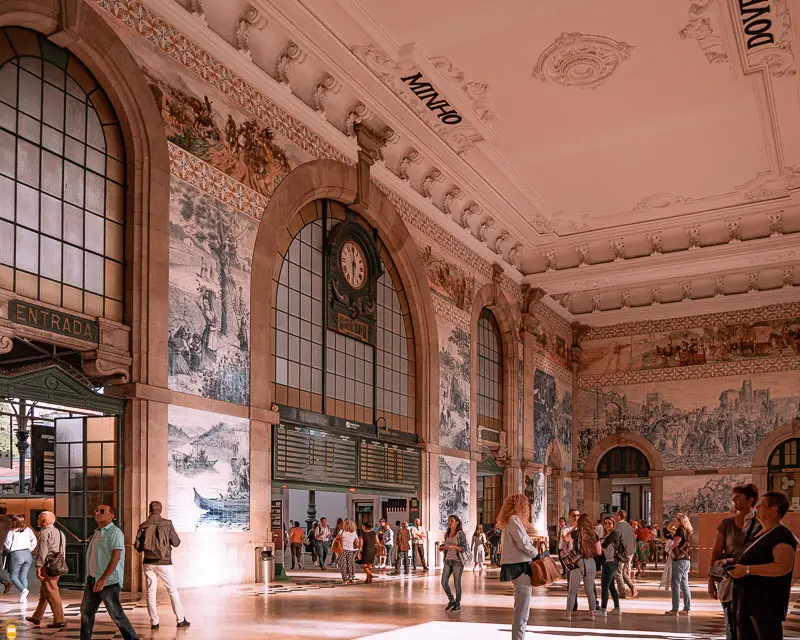
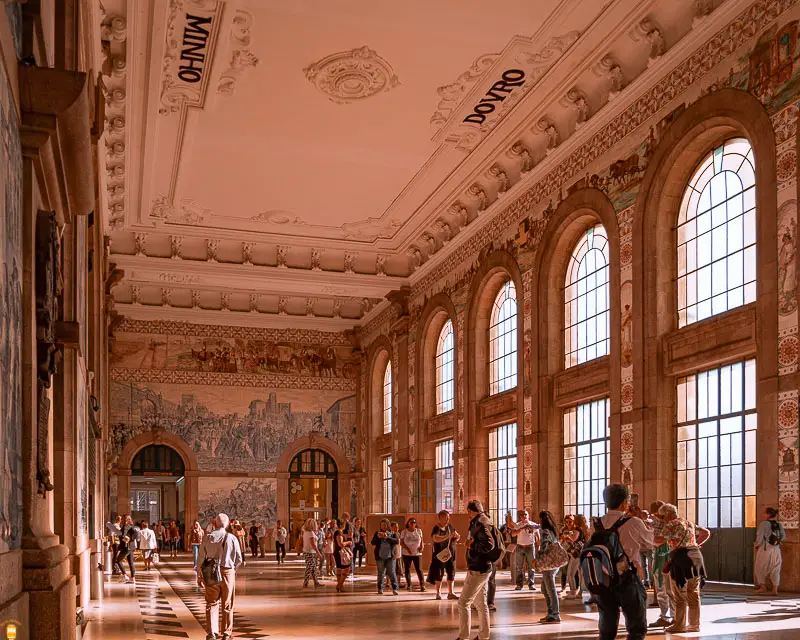
Next, walk up to the most commercial street in Porto: the street Rua de Santa Catarina. Here, you’ll have the opportunity to admire and enter in clothes, shoes and jewellery shops. Don’t hesitate to make a stop for a cup of coffee at one of the most charming places in the city, Café Majestic, once the preferred place for literary gatherings and others.
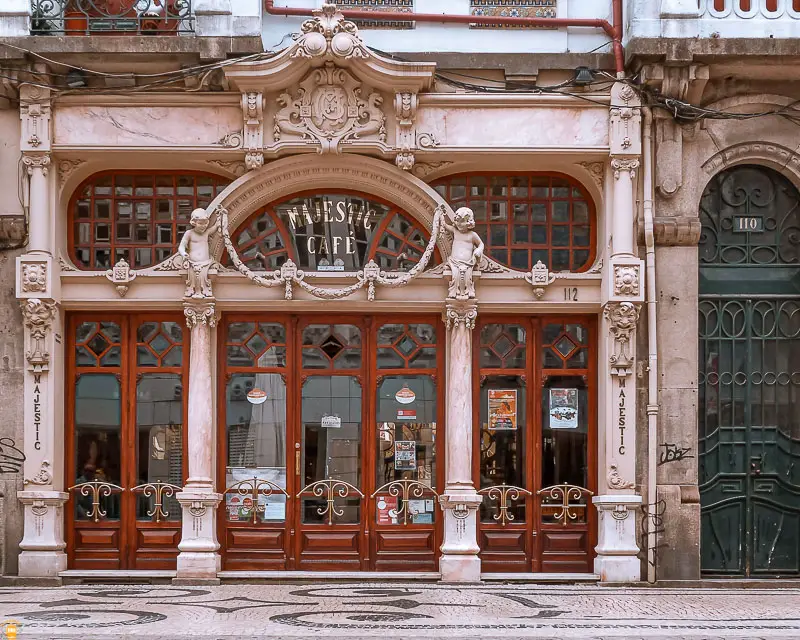
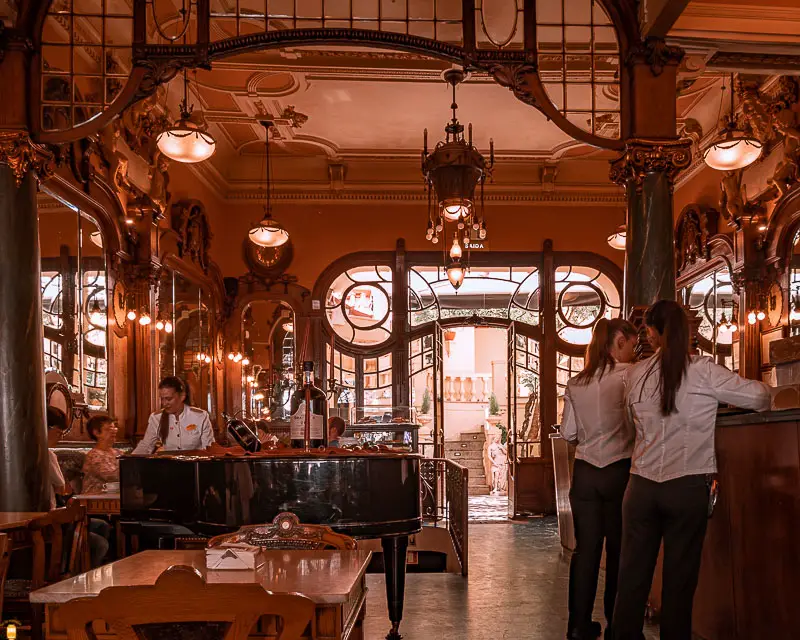
After your well-deserved break, continue your walk to the market Mercado do Bolhão. This is one of the best places for you to really feel the authenticity of the city’s inhabitants, a market with many stories to tell and many regional products to sell.
Information: this market is closed until 2021 for restoration works.
Next, make your way to the the beautiful avenue Avenida dos Aliados, where you can admire the majestic city-hall building. By looking to this building, there are certain things that stand out: the granite facade, embellished by some sculptures. The interior of this building is decorated with marble and granite.

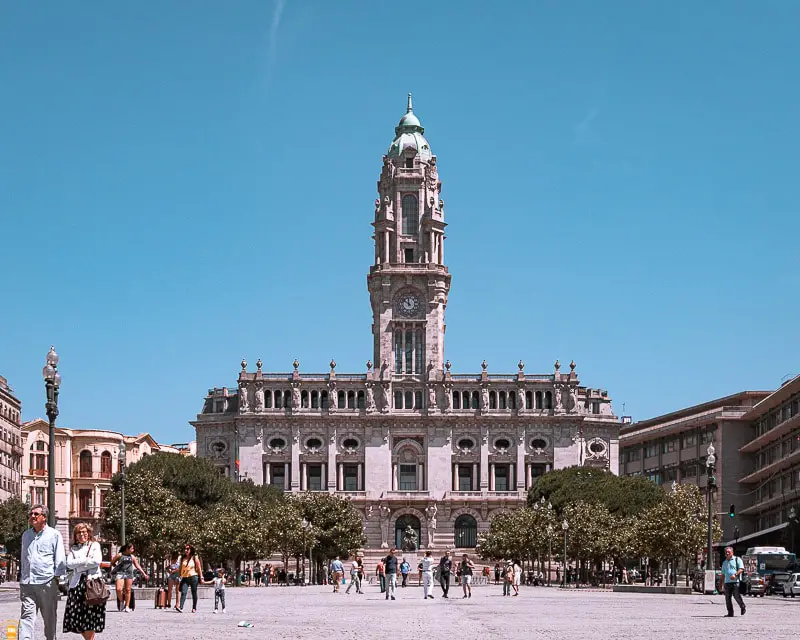
Your next stop is located at the top of the street Rua das Carmelitas and is one of the most visited places in Porto city – the beautiful bookshop Livraria Lello. This monument underwent some restoration works and is, since then, considered by many entities as one of the most beautiful bookshops in the world, and, because of this, it welcomes over a million visitors every year.
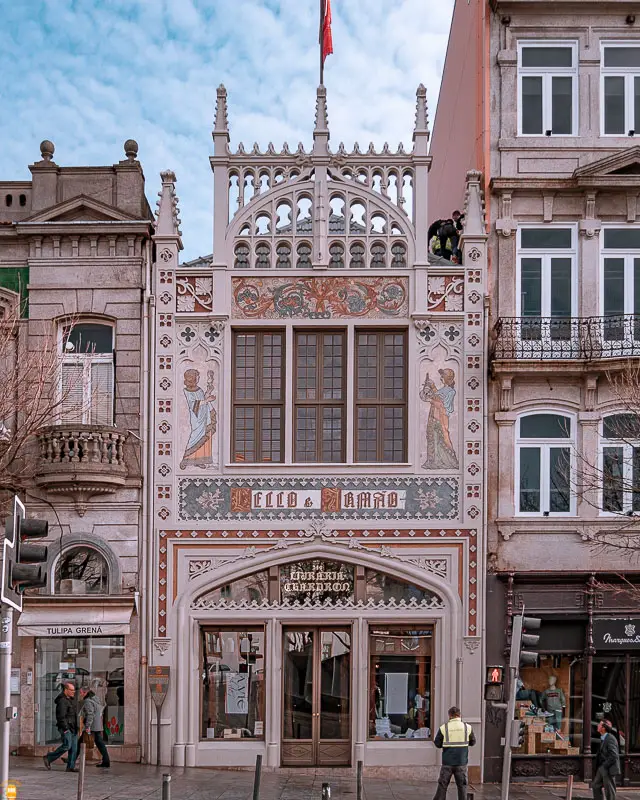
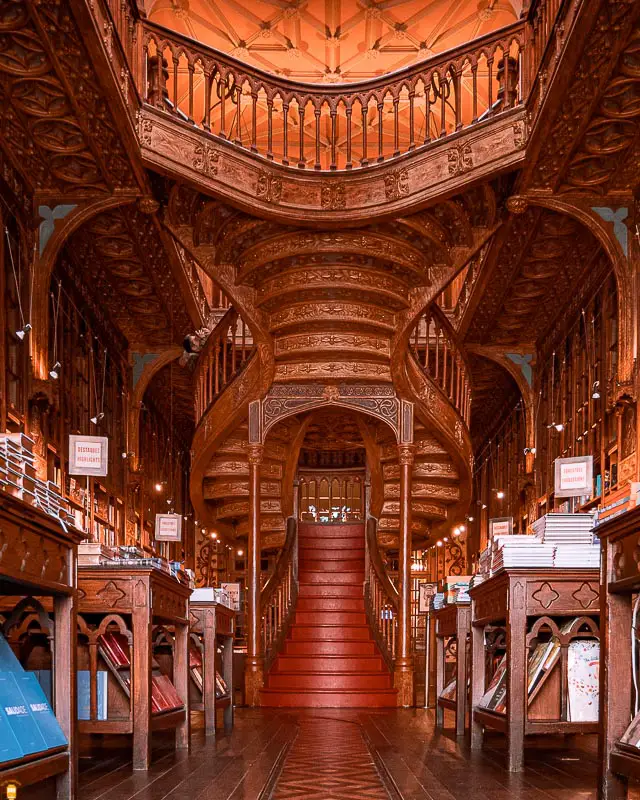
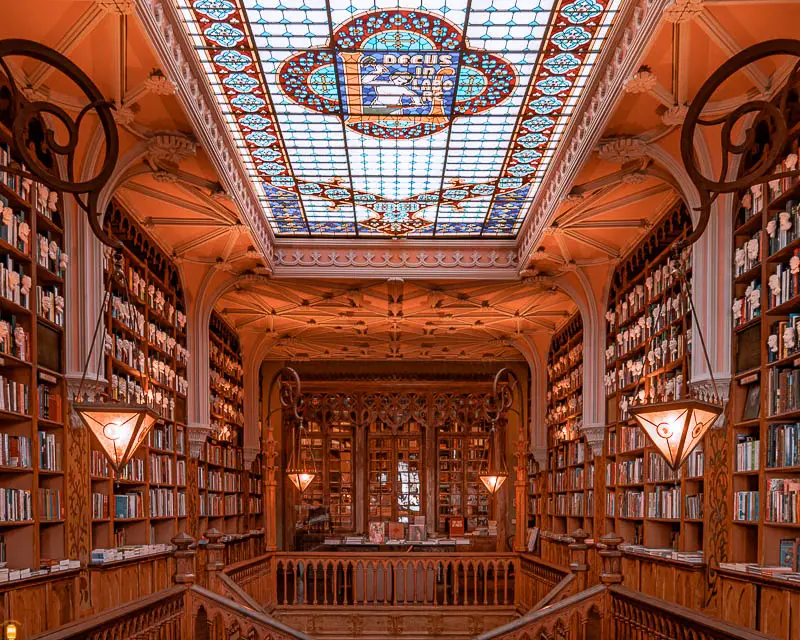
Information: you must pay to visit this bookshop but you can use the money to purchase a book.
After visiting Livraria Lello, continue your walk and go to a unique place in Portugal, where two churches are side by side: the church Igreja do Carmo and the church Igreja dos Carmelitas Descalços.
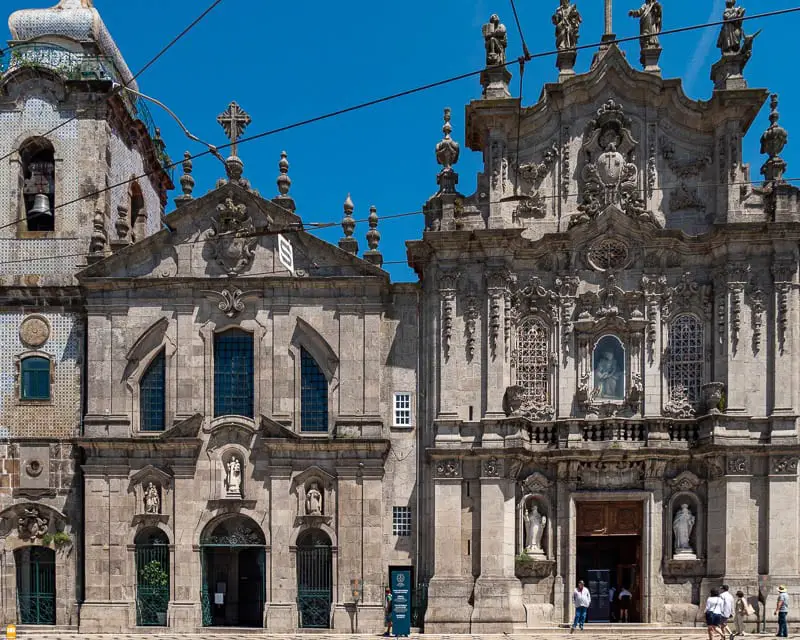
These churches were built in the 17th century (Igreja dos Carmelitas Descalços) and 18th century (Igreja do Carmo) and stand out because of their beautiful facades and for an amazing glazed tile panel facing the square Praça Carlos Alberto.
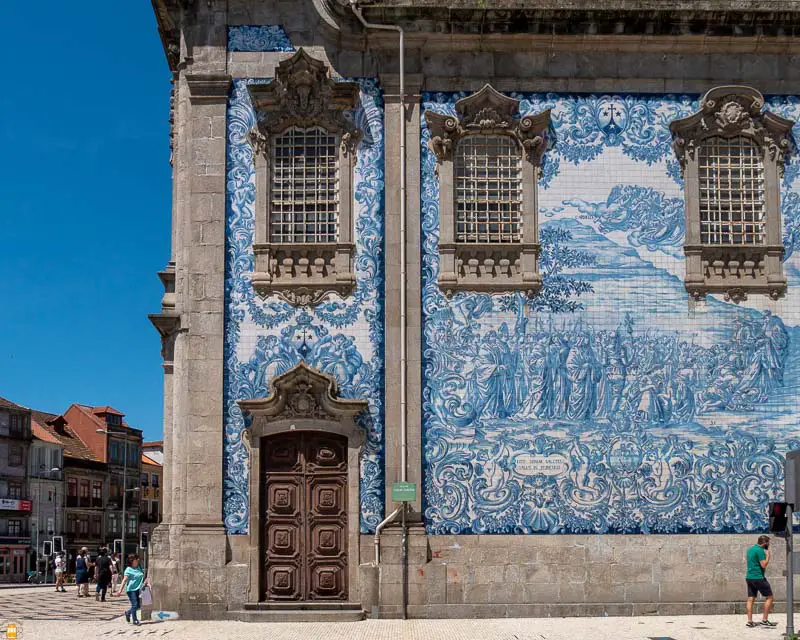
As a curiosity, you should know that these monuments are separated by the narrowest building in the city, known as the “Hidden House” (Casa Escondida).
Next, head to the landmark of Porto city and one of the monuments you can’t miss during your visit to Northern Portugal: the tower Torre dos Clérigos.
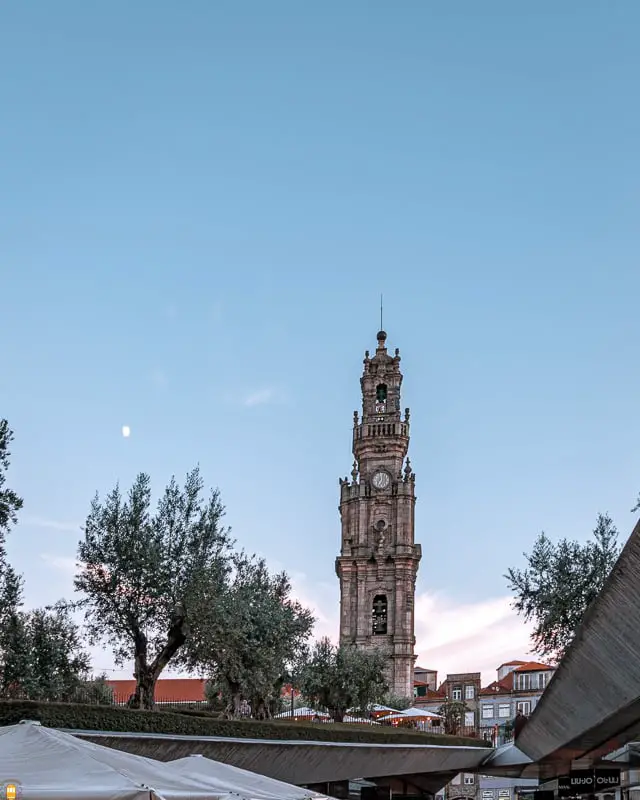
Make sure you climb the 240 steps of this tower to access the viewpoint that offers some of the most beautiful views over Porto city, Douro river and Vila Nova de Gaia – a unique experience you won’t want to miss!
Explore this monument and then head down to the beautiful palace Palácio da Bolsa. This building stands out in the historic centre of Porto and you’ll have the opportunity to admire its Neoclassic style while relaxing in the garden in front of it.
After admiring the facade of this palace, don’t hesitate to enter and take a guided tour so that you can enjoy the beauty of every hall and room.
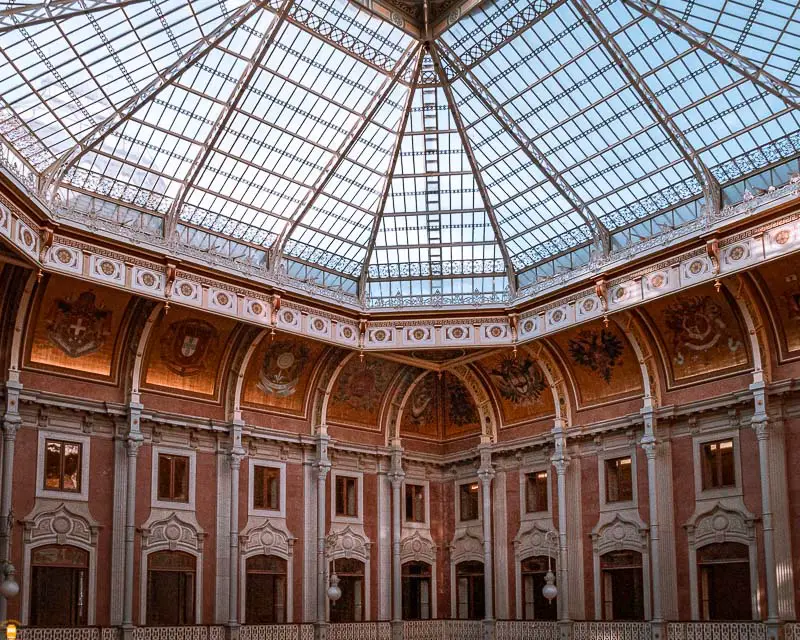
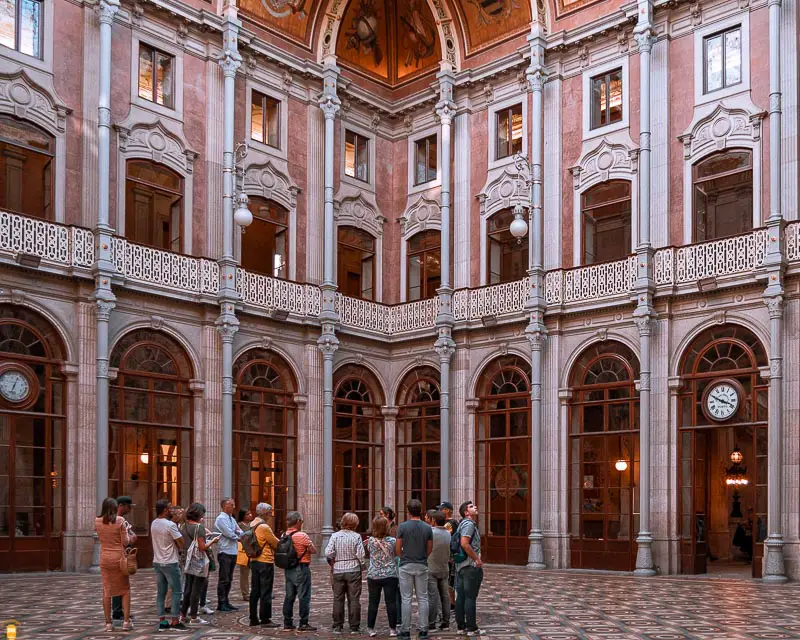
Next to Palácio da Bolsa you’ll find another religious monument worth visiting: the church Igreja de São Francisco. Considered by some as the most beautiful church in Porto, there you can be amazed with its interior, decorated with gilded wood, and its crypt.
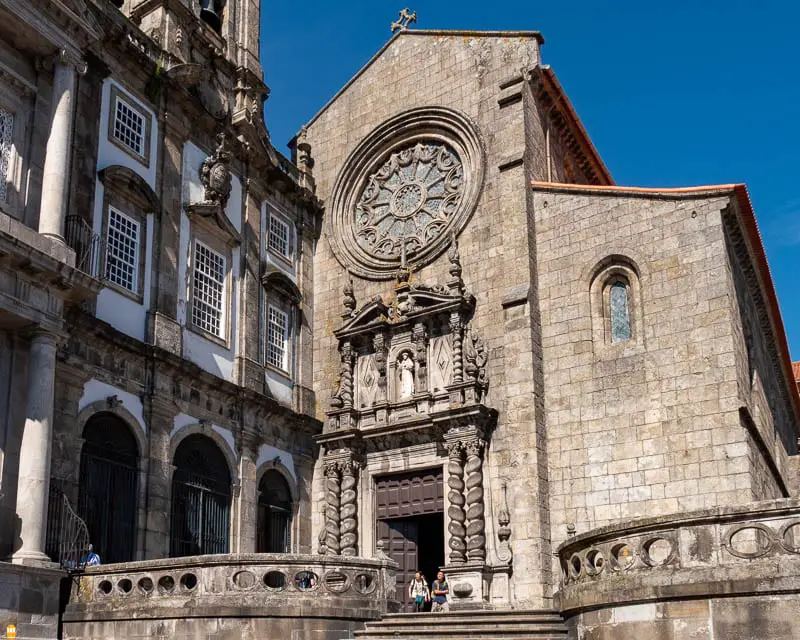
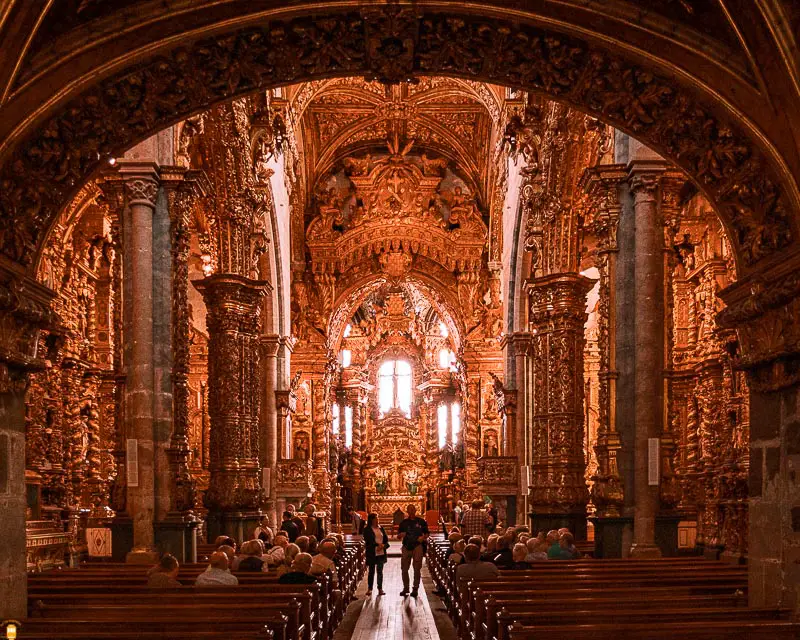
Continue your walk through the historic centre of Porto and go to one of the highlights of this tour, the Ribeira. This is one of the most authentic quarters in the city and here you can explore the alleys to really feel the wonderful atmosphere.
Apart from the beauty of its streets, take some time to relax at a terrace bar facing Douro river and admire all the surrounding landscape, including the magnificent bridge Ponte Luis I, built in the end of the 19th century.

To finish your first day of this travel guide in Northern Portugal and if you still have time, head up to Serra do Pilar viewpoint where you can enjoy the most wonderful sunset imaginable! This is one of the best viewpoints offering views over the historic centre of Porto – a must see!
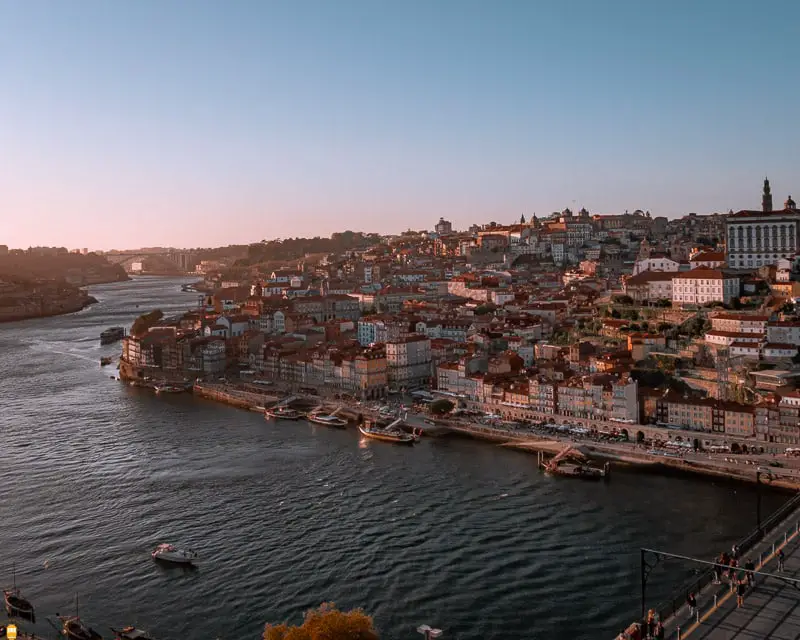
Information: do you want to discover the authenticity of Porto, visit places frequented by people from Porto? If so, book this tour and set out to discover the history, culture, traditions and authenticity of Porto residents. Start with a walking tour in the historic centre of Porto, listed by UNESCO as a World Heritage Site.
Afterwards, cross the bridge Ponte Luís I that will take you to discover the Port wine cellars where this world famous wine is stored. Discover one of the cellars and discover, on a guided tour, the history behind the origin and production of Port wine. This visit will end with the tasting of some varieties of this wine such as tawny, ruby and rosé.
But this 8-hour experience will only be complete with a dinner in a typical restaurant where you will have the opportunity to listen to fado live. Without a doubt, a unique experience!
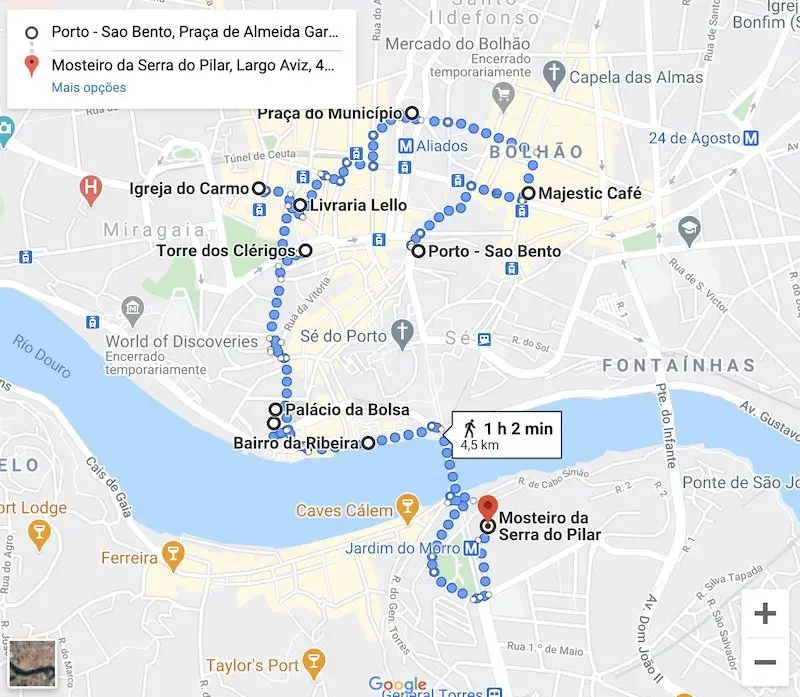
Where to sleep in Porto
Located in the historic quarter of Ribeira and with views over Douro river, the three-star hotel Ribeira do Porto Hotel has a typical bar and a reception available 24/7. Every room is elegantly decorated and has air-conditioning, television, wi-fi, a safe for laptops and bathroom with hairdryer.
The Artist Porto Hotel & Bistrô ****
The Artist Porto Hotel & Bistrô offers to its guests 17 spacious rooms with air-conditioning, television, a safe and a minibar apart from the bathrooms with all the needed amenities. Fun fact about this hotel is that it is a school-hotel for students of Escola de Turismo do Porto (Porto Tourism School).
Day 2 – Porto
If you didn’t have the opportunity to visit Serra do Pilar and admire the monastery up close, then I suggest you start your second day here. Take the metro towards Santo Ovídio and exit at Jardim do Morro station, then it’s a small walk to the monastery Mosteiro da Serra do Pilar.
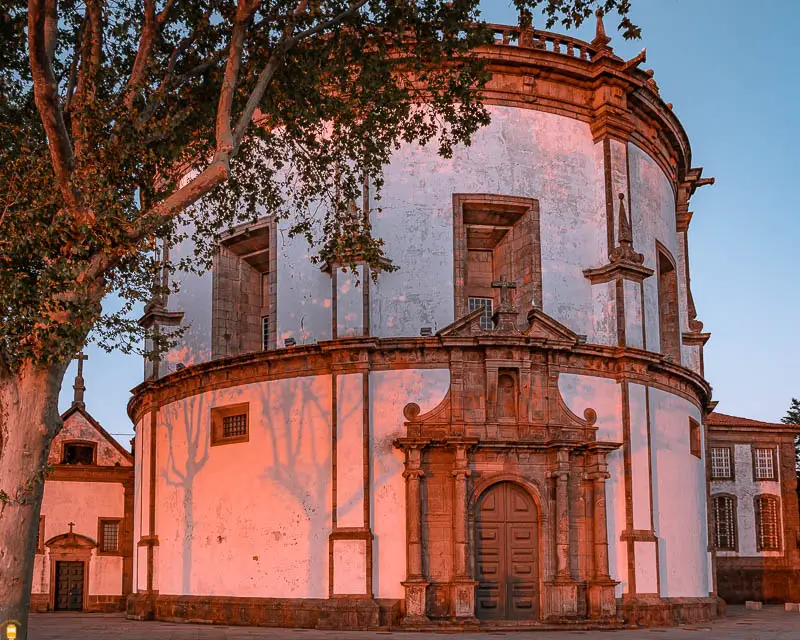
Next, head down the street Calçada da Serra or take the cable car at Jardim do Morro that will take you to the commercial area Cais de Gaia. Here, I suggest you explore Ribeira de Gaia and admire the view of Porto’s Ribeira; you’ll also be amazed by the typical rabelo boats that were once the means of transportation of Port wine barrels from the wine estates, upriver, to the cellars located in Vila Nova de Gaia.
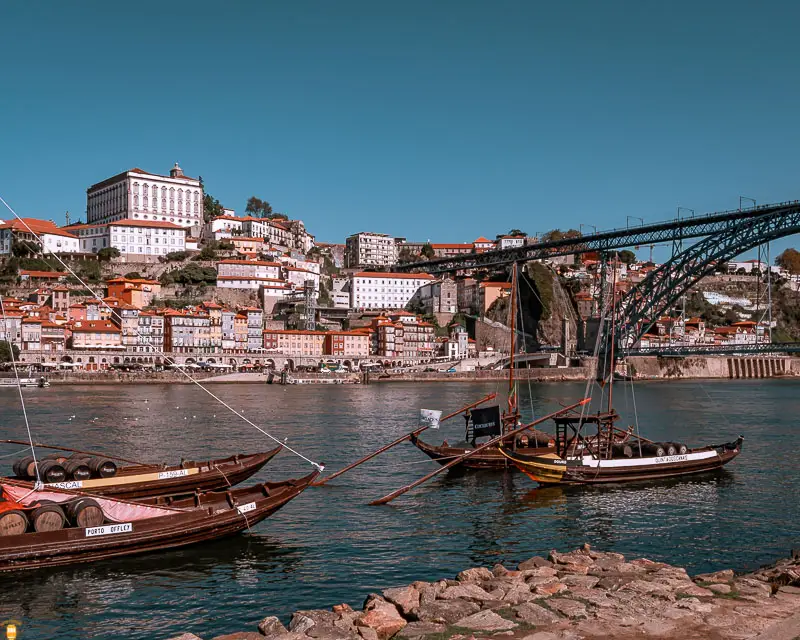
Speaking of Port wine, I have a suggestion for you: a visit to one of the many Port wine cellars that you can find here.
In this visit, you can admire the huge vats that store the wine for years and you’ll learn more about the history of Douro Valley and the production of Port wine. In the end, you’ll have the opportunity to savour a glass of this wine.
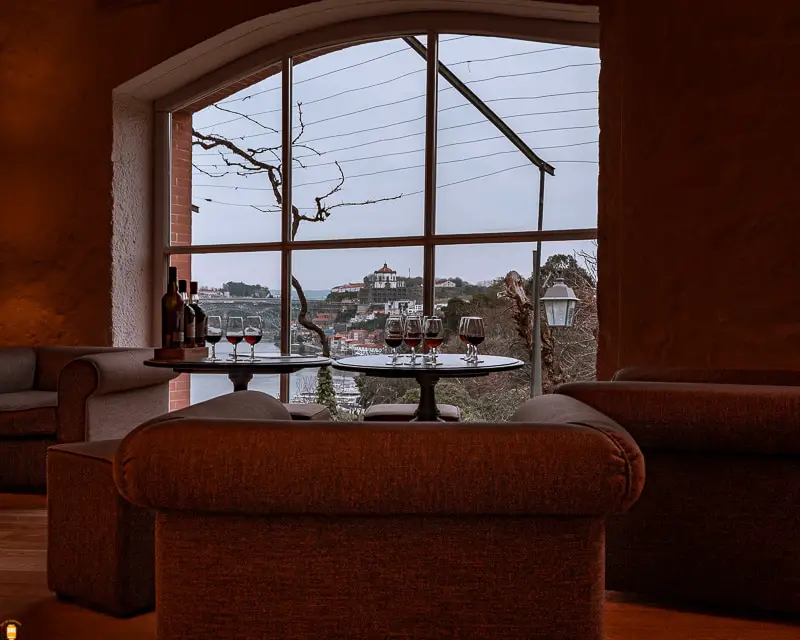

After visiting the Port wine cellars, experience another great tradition of Porto – a cruise in Douro river. Also known as the “Cruise of the 6 Bridges” (“Cruzeiro das 6 Pontes”), by going on this cruise, you’ll have the opportunity to admire the six bridges that cross the river, connecting Porto and Vila Nova de Gaia cities.
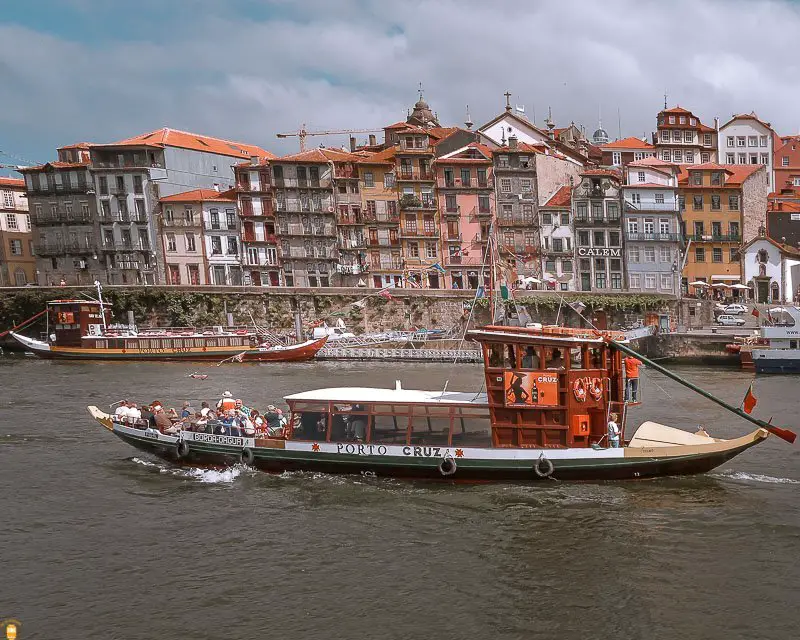
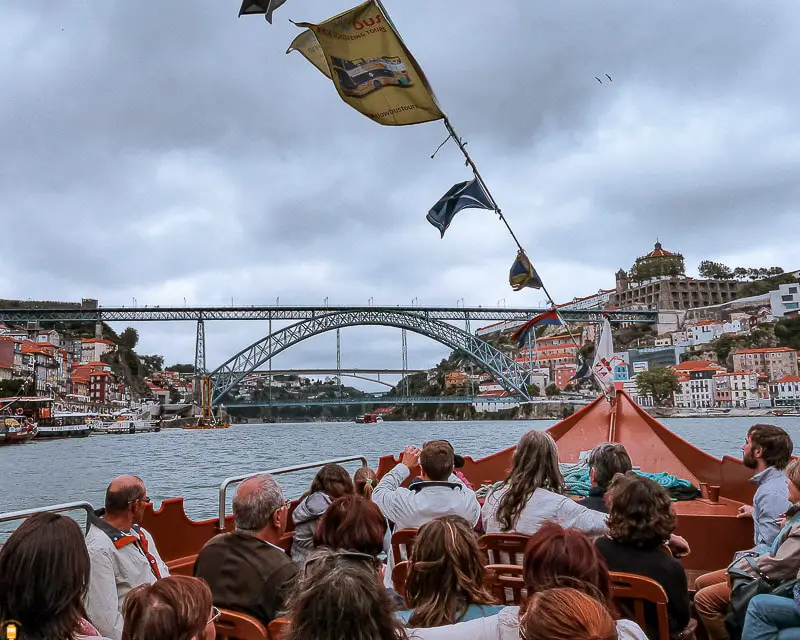
After this wonderful experience in Douro river, head up to the church Igreja de Santa Clara – you have two options to choose from: you can take Guindais funicular (next to the Ferdinand Wall) and relax for a while and enjoy the views or you can climb the stairs Escadas dos Guindais and feel the typical atmosphere of this place. No matter what you choose, I’m sure you’re going to love it!
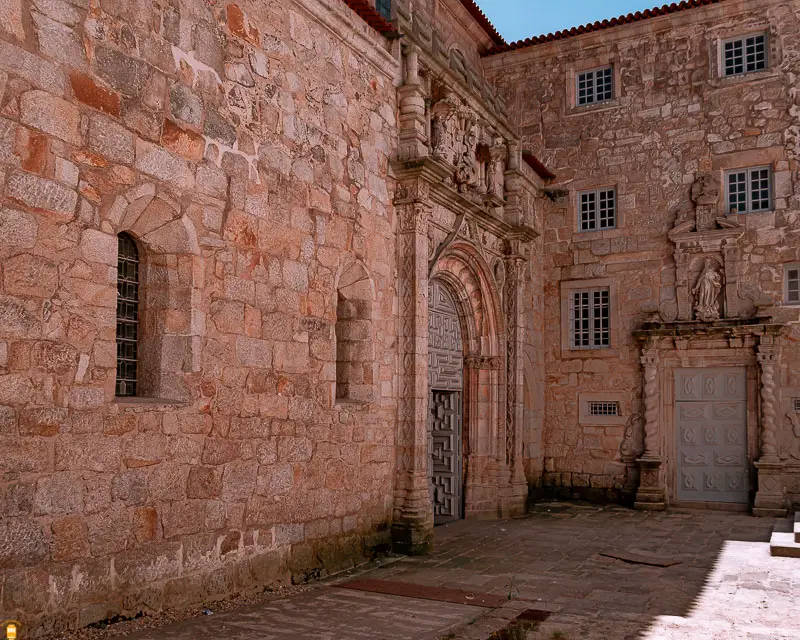
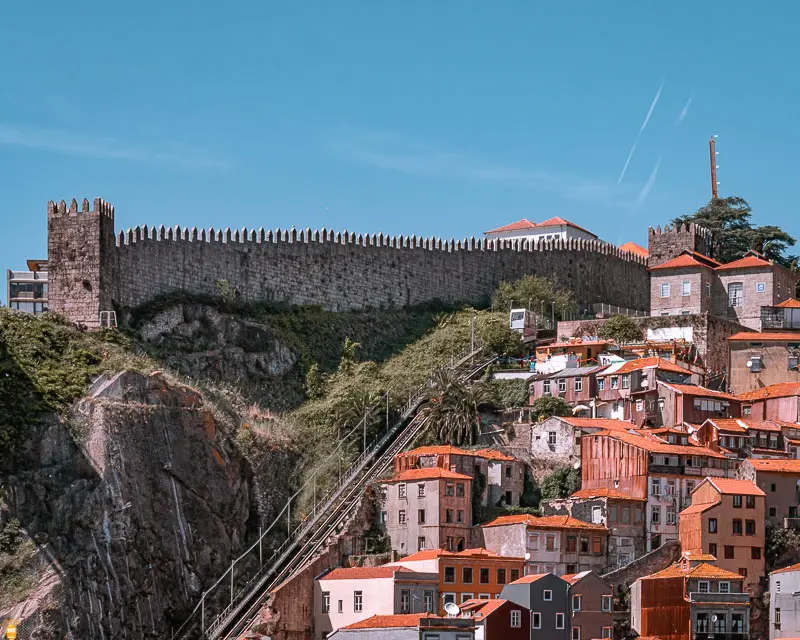

After admiring Santa Clara Church, built in Baroque style, and an interior decorated with gilded wood, walk for 250 metres and stop in front of another monument you can’t miss during your visit to Porto city – the Cathedral.
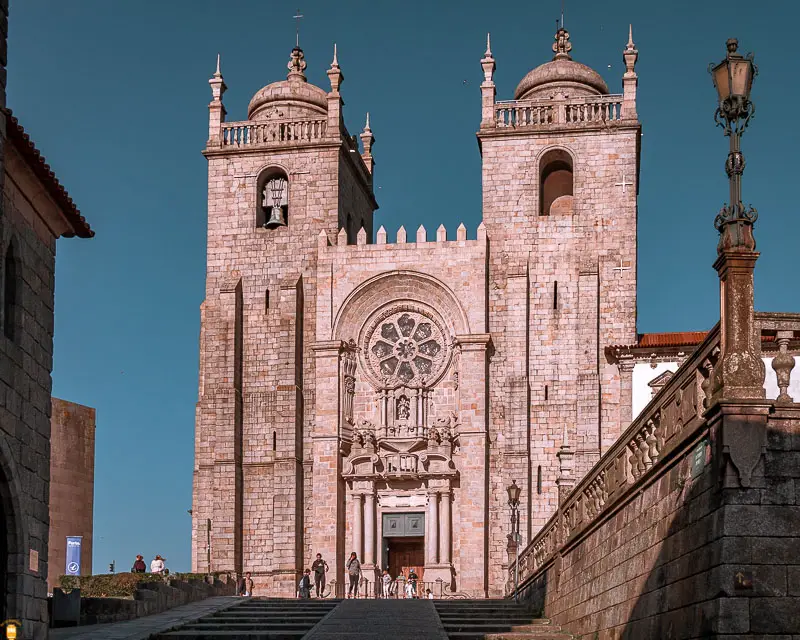
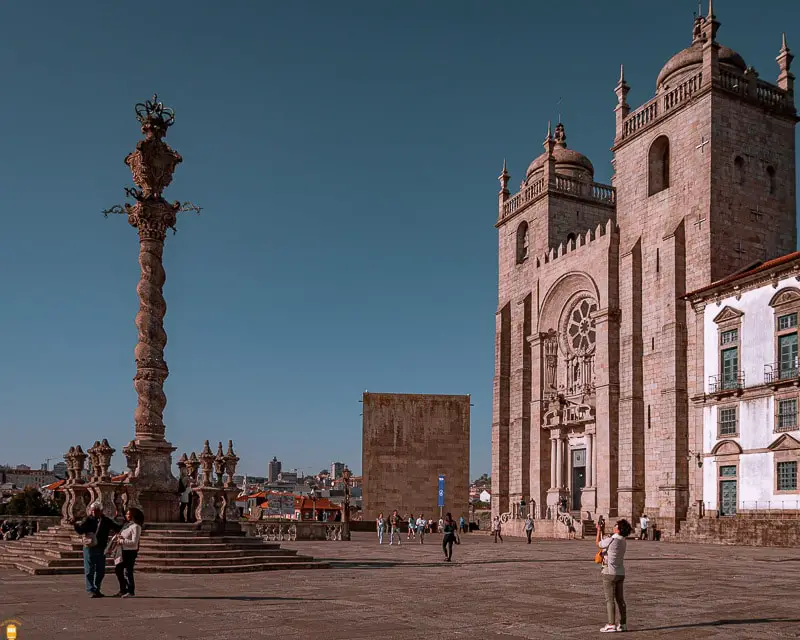
The construction of Porto’s Cathedral began in the 12th century but it underwent several periods of renovation, improvement and enlargement throughout the centuries and, because of that, you’ll notice the diversity of architectural styles like the Romanesque, Gothic and Baroque styles.
Continue your walk and head down through the typical alleys towards the church Igreja de São Francisco.
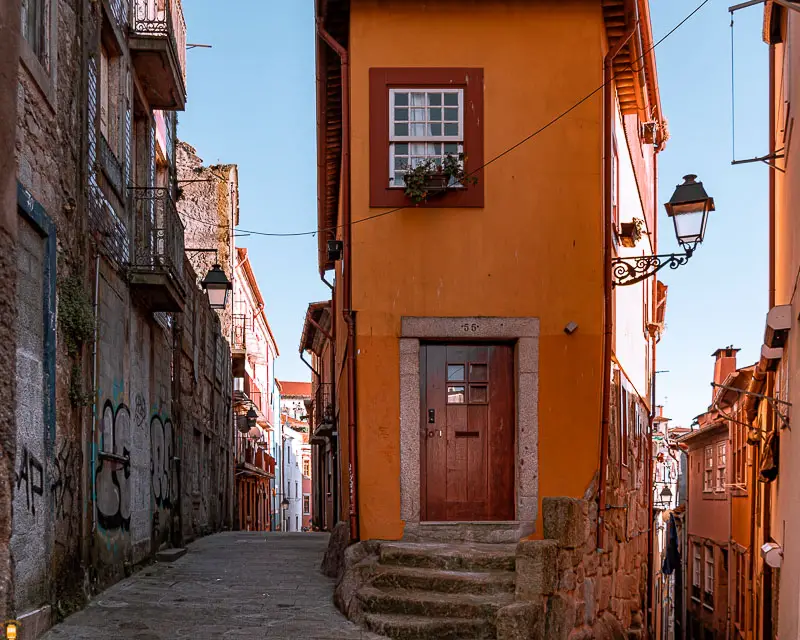
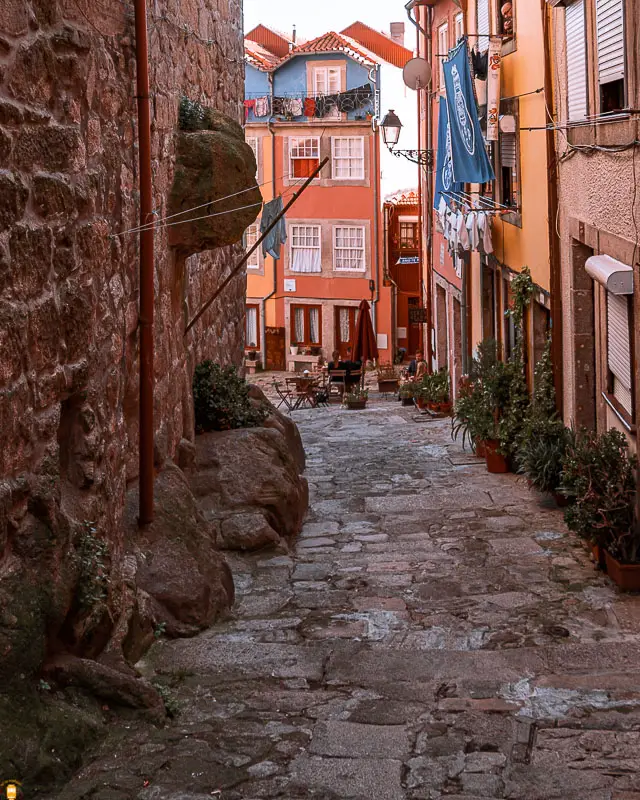
There, my suggestion is for you to take the tram and enjoy the trip alongside Douro river until Passeio Alegre, in Foz (Douro river mouth). This trip takes 25 minutes and will give you a glance of how inhabitants used to travel decades ago.
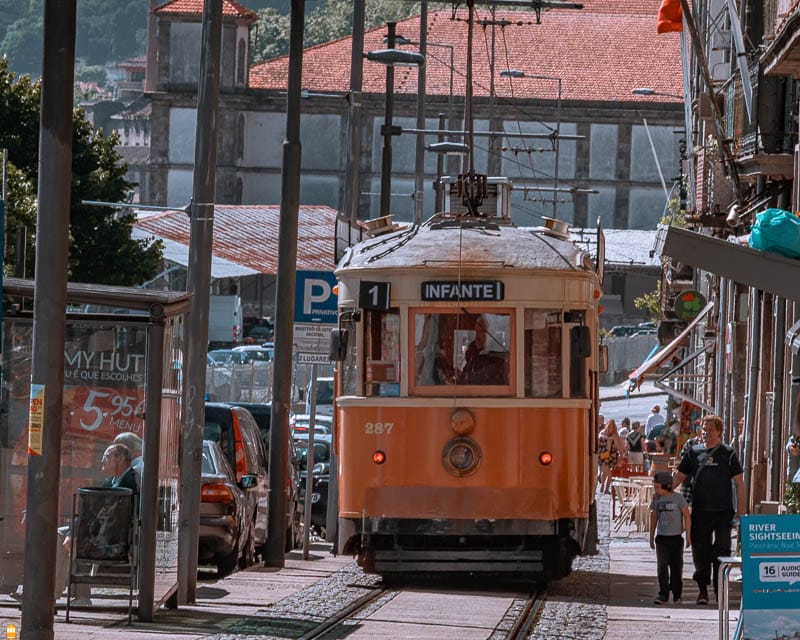
To wrap up your day, enjoy an amazing dinner at one of Porto’s typical restaurants – you can try a “francesinha” (a Portuguese famous sandwich, considered one of the best in the world).
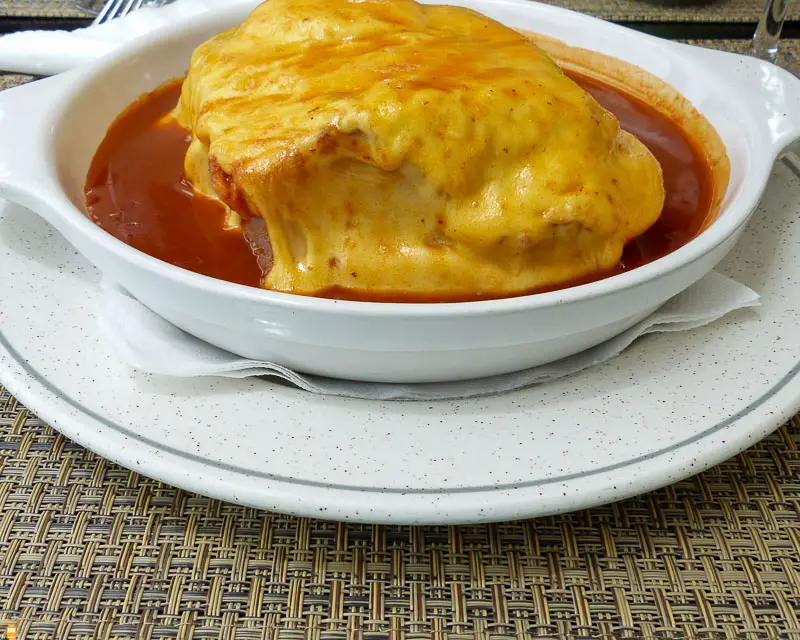
Information: the nightlife in Porto city is also amazing and you can have a drink in one of the many bars located at “Galerias Paris”, close to Lello Bookshop, or at Ribeira.

Day 3 – Guimarães
For you to enjoy the most of the remaining days of this travel guide in Northern Portugal and, in particular, in Minho province, I recommend you hire a car here so that you can travel faster and visit places not accessible by other means of transportation.
Located 55 km northeast of Porto, the beautiful city of Guimarães is the birthplace of Portugal and your first stop in Minho. Here, you’ll have the opportunity to admire several points of interest and surely you’ll spend a wonderful time.
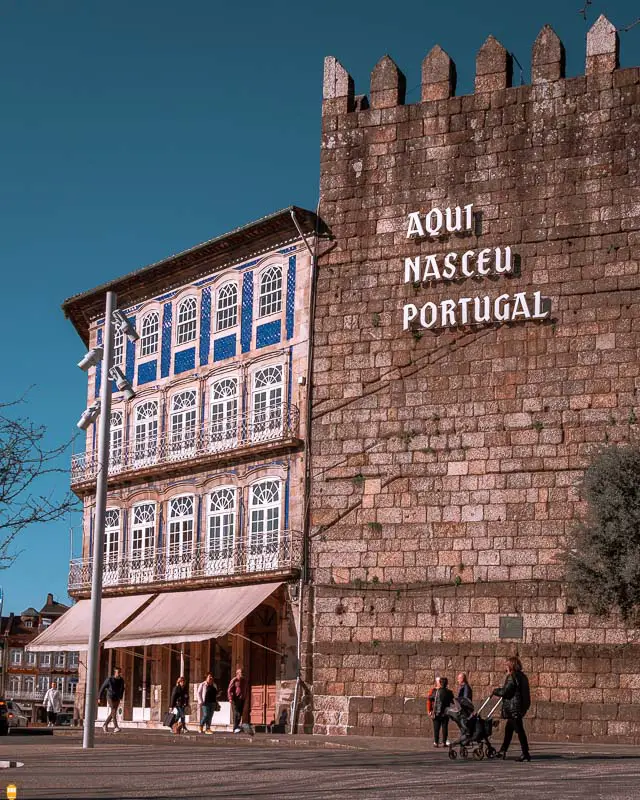
If you drove to Guimarães, park your car at Parque das Hortas (free parking lot) and then go explore the historic centre. Know that Guimarães historic centre is listed by UNESCO as a World Heritage Site and soon you’ll understand why.
The first point of interest you can’t miss is the beautiful church Igreja de Nossa Senhora da Consolação e Santos Passos. Facing the square Largo da República do Brasil, this church was built between the 16th and the 18th centuries and was improved throughout the years and it is today a reference for those visiting Guimarães.
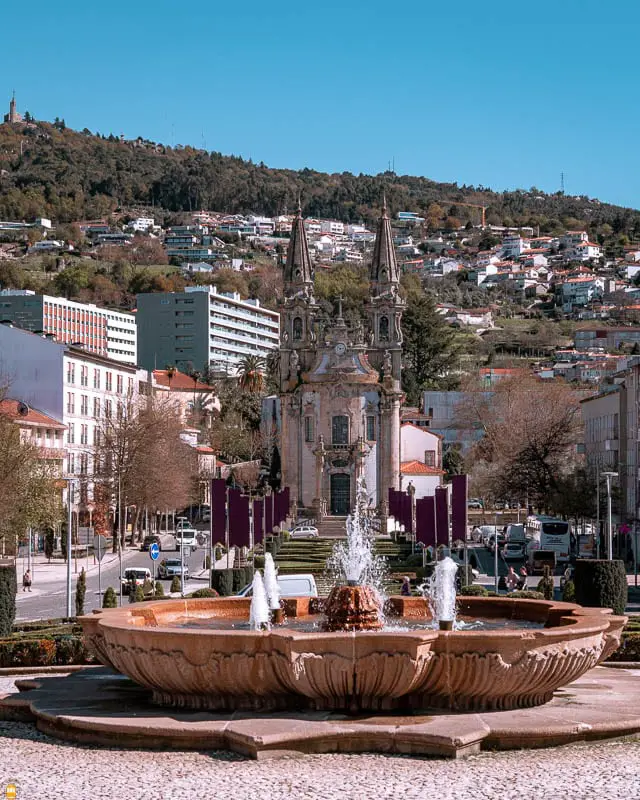
Next, head upwards, along the square Largo da República do Brasil until you get to the avenue Avenida Alberto Sampaio. You won’t have any problems finding this avenue since it is side by side with the wonderful wall that stretches for several metres.
Continue your walk along the avenue and then make your way through the dirt path that will lead you to the landmark of this city and a place you can’t miss in Northern Portugal: Guimarães castle.

Standing out on top of a small hill, this castle was for a long time a stronghold that protected the population of Vimaranes and it is today a place of undeniable historic importance. In addition, it is considered as one of the seven wonders of Portugal.
After visiting the castle, walk down the path in front of it and admire the small chapel Capela de São Miguel do Castelo, built in the 13th century.
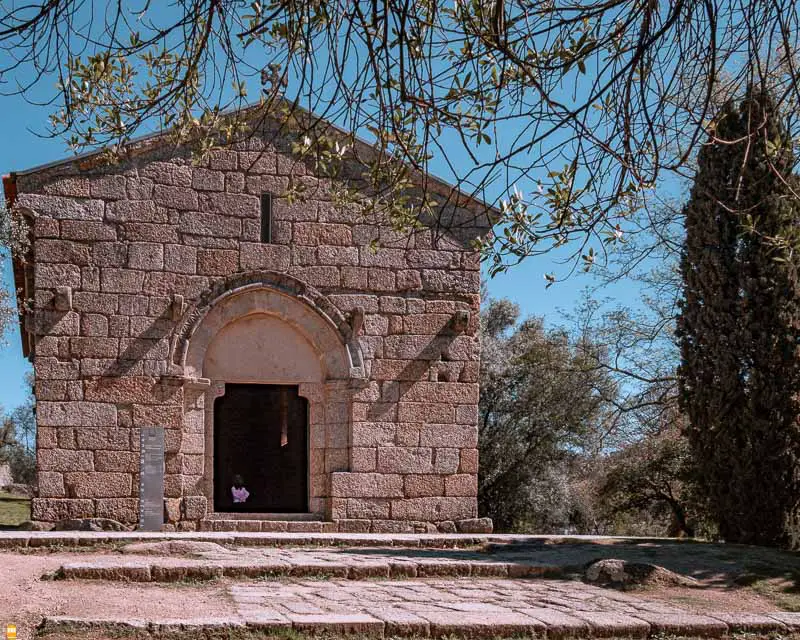
Next, don’t hesitate to visit one of the most beautiful monuments in Northern Portugal – the palace Paço dos Duques de Bragança. Know that it will take you more than an hour to visit this place but you won’t notice the time passing by.

Among other things, don’t miss the opportunity to admire the Weapons Room (Sala de Armas), the Great Hall (Salão Nobre) and the beautiful chapel. As a curiosity, you should also know that this monument is the official residence of the Portuguese President whenever he visits Northern Portugal.
To conclude this day, go explore the beautiful streets of Guimarães historic centre.
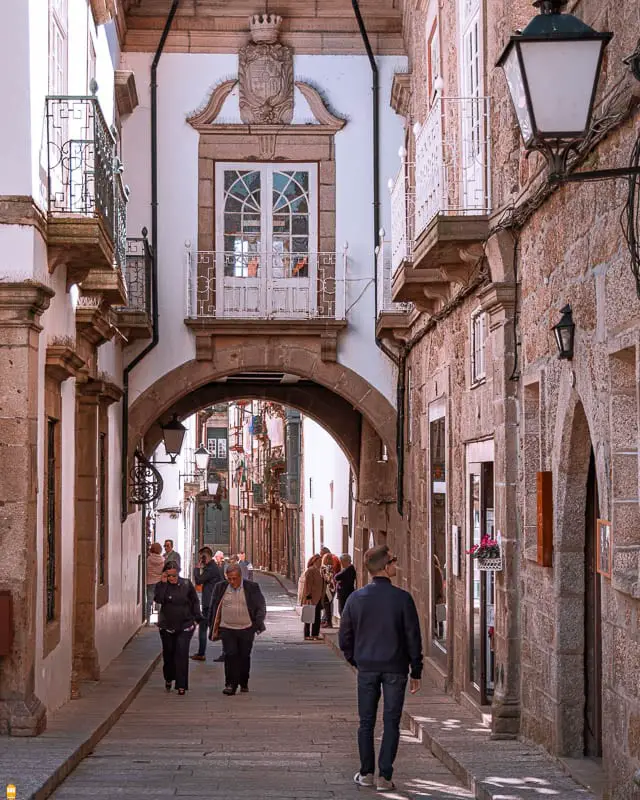
Discover the street Rua de Santa Maria, one of the oldest streets in the city, that connects the castle to the heart of the historic centre of Guimarães. Next, go to the square Praça de São Tiago and admire the beautiful building with Gothic-style characteristics that was once the town hall.

Apart from the architectural richness of this place, know that this is one of the most lively locations in the city, where you can also take some time to relax at a terrace bar and enjoy the surrounding beauty.
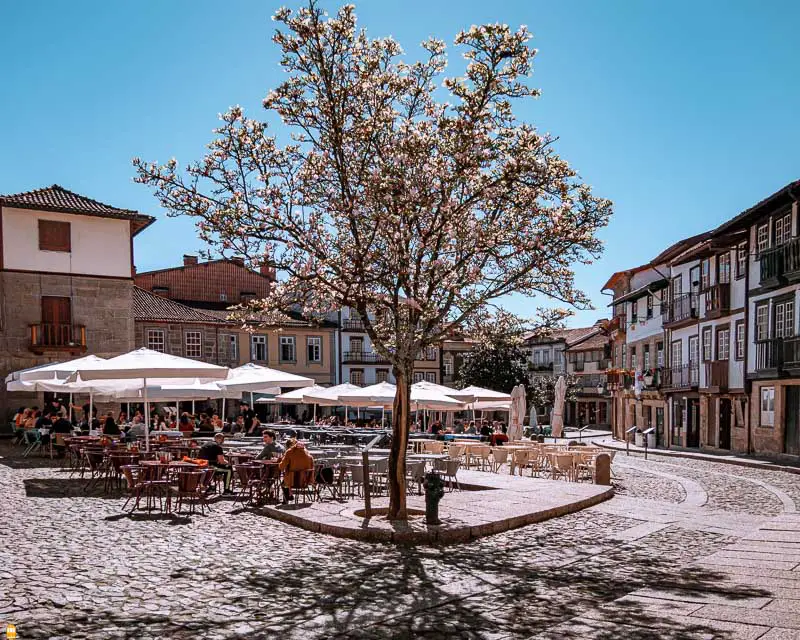
After that, walk by the old town hall and go to the square Largo da Oliveira. Historically, this is one of the most important places in Guimarães and Northern Portugal due to the presence of two monuments that are side by side: the church Igreja de Nossa Senhora da Oliveira and Padrão do Salado.

The church is centuries old but it was only in the 15th century that it gained its present looks because of some renovation works.
Like the church, the Padrão do Salado has its origins in the 14th century and they’re both unique examples of the Gothic style in Northern Portugal and in the rest of the country, monuments that you surely won’t want to miss during your visit to Guimarães.
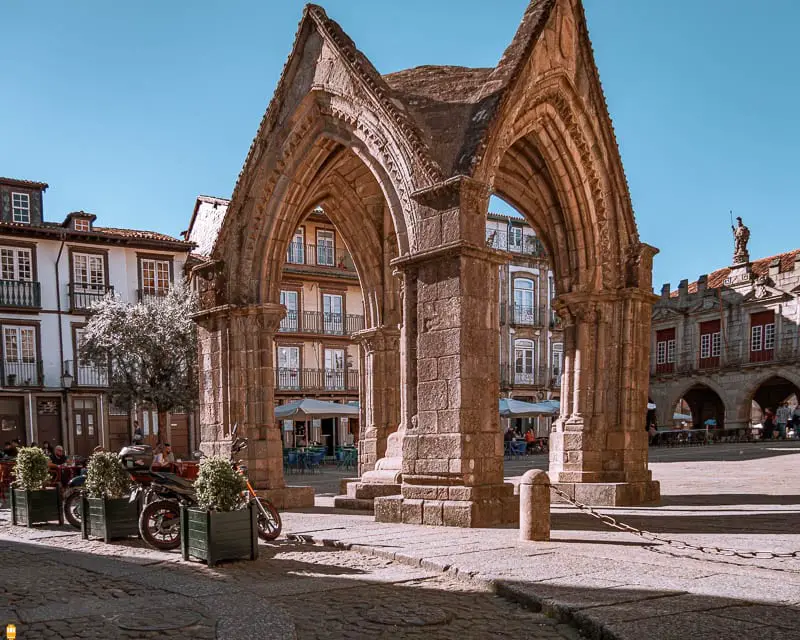
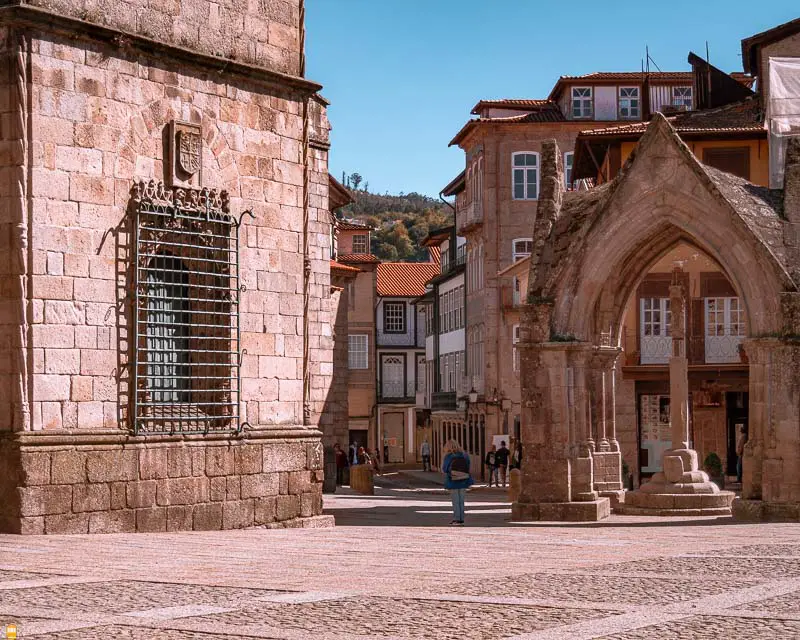
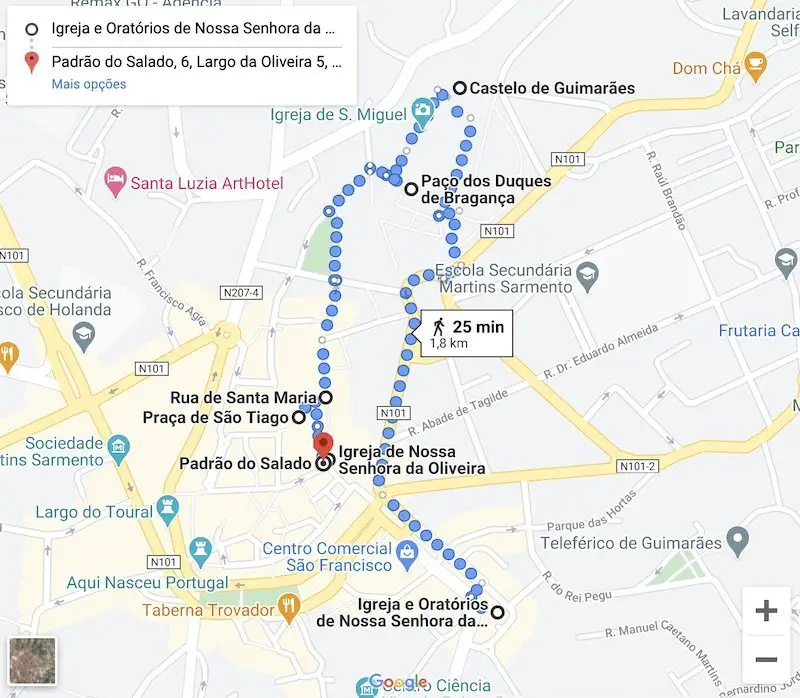
Information: if you prefer, you can start your visit to Guimarães historic centre in the castle – there is a free parking lot close by. Then, you can head down to the church Igreja de Nossa Senhora da Consolação e Santos Passos. The only inconvenient is that you’ll have to walk up the streets to return to your car.

Where to sleep in Guimarães
Posh Residences and PR Suites (affiliate links)
When I last visited Guimarães, I spent the night at one of Joana’s apartments, rated 9.3/10 (when I wrote this article) in the website Booking.com.
Posh Residences are located close to the square Praça de São Tiago and has apartments with a kitchen and living room. PR Suites are at Largo do Toural and have studios with modern decoration and private bathroom with free toiletries.
Both accommodations offer free wi-fi connection, television, air-conditioning, free parking (a few metres away) and the icing on top of the cake is the amazing breakfast!
Hotel da Oliveira ****
Hotel da Oliveira is located in the historic centre of Guimarães and the rooms have air-conditioning and private bathroom with free toiletries with hairdryer. All the rooms have a unique decoration alluding to a specific Guimarães historic figure.
Day 4 – Guimarães and Braga
In the morning of this fourth day in Northern Portugal, my suggestion is that you visit one of the most beautiful places in Guimarães: the mountain Monte da Penha.
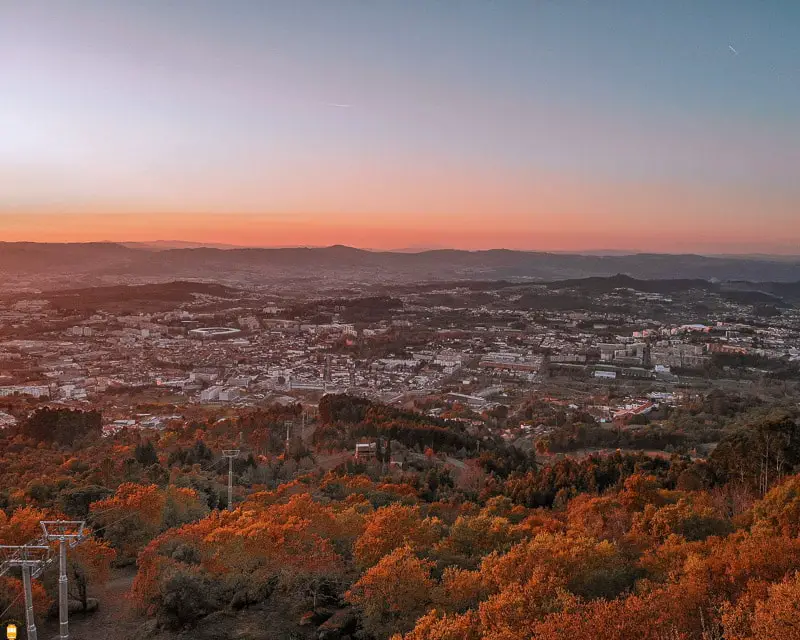
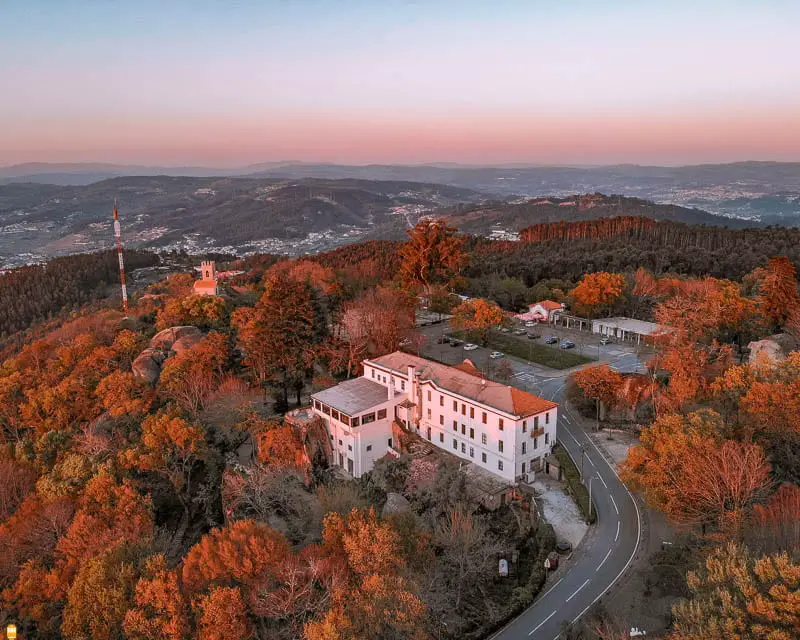
Monte da Penha is the place located at the highest altitude in Guimarães municipality and there are two fastest ways to get here – by car or cable car.
In my opinion, you should take the cable car so that you can enjoy the views from a different perspective. In addition, you won’t have to worry about parking your car once you get there. As a curiosity, know that this is the only cable car located north of Douro river which will turn this experience into something special!
This mountain is well-known by many people for its beautiful Penha Sanctuary. The construction of this sanctuary ended in the mid 20th century and was built mainly with granite from this region.

Apart from the sanctuary, there are other reasons why you should go there: a minigolf course, a tourist train, picnic areas and wonderful viewpoints that offer the most amazing views over Guimarães city and surrounding area.
After you finish your visit to Monte da Penha and Guimarães, return to your car and continue your visit to Northern Portugal by going to Braga, the “archbishop city”.
Located 25 km northwest of Guimarães and 55 km north of Porto, Braga is one of the oldest Portuguese cities and certainly one of the most beautiful. In 2019, this city was the second best European destination and there are plenty of reasons to become the first!
My suggestion is that you start your visit in the outskirts of Braga. Drive to one of the most beautiful sanctuaries in the country, listed by UNESCO as a World Heritage Site: Bom Jesus do Monte Sanctuary.
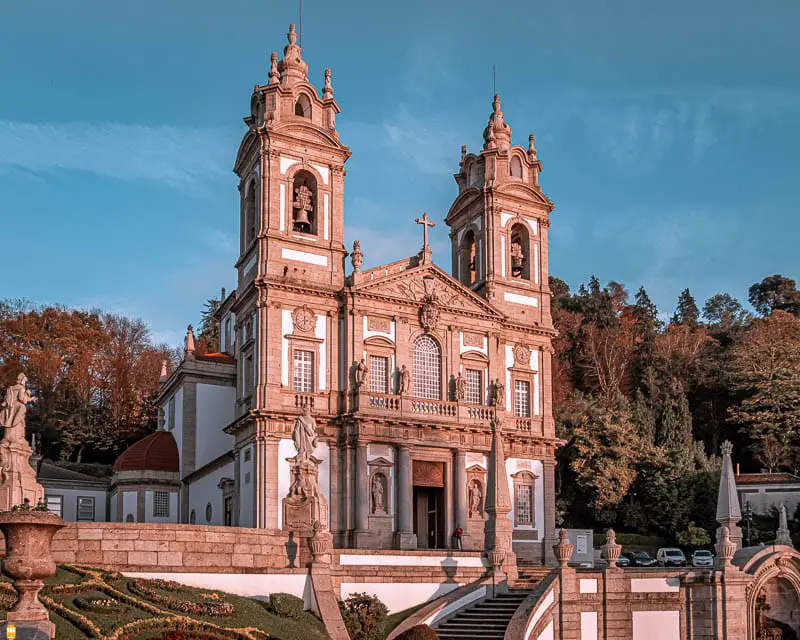
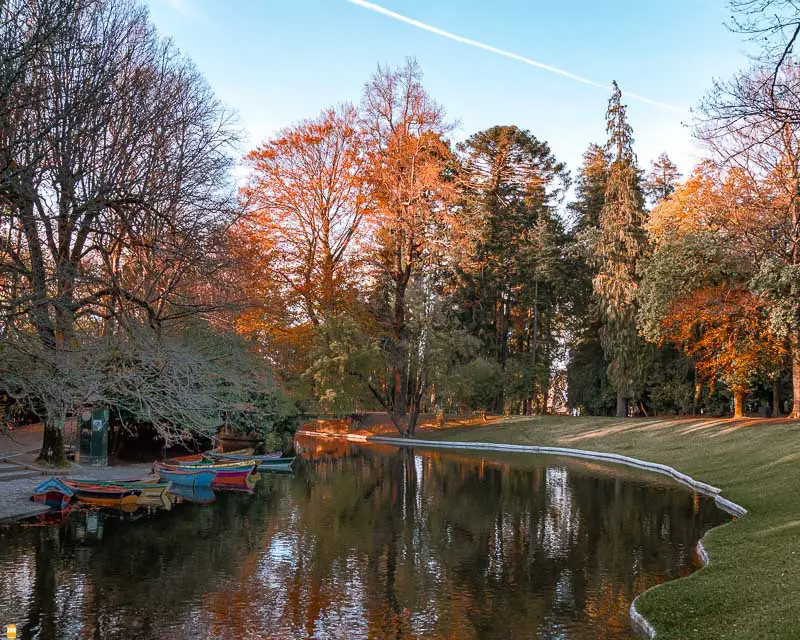
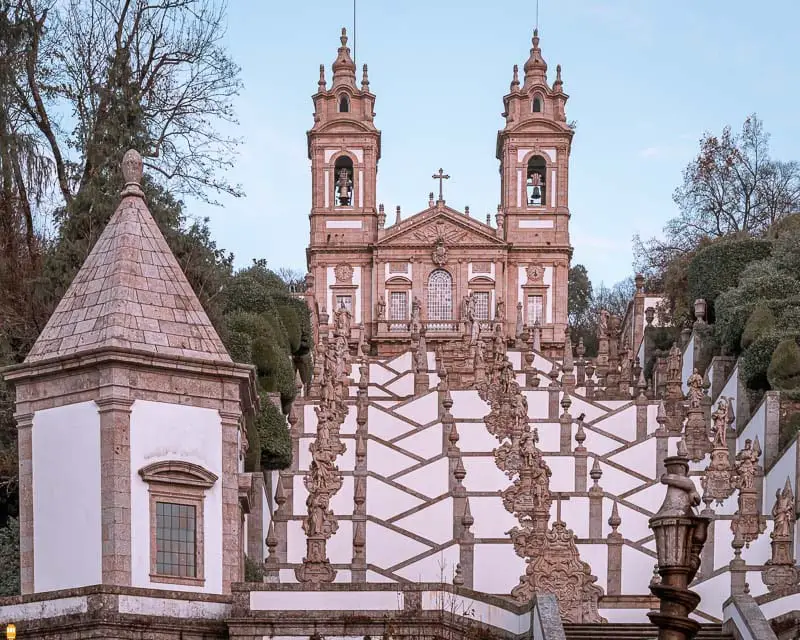
If you want to get to this place in a different way, then park your car in the parking lot close to the road Estrada de São Pedro. You’ll have two options to choose from: climb the steps of the magnificent stairway that will take you to the sanctuary or take the funicular that goes up the hill alongside the stairway.
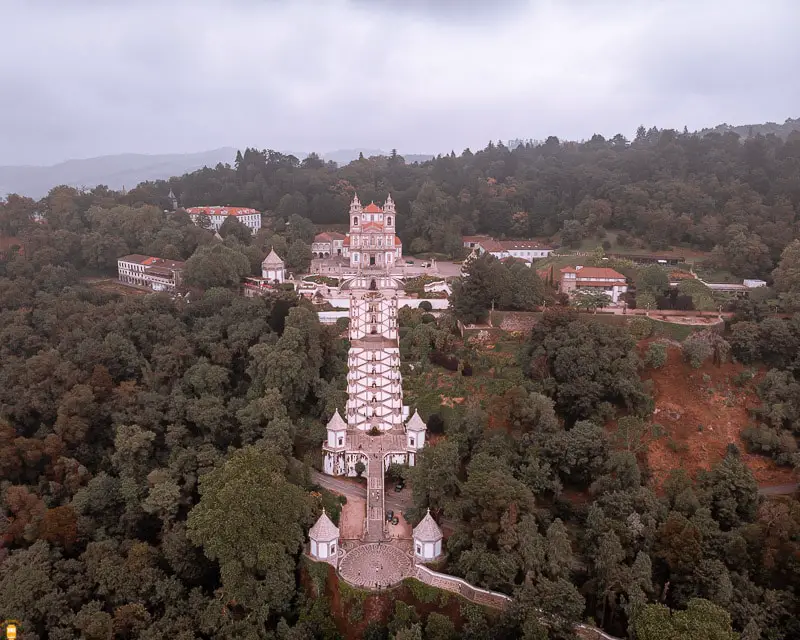
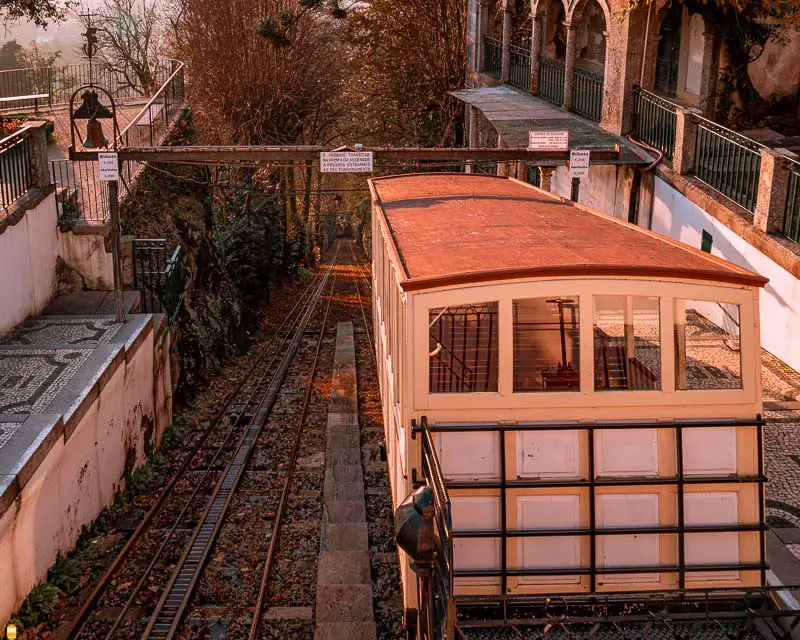
If you choose to climb the stairway, know that it is divided into three flights of stairs built between the 18th and 19th centuries – the Baroque Portico, the Five Senses Stairway and the Three Theological Virtues Stairway. Aside from the surrounding beauty that is present in this place you should also know that you can admire some fountains and small chapels along the way, depicting the Passion of Christ.
As an alternative, you can take the funicular which was the first to be built in the Iberian Peninsula (inaugurated in 1882) and is presently the only funicular in the world to use a water counterweight system.
When you get to the site, you can lose yourself in the several points of interest you’ll find there. Obviously, you should start by admiring Bom Jesus Basilica, an extraordinary building in Neoclassic style, built between the end of the 18th century and beginning of the 19th century.
Next, explore Bom Jesus Park, a wooded area that surrounds the basilica and other parts of the sanctuary. There, you’ll have the opportunity to stroll through some walking routes and admire the beautiful gardens, fountains and artificial lakes, including one where you can hop on a rowing boat. As you can see, there are plenty of reasons why you should take a break at this place!
Return to your car by going down the stairway or taking the funicular and drive to the next point of interest in the outskirts of Braga – Nossa Senhora do Sameiro Sanctuary, located just 2.5 km away from Bom Jesus Sanctuary.
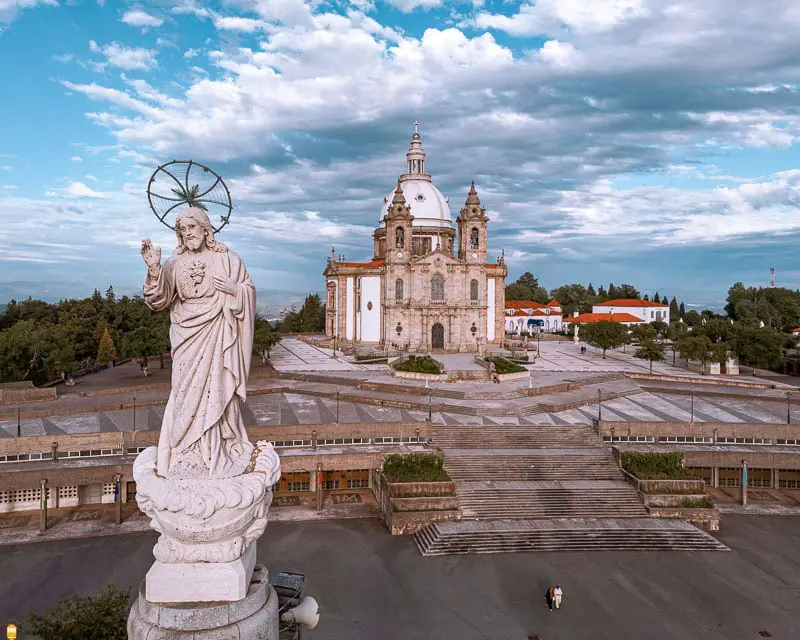
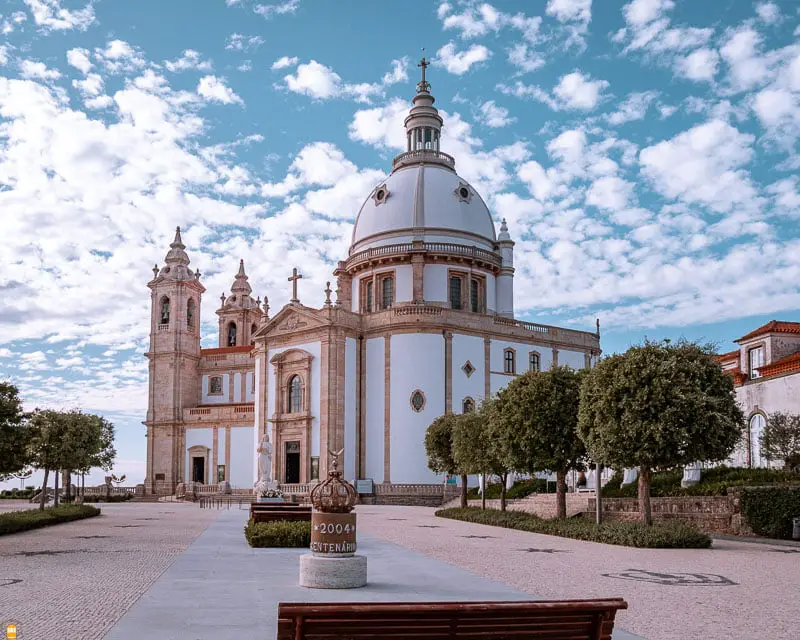
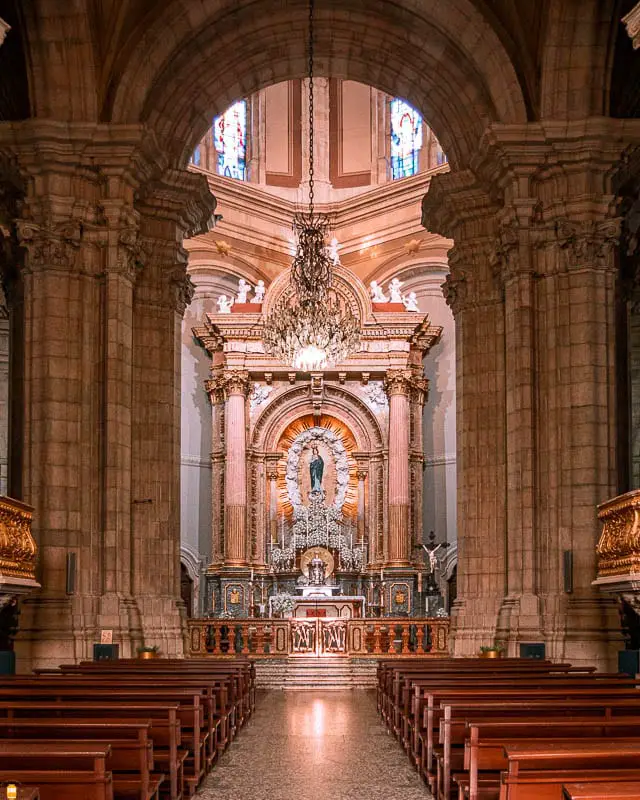
At this sanctuary you can admire one of the most beautiful and important basilicas in the country, a monument built in 1863 and reconstructed a few years later.
Like Bom Jesus Sanctuary, in Sameiro Sanctuary you can also admire a beautiful stairway apart from a statue erected in honor of Pope John Paul II. Surrounding the basilica, you’ll have the opportunity to relax at the garden and admire some fountains and a chapel.
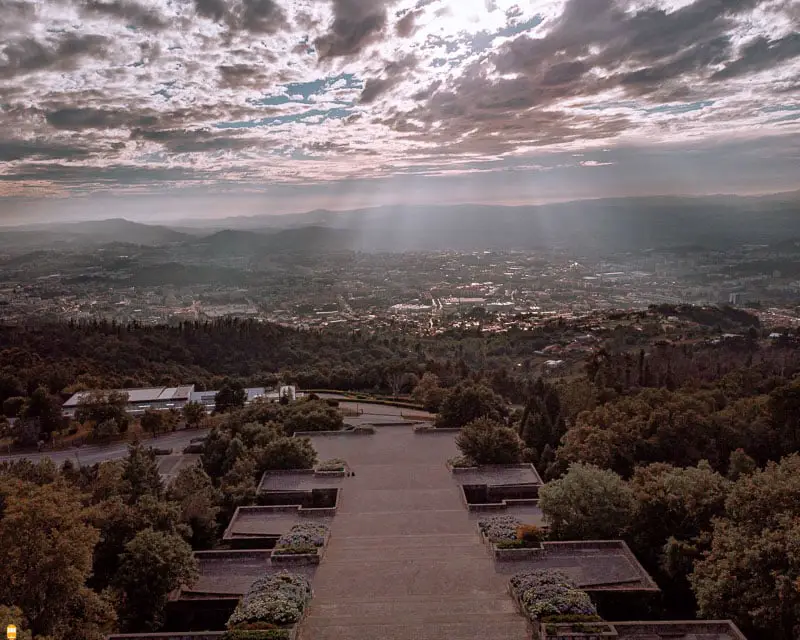
Tip: don’t miss the opportunity to climb the steps to the viewpoint, in the basilica (the entrance is in the back), to enjoy the amazing 360º view over Braga and outskirts.
Information: do you want to discover the birthplace of the Portuguese nation and discover some of its secrets with the help of an experienced guide? If that’s the case, book this 8-hour activity leaving from Porto and heading for the fantastic historical centre of Guimarães, listed by UNESCO as a World Heritage Site since 2001.
Here, you can admire the well-preserved medieval places of this city, including the beautiful castle and the palace Paço dos Duques de Bragança.
In the afternoon, go visit one of the oldest Christian cities in the world, Braga. Here, you will have the possibility to explore the historic centre and visit its beautiful cathedral. Afterwards and before returning to Porto, you will also have the opportunity to complement this activity with a visit to the sanctuary Santuário do Bom Jesus do Monte, also listed by UNESCO as a World Heritage Site. A must-see!
Where to sleep in Braga
Hotel do Parque is one of the favourite accommodations for people visiting Northern Portugal and, in particular, Braga city, not only because of its quality but also for its location. If you stay at this hotel, know that Bom Jesus Sanctuary is just a few metres away; you can also go for a stroll in the beautiful gardens you’ll find there.
At this hotel, you’ll have at your disposal air-conditioned rooms with television and a desk in addition to a private bathroom.
Located a few metres away from Braga historic centre, Ibis Braga Centro offers the possibility for people to spend the night in a very affordable place with all the comfort one can ask. In the following day, you can just step outside the hotel and start exploring the points of interest in the vicinities.
Dia 5 – Braga
In the morning of this fifth day in Northern Portugal, drive to the historic centre and try to park in one of the streets there; if you can’t, go to the parking lot located in the avenue Avenida Central.
If you parked your car nearby, start your visit in Braga by going to the beautiful Congregados Basilica .
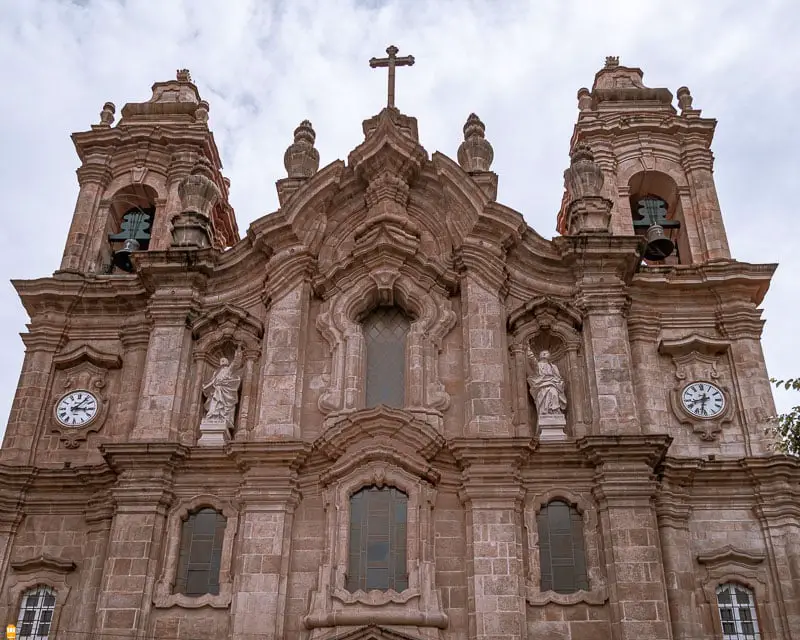
The construction of this basilica started in the 18th century but only ended in 1964 when the west tower was erected. Congregados Basilica was also part of Congregados Convent and stands out for its Baroque style.
Inside this temple, take some time to admire the granite statues that represent Abraham, Isaac, Jacob and David and, in the main altar, the plaster, much common in the Rococo style.
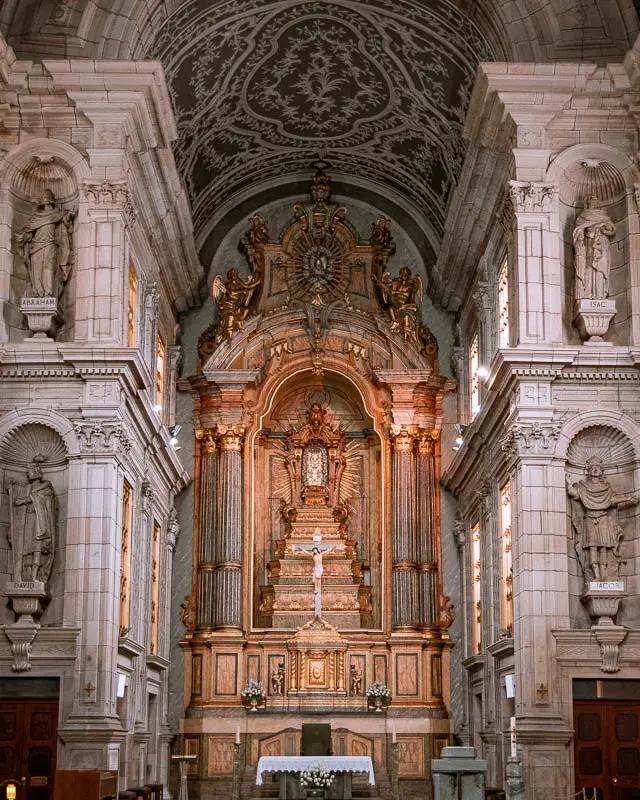
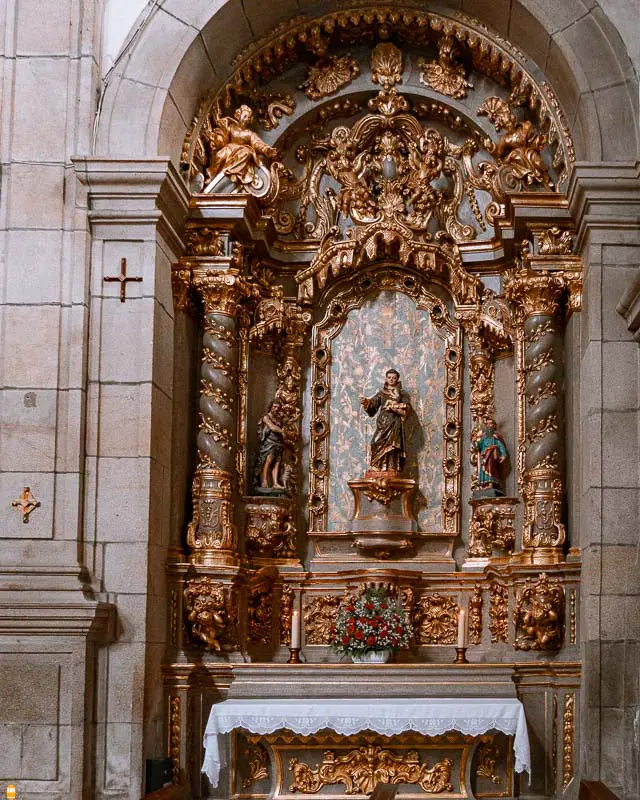
Next, go to one of the most beautiful places in the historic centre, the arcade Arcada da Lapa, located at the square Praça da República.
The arcade was built in 1715, in a place where there used to be part of the city walls. This place provided shelter and was, for a long time, where merchants sold their goods.
In the second half of the 18th century, a church, Igreja da Lapa, was built in the middle of the arcade due to the increasing devotion of the inhabitants towards Nossa Senhora da Lapa.

Nowadays, you’ll find two historic cafés/restaurants under this arcade: Café Vianna, inaugurated in 1871, and Café Astória, in 1928. Don’t hesitate to stop for a couple of minutes at one of these places and have a cup of coffee while admiring the beauty of this square.
Behind Arcada da Lapa you’ll have the opportunity to admire the 30-metre high donjon. This monument is the last remaining part of Braga’s castle, demolished in 1906.
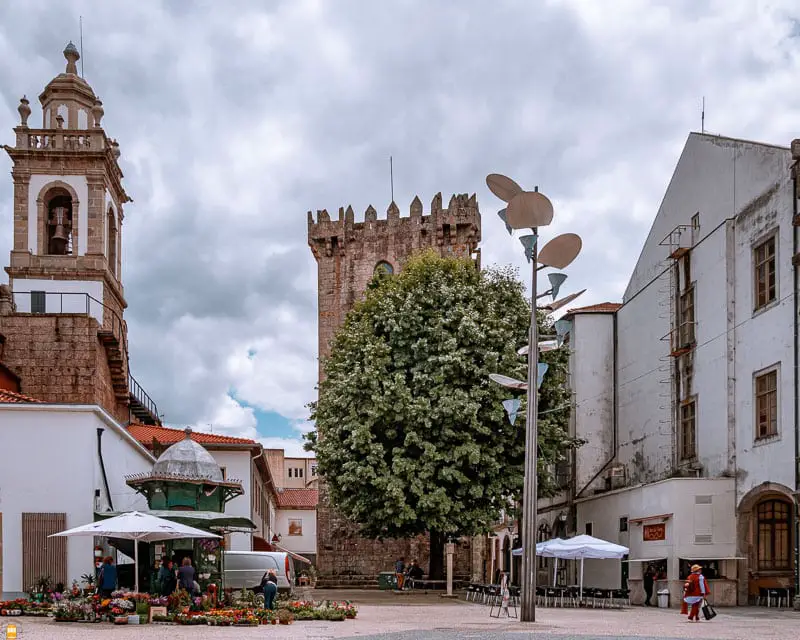
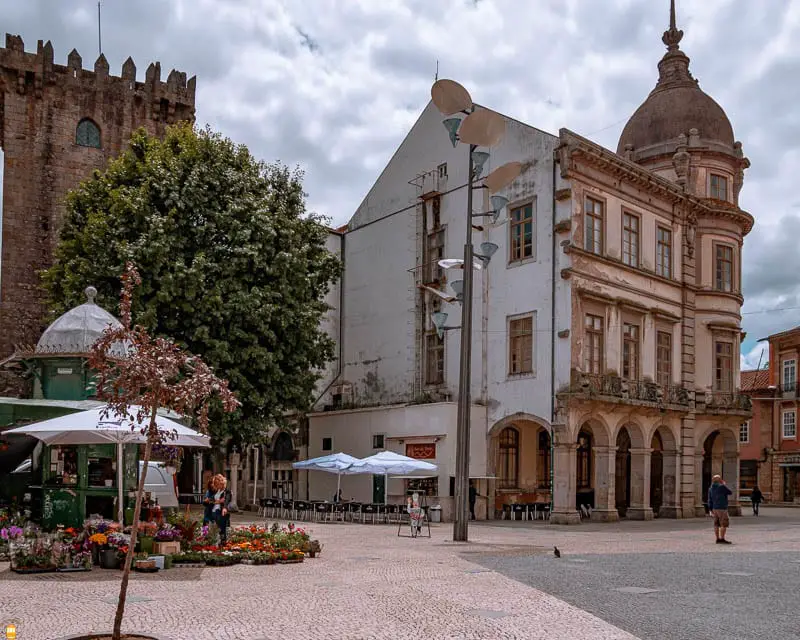
The old castle dated back to the Roman period (3rd century) and underwent improvement works throughout the centuries.
From the 16th century onwards, it started losing its defensive purpose due to the new techniques used by the enemy forces and because of the city’s expansion that led to its destruction some centuries later.
Close to the donjon, you’ll find the beautiful church Igreja dos Terceiros where you can enter and admire the beautiful glazed-tile panels and religious decoration.

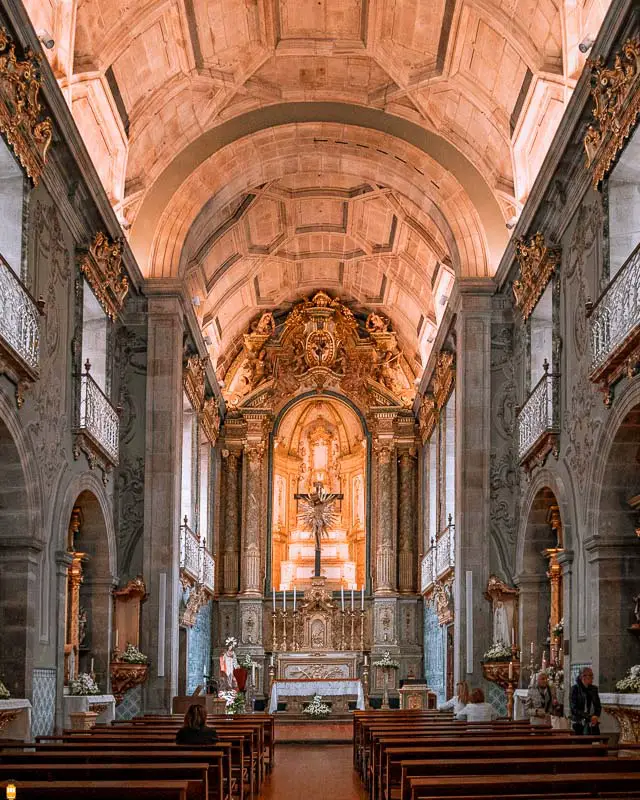
Around 200 metres ahead, you’ll discover one of the most beautiful gardens in the city, the garden Jardim de Santa Bárbara.
Apart from the natural beauty of this garden, you should also know that this place is surrounded by some historical buildings like the Archiepiscopal Palace (Paço Arquiepiscopal) and the Minho University Rectory (Reitoria da Universidade do Minho).

Take the opportunity to relax here and admire the beautiful 17th-century fountain with a statue of Saint Bárbara, right in the middle of the garden.
Next, walk some metres and head towards the museum Museu dos Biscainhos.
This museum is located at the palace Palácio dos Biscainhos, built in the 17th century, and here you can admire furniture, jewellery and ceramics pieces and much more! These pieces are proof of the daily life between the 17th and 19th centuries.
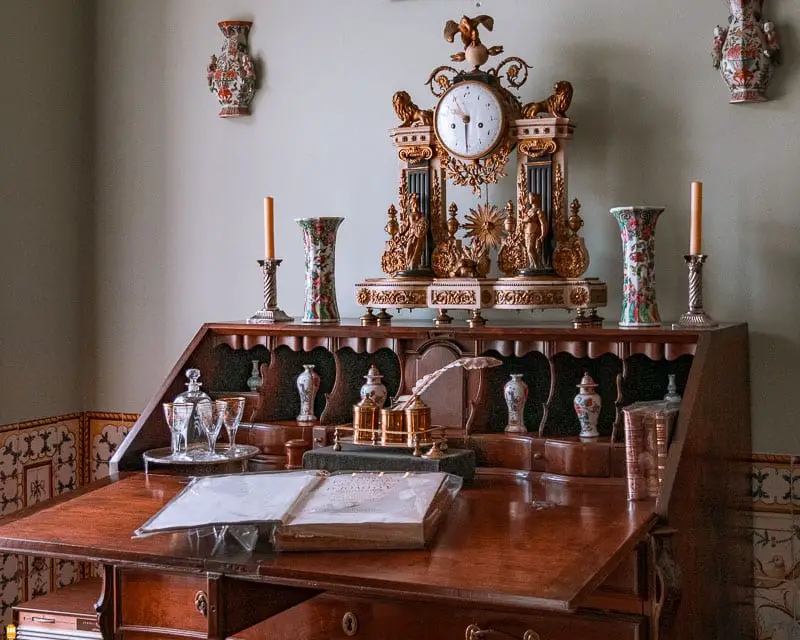
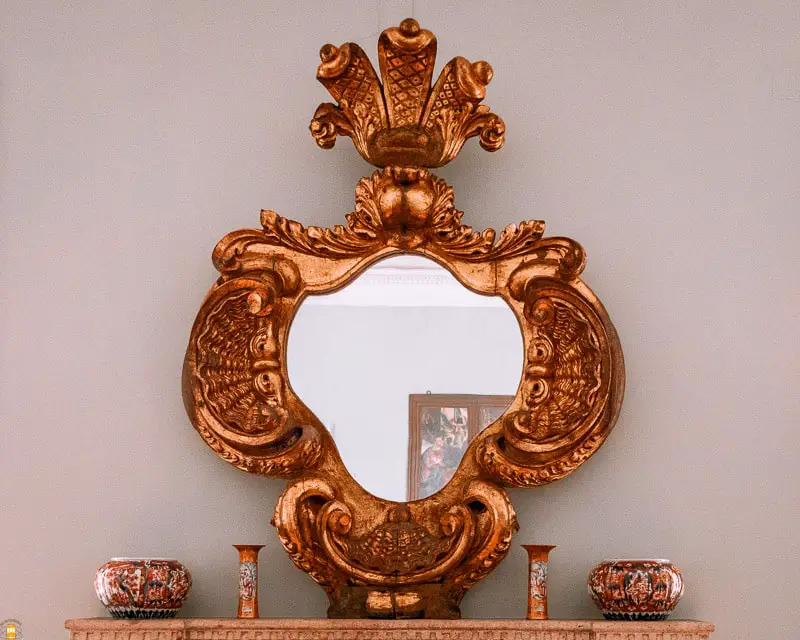
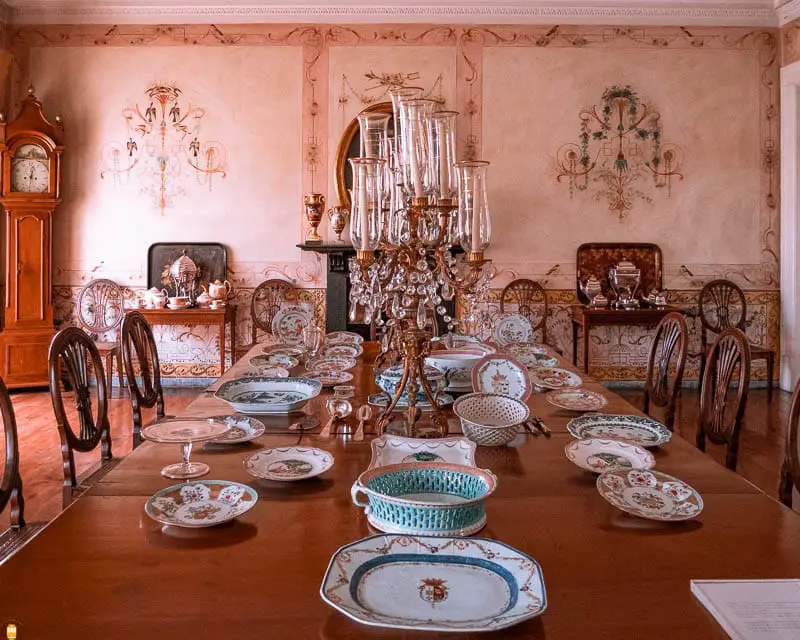
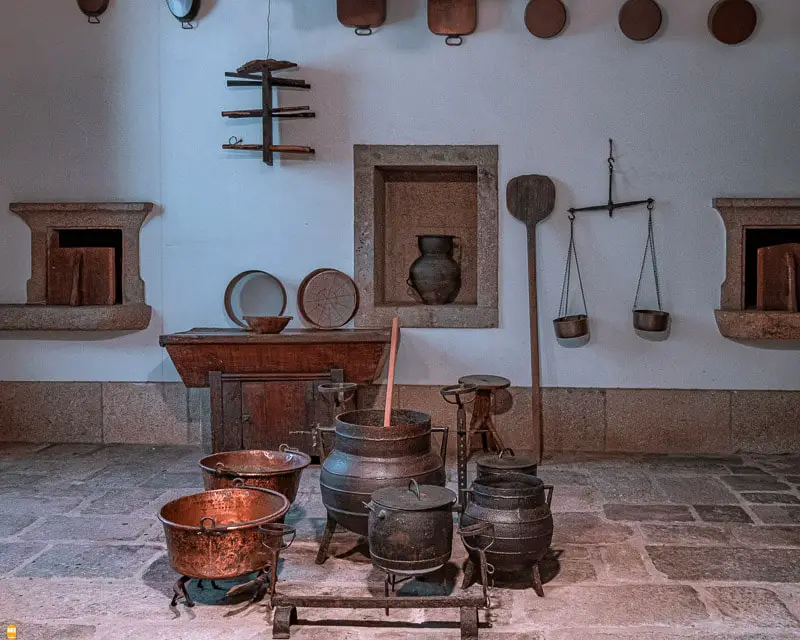
Apart from the museum, you can also take the opportunity to admire the beautiful 18th-century garden, a time in which the Baroque style stood out in the Portuguese art scene.
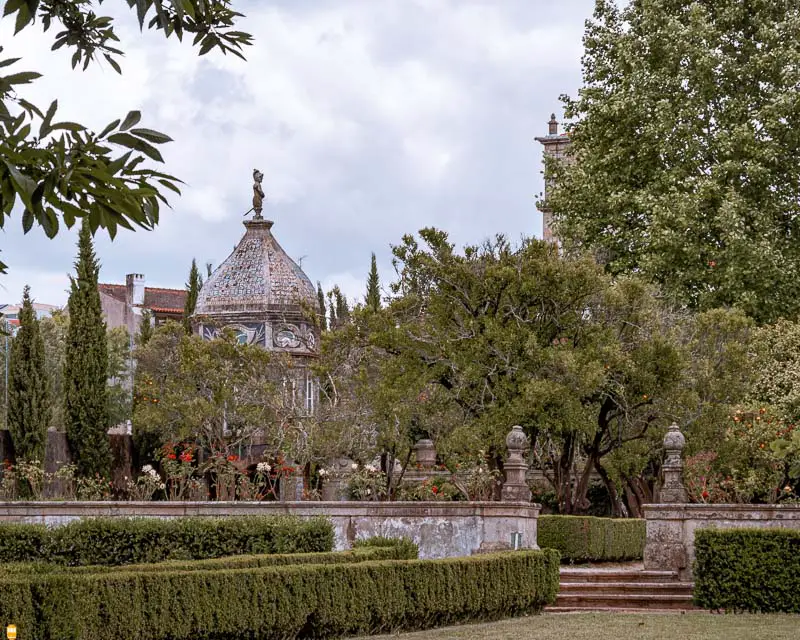

After your visit to Biscainhos palace, continue towards the street Rua Dom Diogo de Sousa. There, you’ll find the beautiful arch Arco da Porta Nova, the last entrance to be created in the city walls in the beginning of the 16th century. The arch itself was built in the 18th century.

Next, head to one of the most beautiful monuments in this city: the Cathedral.
Founded in the 11th century, this temple is one of the most important of the Romanesque period in Portugal and it is a symbol of Braga’s diocese, considered the oldest one in the Iberian Peninsula and dating back to the year 45 AD.

Along with its religious role, this cathedral also has a cultural function because of its museum with a rich collection of religious art.
As a curiosity, know that the parents of D. Afonso Henriques, the first king of Portugal, were buried here.
Go around the cathedral and admire the church Igreja da Misericórdia and the chapel Capela de São Geraldo, located close to the square Largo D. João Peculiar; a few metres ahead you can admire the square Largo do Paço.
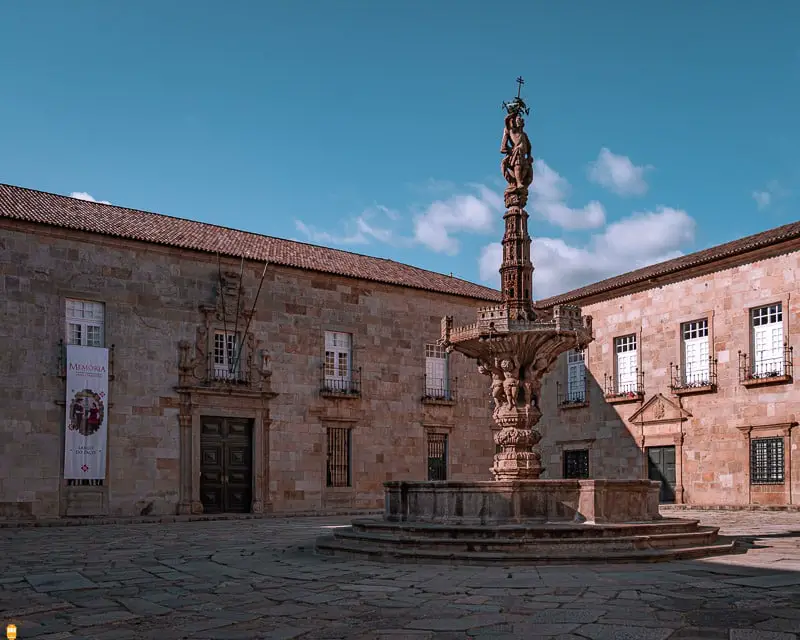
After admiring the oldest cathedral in Portugal and surrounding area, head to another of the beautiful religious buildings in Braga – the church Igreja de Santa Cruz.
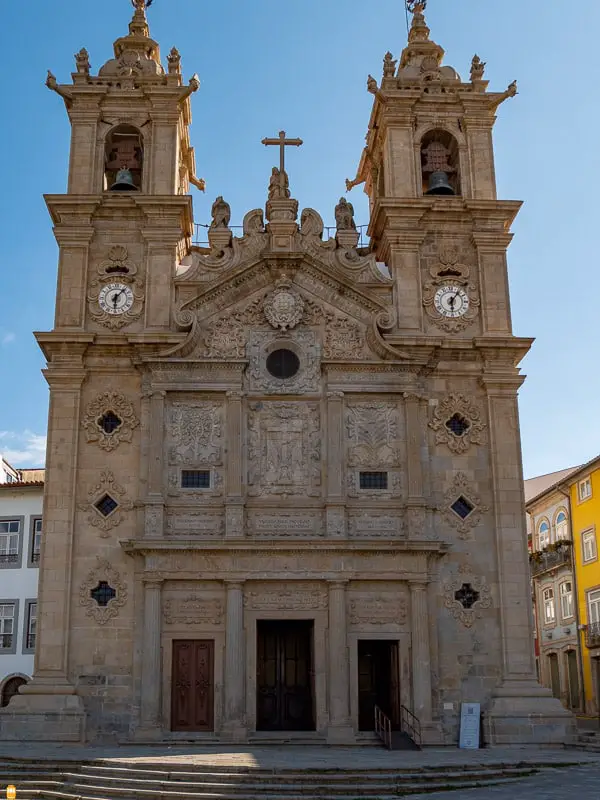
Built in Baroque and Mannerism styles from the 17th century, this church was reconstructed less than 100 years later because of its poor condition.
The amazing facade, that still remains from the “first church” was restored in the beginning of the 21st century and it is, for me, the most beautiful facade of all the churches in Braga.
In this location and fighting for the spotlight with Santa Cruz Church, you’ll find the church Igreja de São Marcos.
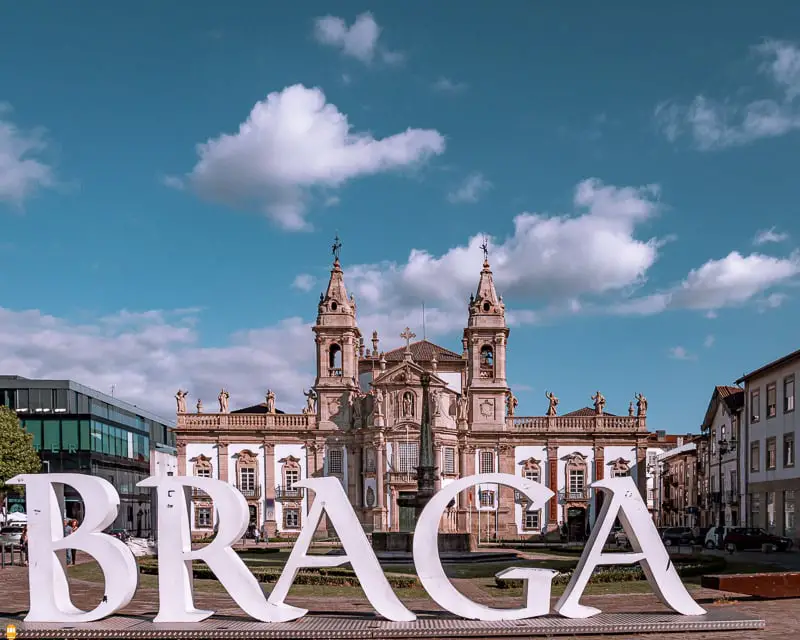
Inaugurated in the first half of the 19th century and property of Santa Casa da Misericórdia de Braga, an institution that helps the sick and poor, São Marcos Church was the one that surprised me the most!
Contrary to Santa Cruz Church, this church fascinated me for its interior because of its unique style that stands out from the others in the city. When I visited this church, I felt I was visiting a smaller version of the National Pantheon, in Lisbon.
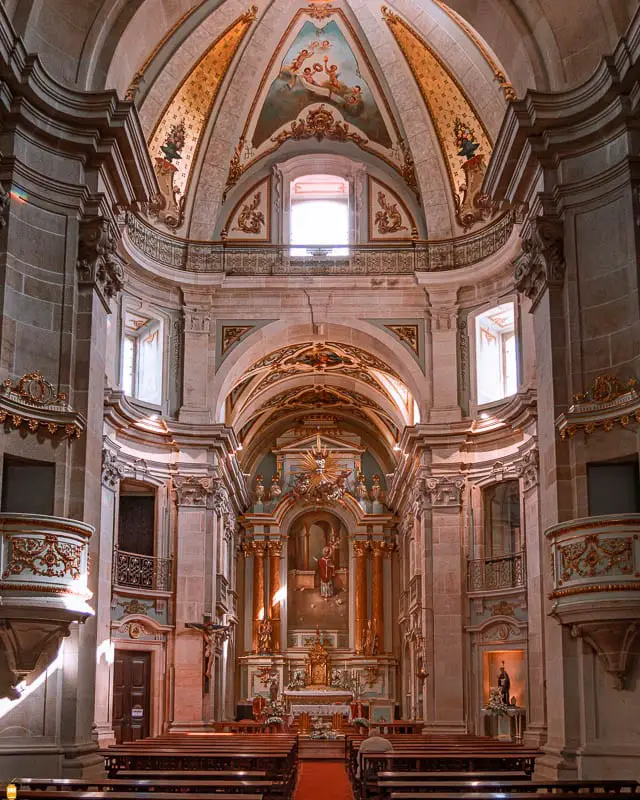

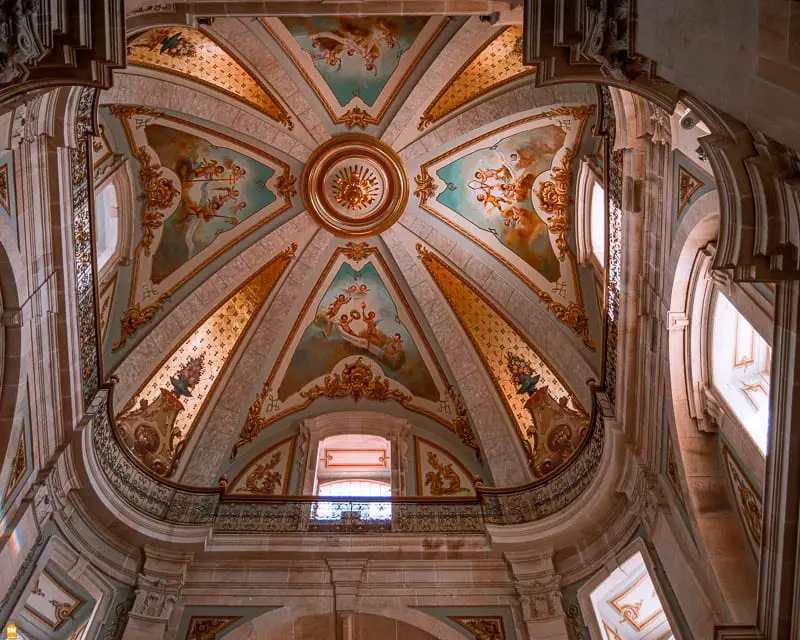
Finally and before returning to your car, know that you’ll find close to these churches one of the most beautiful theatres in Portugal and a reference in the performing arts world, the theatre Theatro Circo.
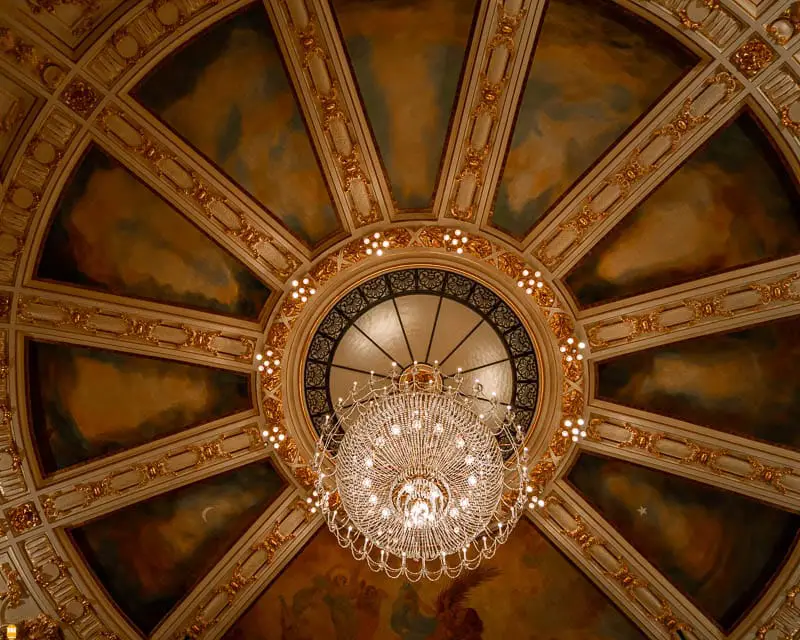
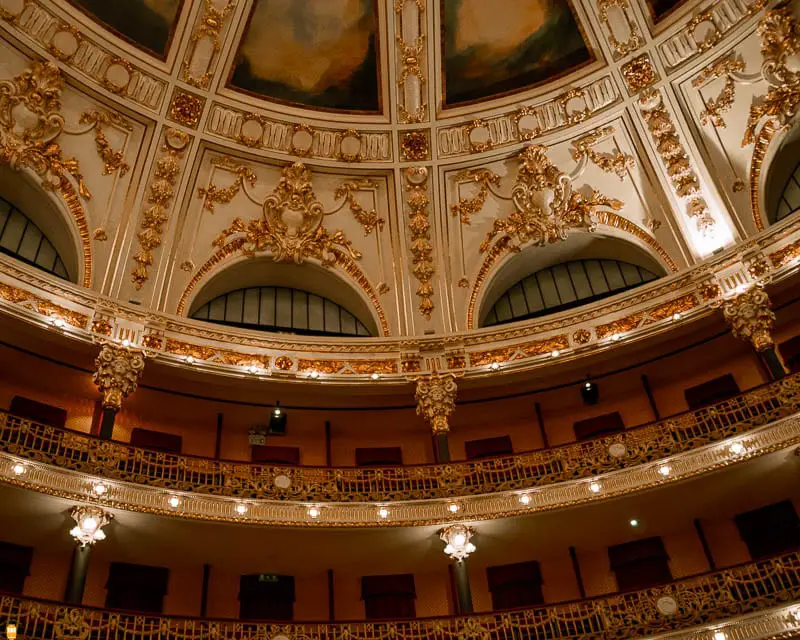
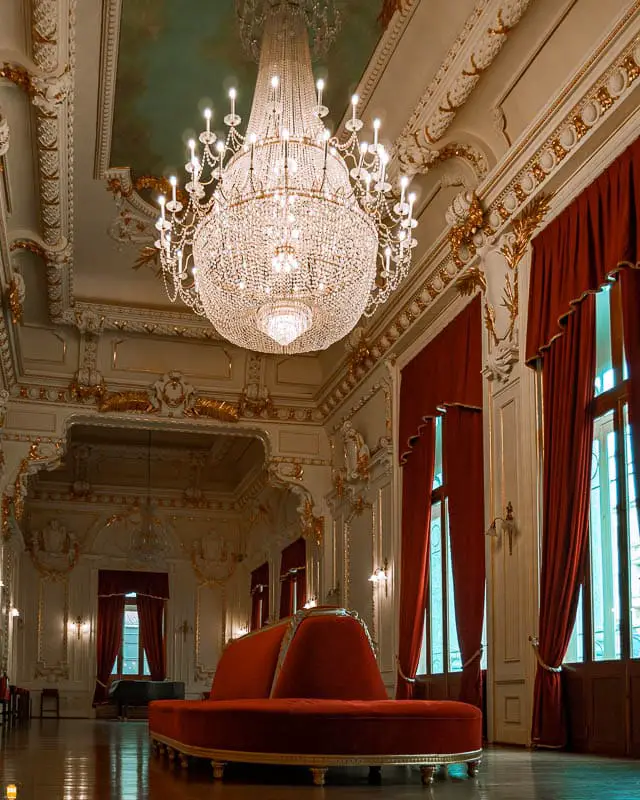
You should know that, if you visit Braga on a Monday or Saturday, you’ll have the opportunity to take a one-hour guided tour to this beautiful theatre and discover the secrets hidden here.
You can visit this place at 14:30, if schedule doesn’t change due to show programming. I loved visiting Theatro Circo and I recommend every one to see this place!
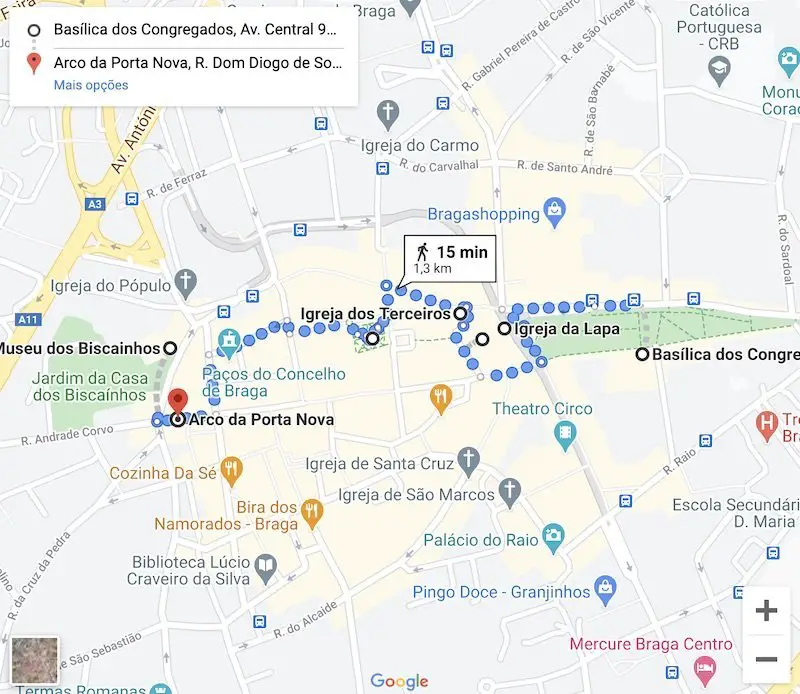
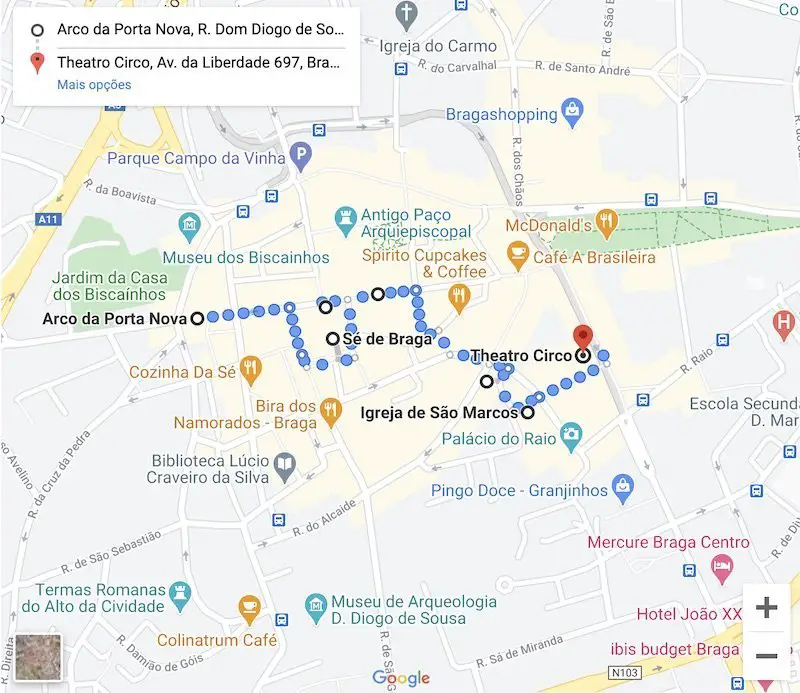
Day 6 – Ponte de Lima
This sixth day will be entirely to visit Ponte de Lima, one of the oldest and most beautiful towns in Portugal, located just 36 km away from Braga city. Founded in the beginning of the 12th century, this town is another stopping point for people wanting to visit Northern Portugal.
When you get to Ponte de Lima, park your car close to the medieval bridge (free parking) so that you can explore the historic centre on foot and be amazed with the several treasures you’ll find there. In the fair days, you can park your car in Parque do Mercado (not free) or in the parking lot Plátanos (free parking).
After parking your car, go to the landmark of this town – the Roman and medieval bridge. This bridge was built 2000 years ago by the Romans to connect the cities of Braga (in Portugal) and Astorga (in Spain); centuries later, the bridge was extended due to the river deviation.
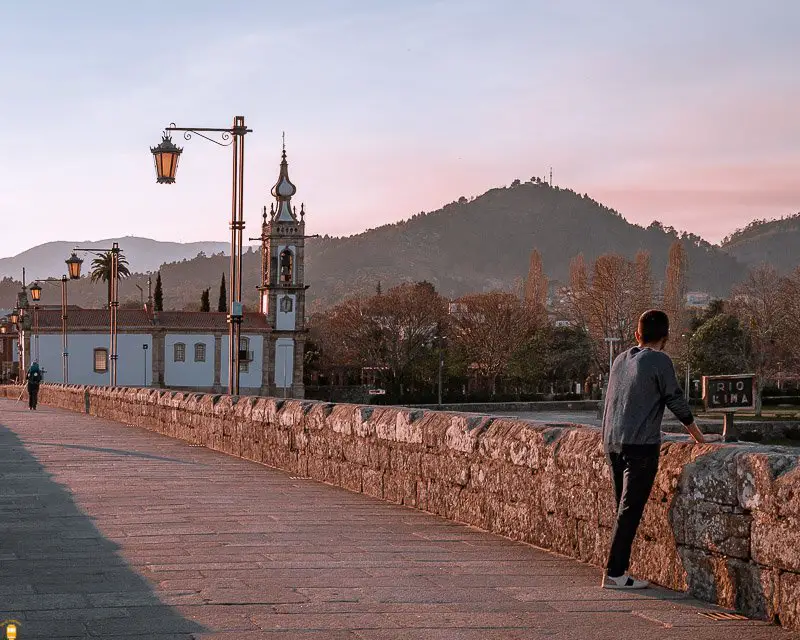
Throughout the centuries, this bridge has been playing a very important role in the development of this region and it has been for a long time a waypoint for pilgrims making their way to Santiago de Compostela, through the Portuguese Way of St. James.
Stop for a few minutes on the bridge to admire the beautiful views over Lima river and the town; you’ll also find in the river banks statues of Roman soldiers (south) and their captain (north).
According to legend, in the year 135 AD, Roman soldiers refused to cross Lima river. The beauty of this place reminded them of Lethe and the river of Oblivion that caused memory loss for those who would cross it or drink its water.
Angry with this situation, the Roman captain Decius Junius Brutus decided to cross the river tho show his soldiers that they were wrong. Once he got to the north bank, the captain started calling each soldier by their name, which meant that they weren’t in the presence of the river of Oblivion.
After crossing the river, the Roman soldiers headed north and conquered Galicia, a Spanish region.
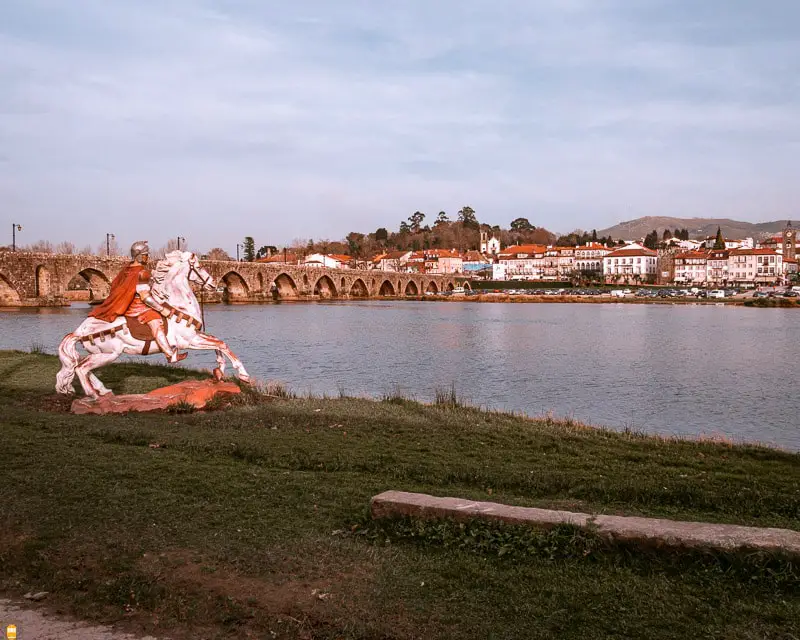
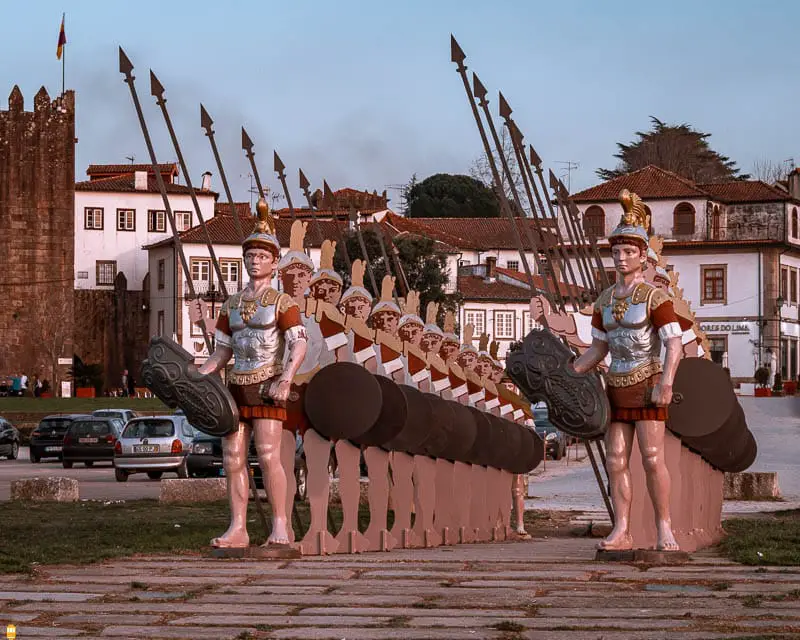
Back to your walk, once you cross the bridge to the north bank, turn right and head to the park Parque do Arnado. Here, you’ll have the opportunity to admire a beautiful thematic architectural park in which you’ll find styles from all over the world.
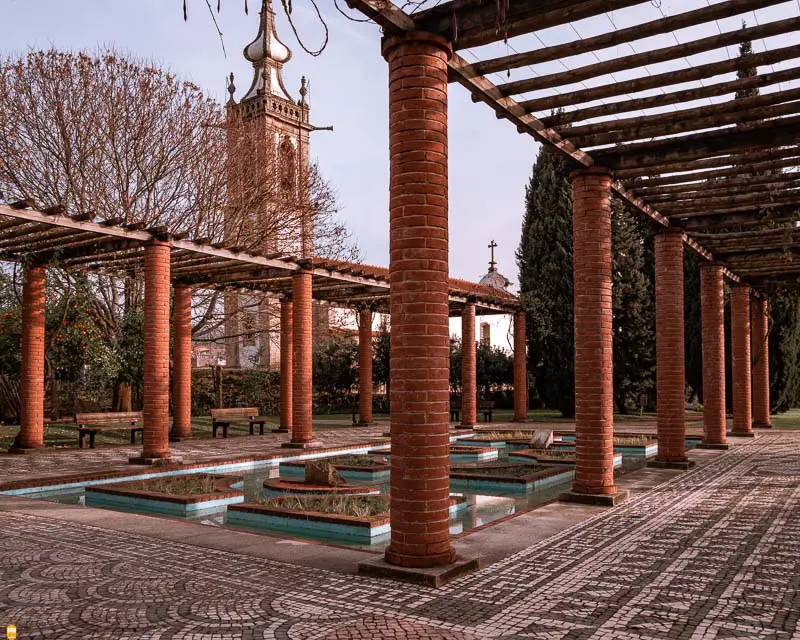
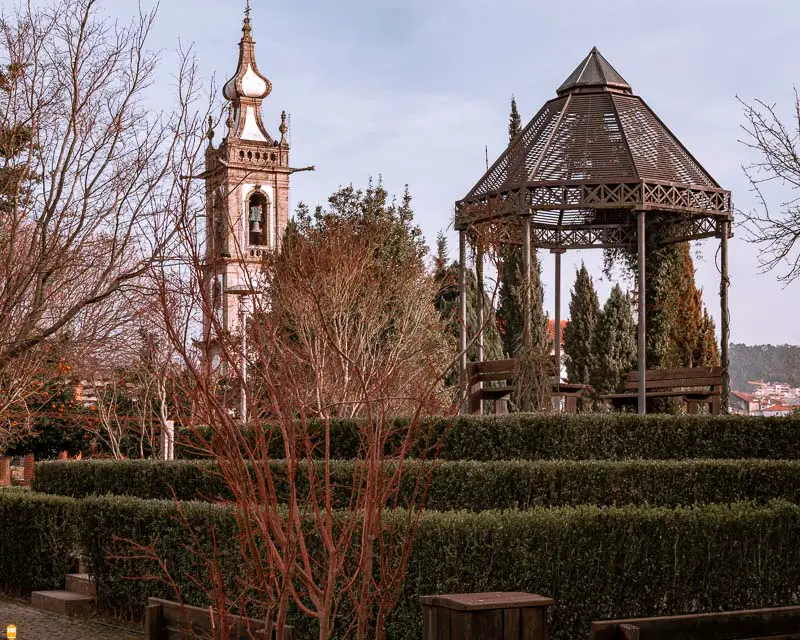
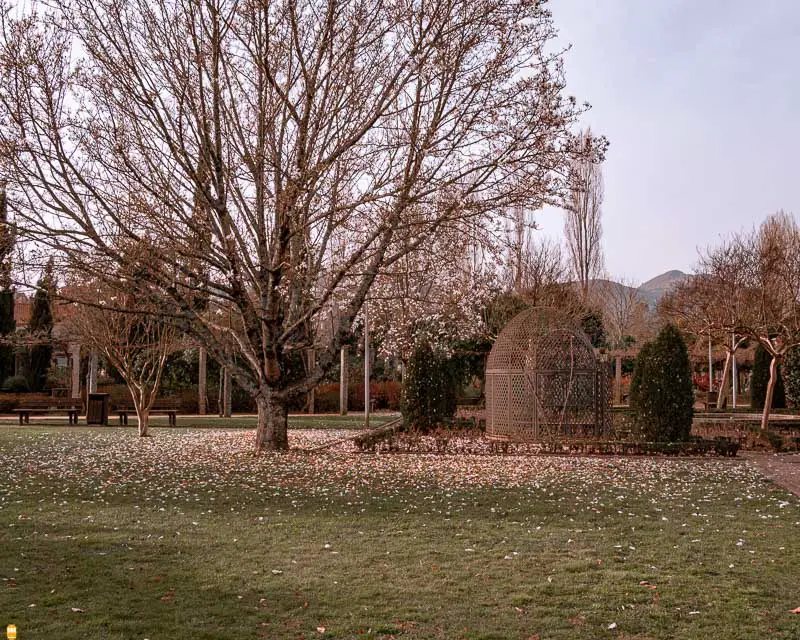
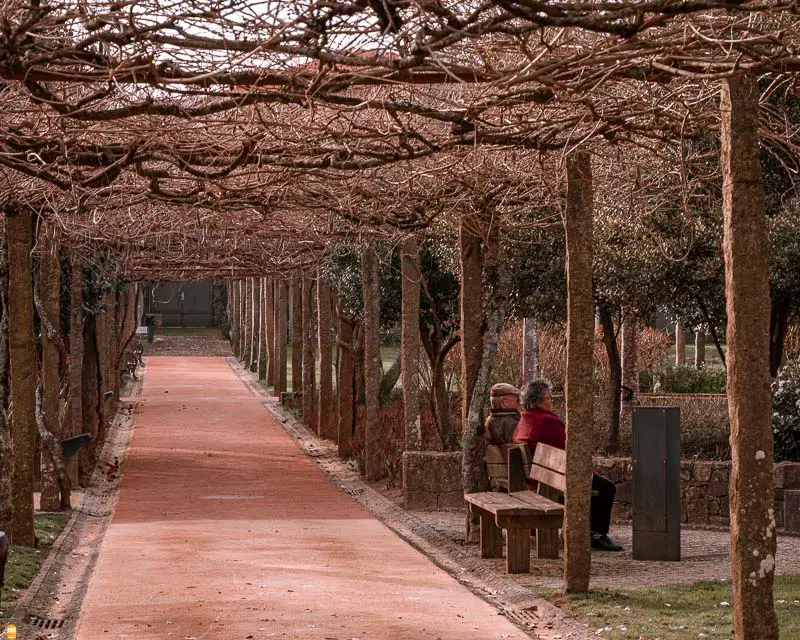
You can also visit at this park the Territory Interpretation Centre (Centro de Interpretação do Território), a place that reminds me of my childhood because it shows the traditions and the daily life of inhabitants of this town and surrounding villages.
Next, visit the Portuguese Toy Museum (Museu do Brinquedo Português), located just a few metres away from Parque do Arnado. Among other reasons, here you’ll discover toys that the Portuguese children used to play with until 1986, the time when Portugal joined the European Economic Community that also meant a stopping point in the production of Portuguese toys.


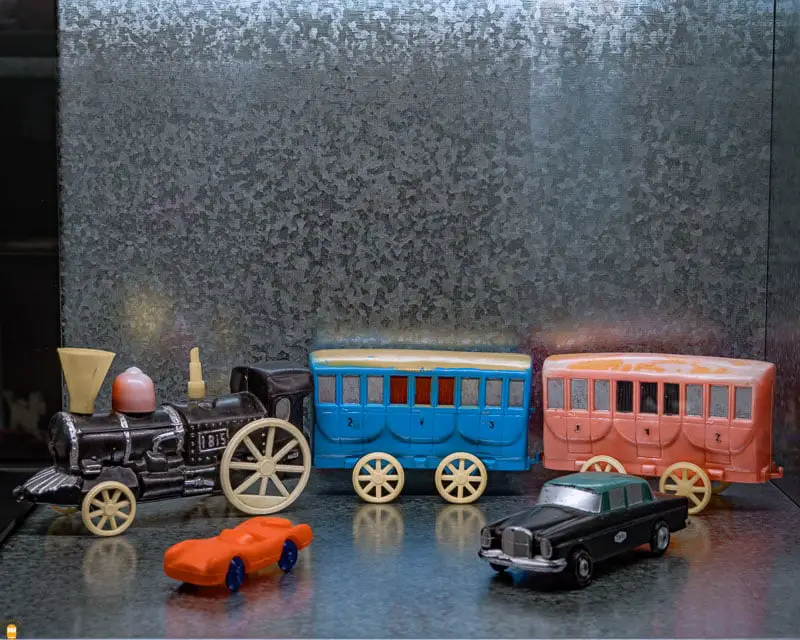
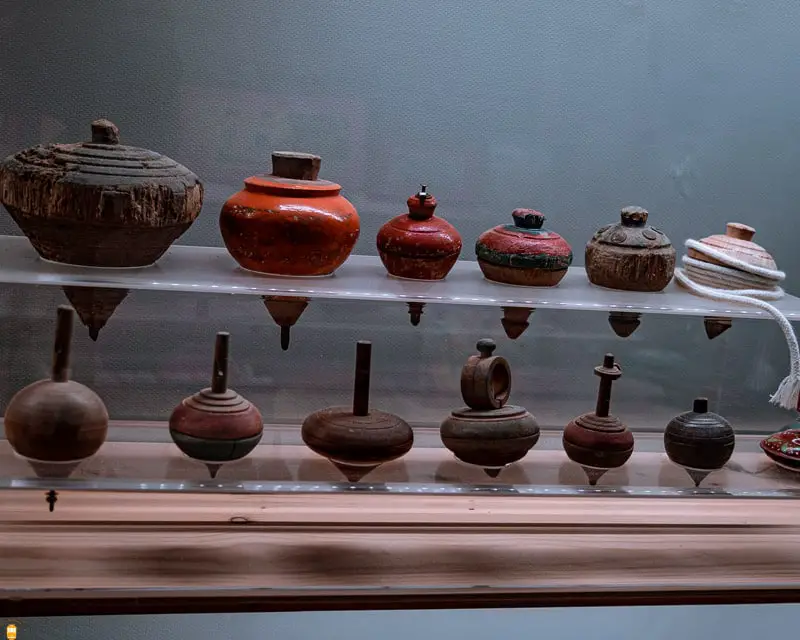
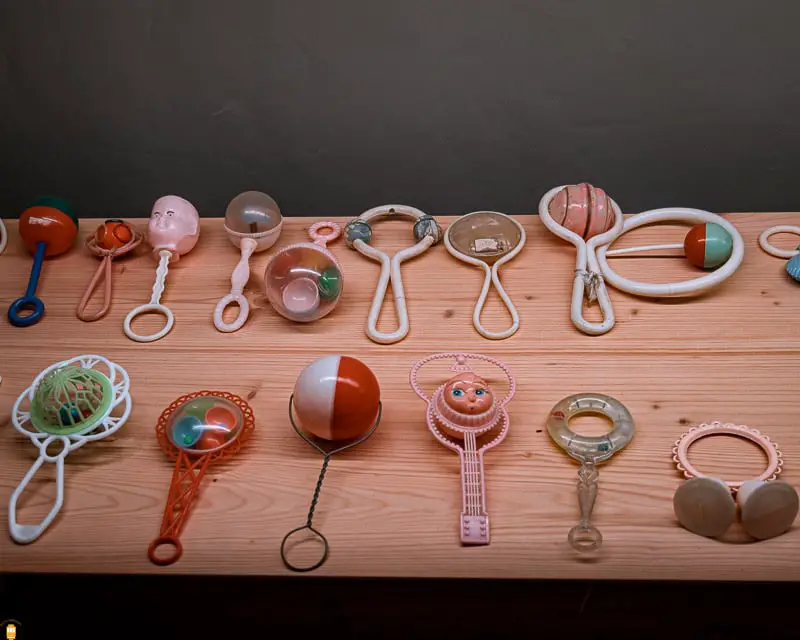


Apart from the toys, you can also access two rooms where two beautiful scale models stand out, depicting a North-European city and some of the most well-known Portuguese monuments. This is definitely a place you can’t miss during your visit to Ponte de Lima!
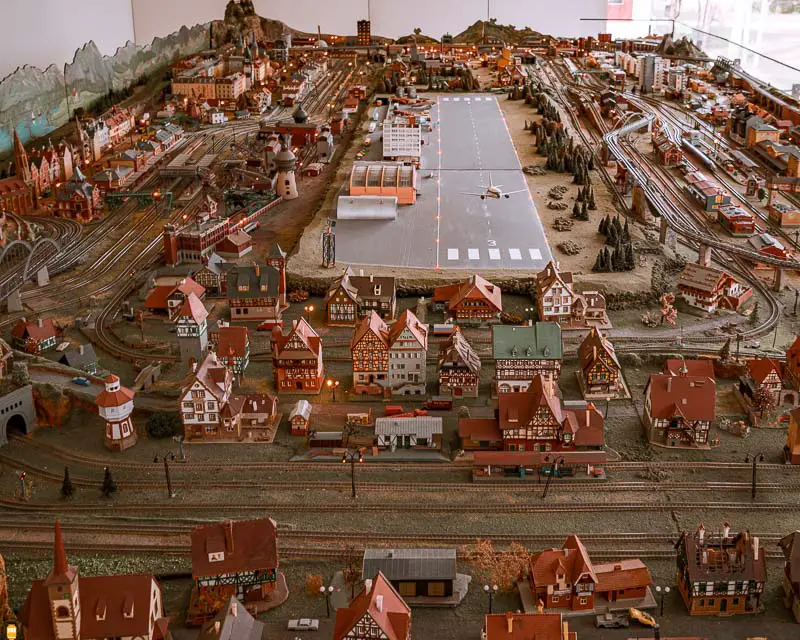
After visiting the Toy Museum, cross the Roman and medieval bridge again and go explore the historic centre of this town.
Start by admiring the square Largo de Camões, located very close to the bridge and a stop you must make while in town. You can take some time to relax in one of the bar terraces you’ll find there and admire the surrounding beauty, especially the wonderful fountain that dates back to the beginning of the XVII century.
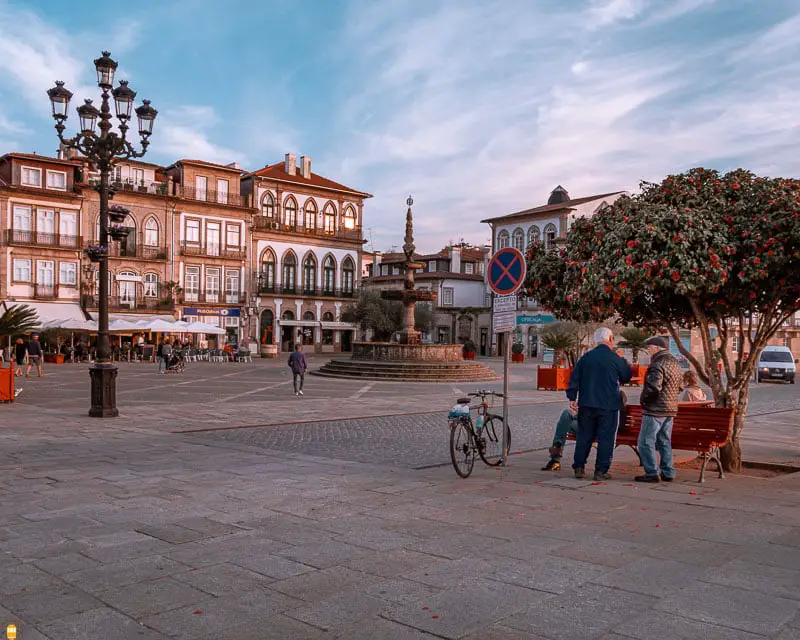
Next, walk some metres to the square Largo Delfim Guimarães where you can climb the steps of the stairway that will take you to the chapel Capela das Pereiras. There, you can admire this chapel built in 1525 and enjoy the beautiful views of the town and the surrounding mountains.

Another place you can’t miss during your visit to Ponte de Lima is the Vinho Verde Interpretation and Promotion Centre (Centro de Interpretação e Promoção do Vinho Verde), located just 190 metres away from the chapel. There, you’ll learn more about vinho verde (a Portuguese type of wine) produced in the biggest wine region in Portugal.
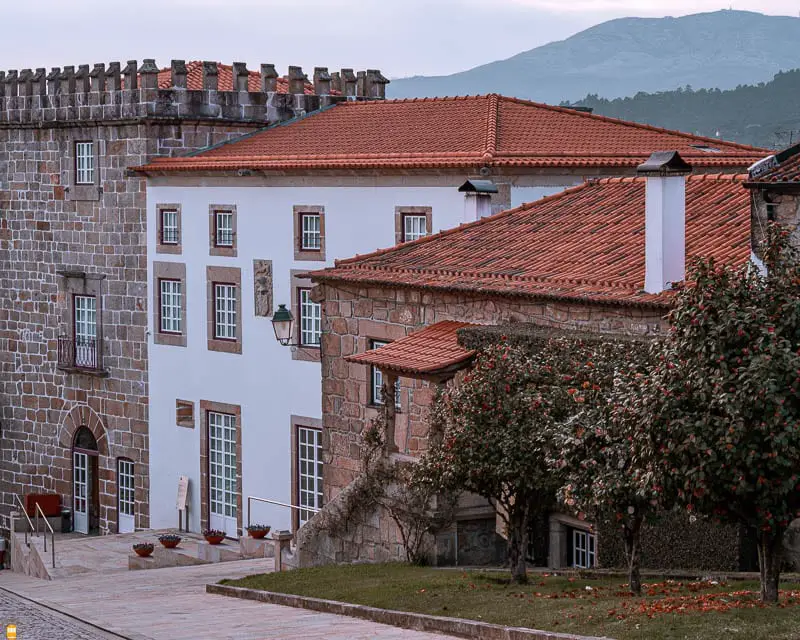
Aside from all the information you’ll get at this museum, know that you can also admire some tools used to produce this wine as well as its means of transportation.
Because of these reasons, it isn’t hard to guess why this place means a lot to me – it takes me to my childhood times, when I used to help my family with the harvests, using the same type of tools that you can now see at this interpretation centre.
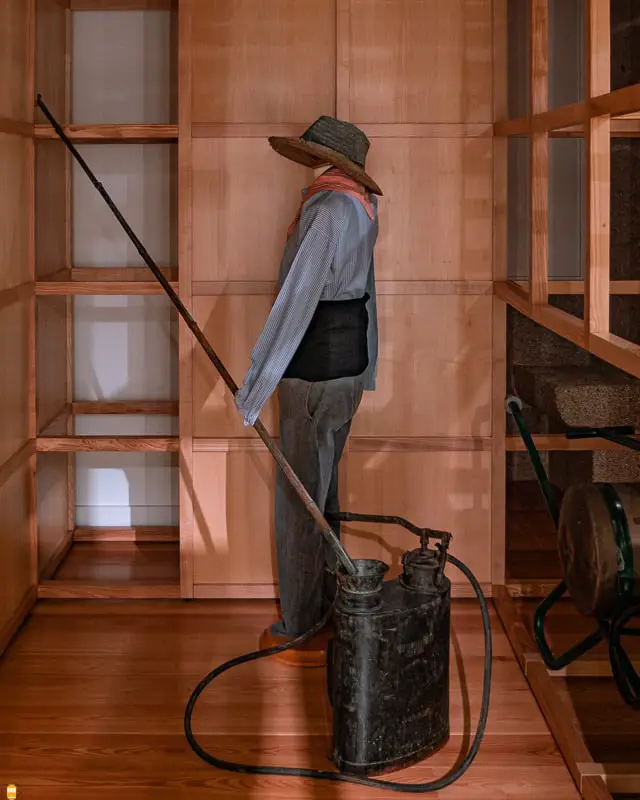
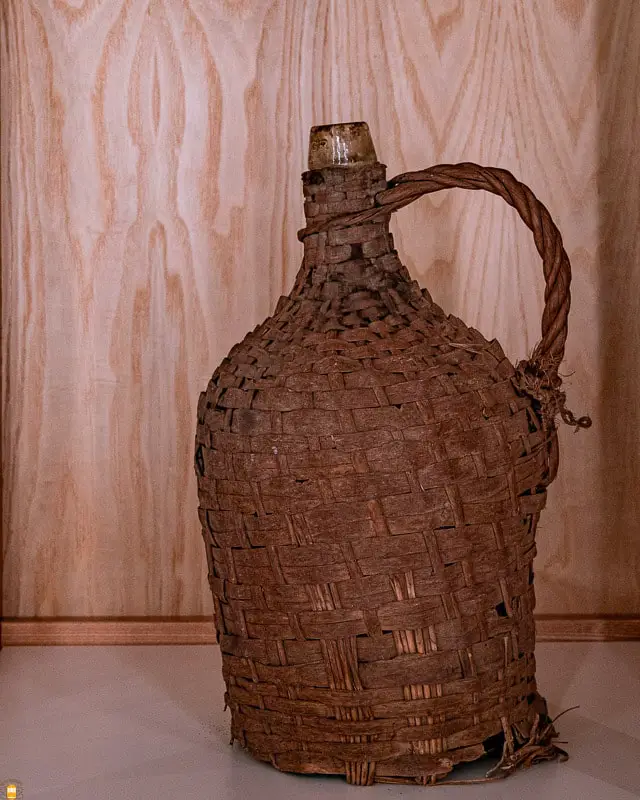
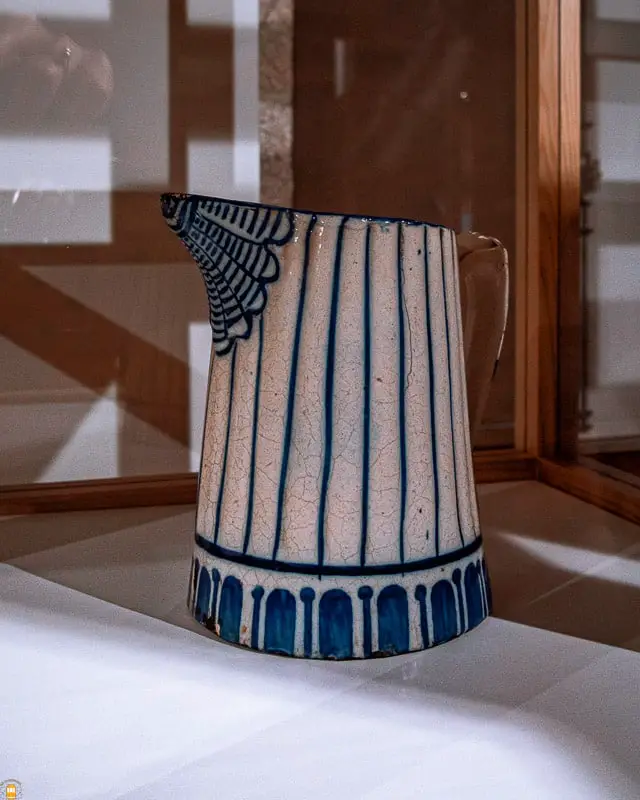
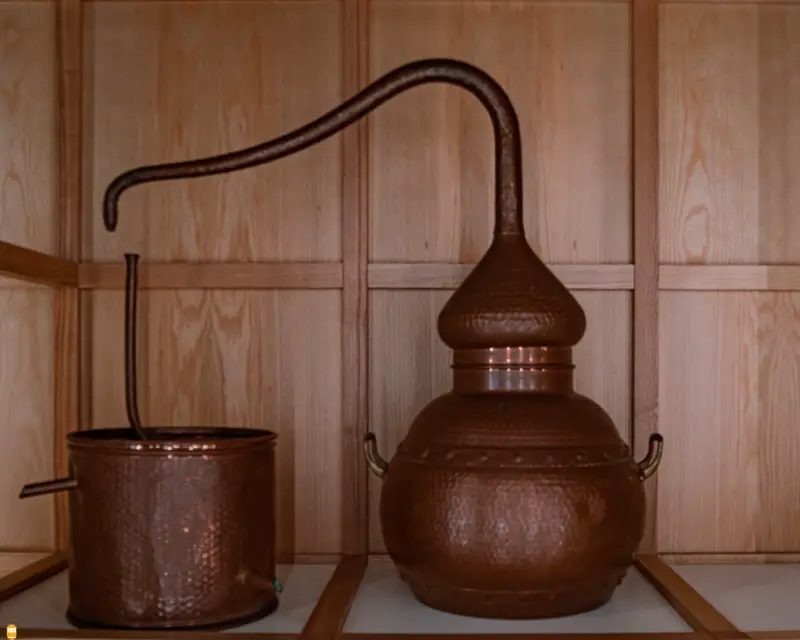
Needless to say that, when you finish your visit to this centre, you’ll have the opportunity to savour a glass of vinho verde.
Continue your walk down to the square Praça da República where you can admire the town hall beautiful building.
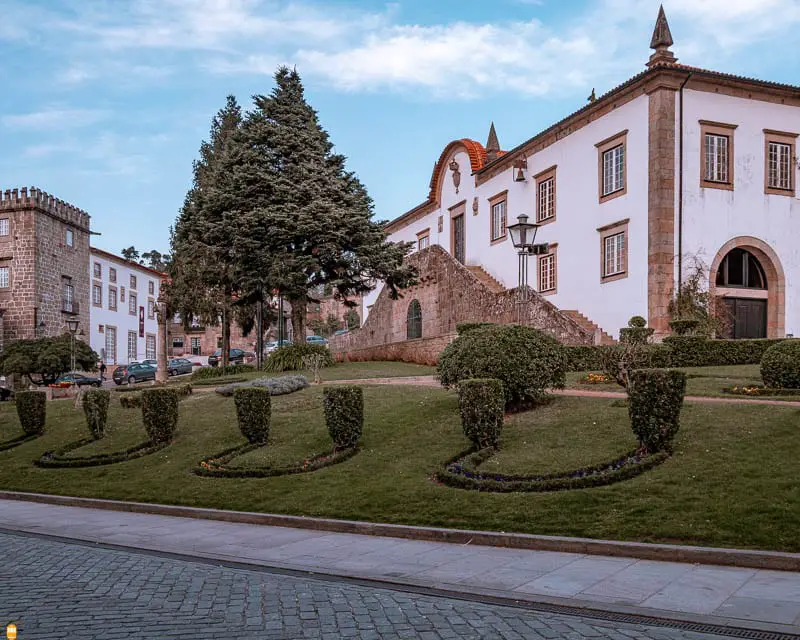
A few metres ahead, you’ll find the statue of the Countess Dª. Teresa, the founder of this town. Close to this statue you can admire the beautiful palace Paço do Marquês de Ponte de Lima, presently the Military History Interpretation Centre (Centro de Interpretação da História Militar).
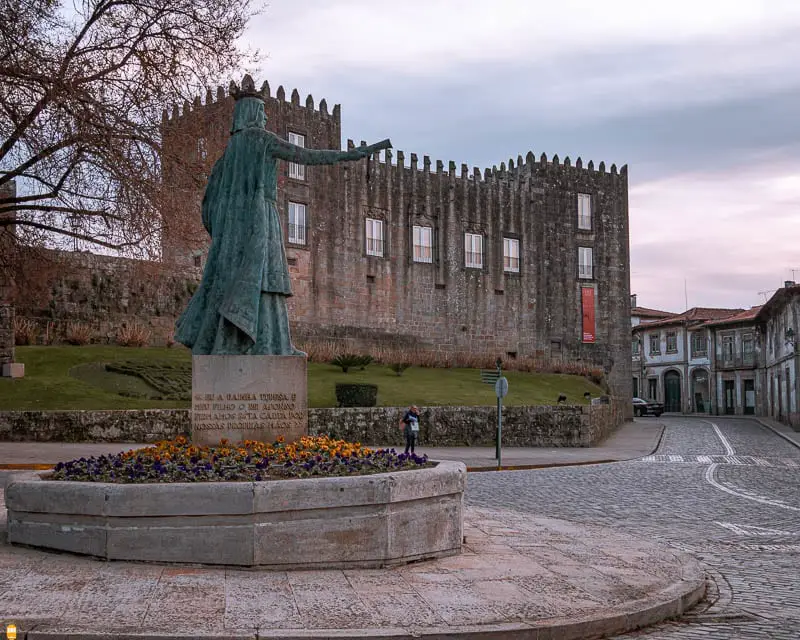
If you have time, don’t hesitate to visit the museum so that you can learn more about the Portuguese military history from the Roman period until the 19th century.
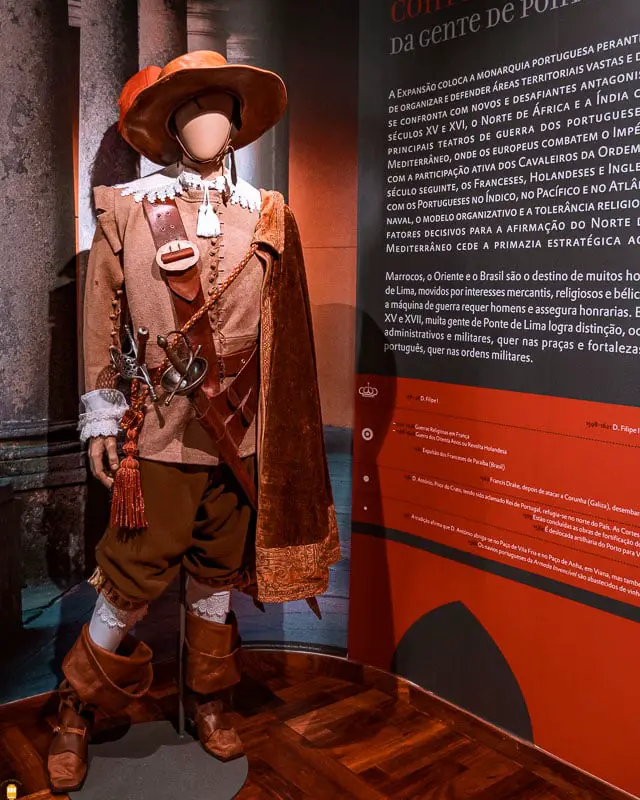
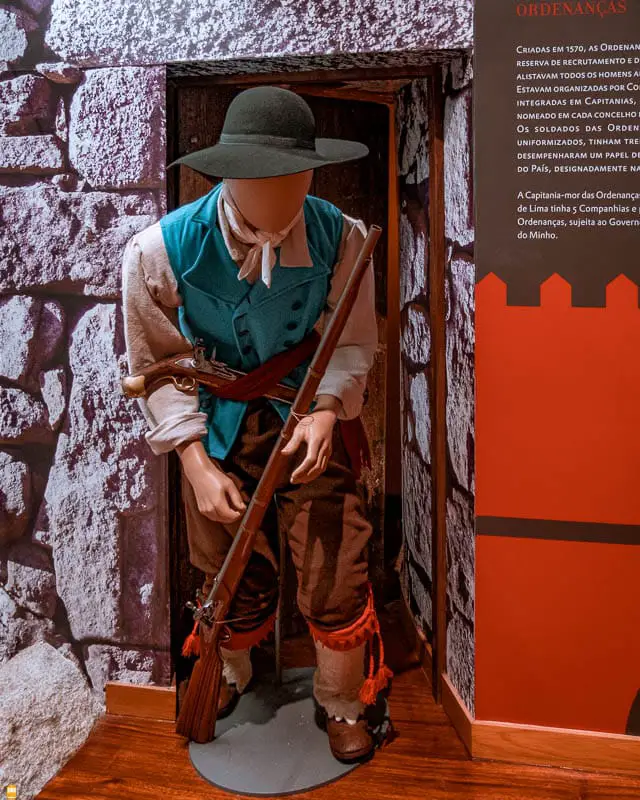

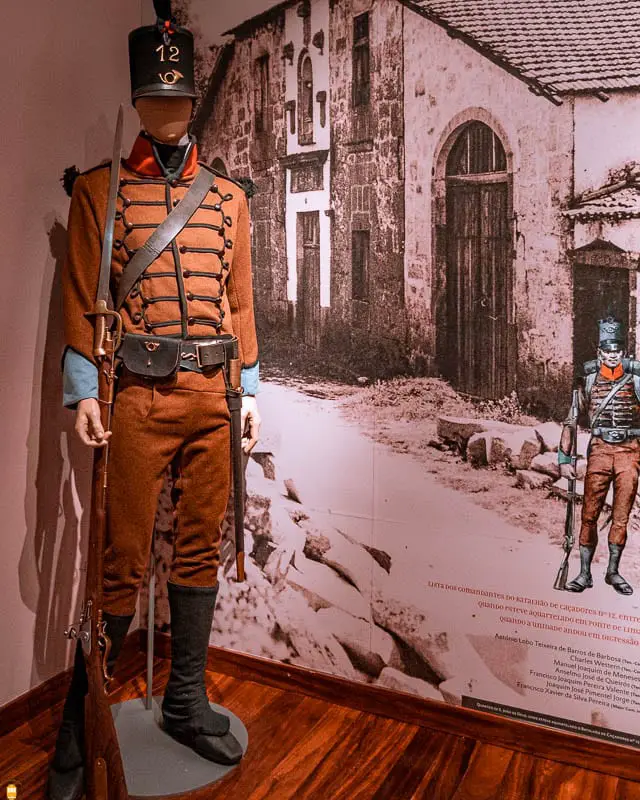
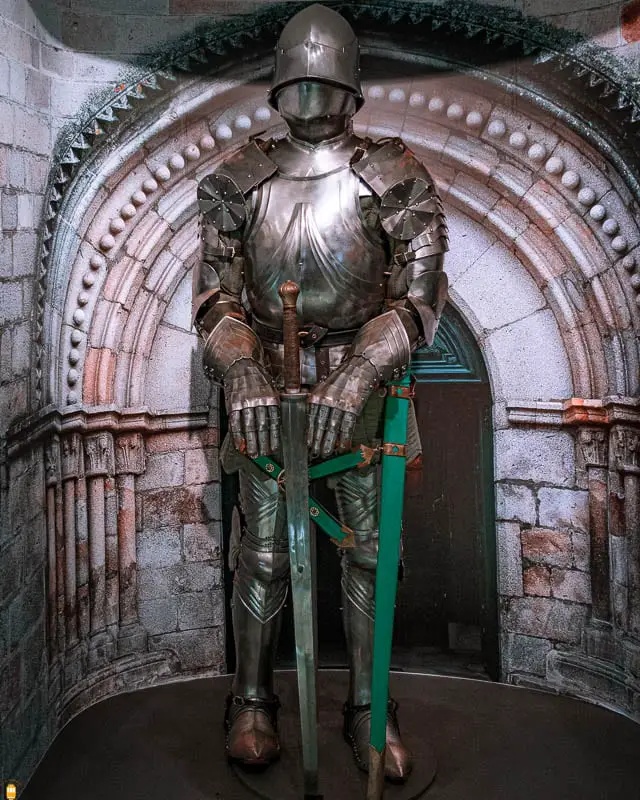
To wrap up your visit to this museum, don’t miss the opportunity to go to the roof to enjoy the wonderful views of the town and surrounding mountains. A must-see!
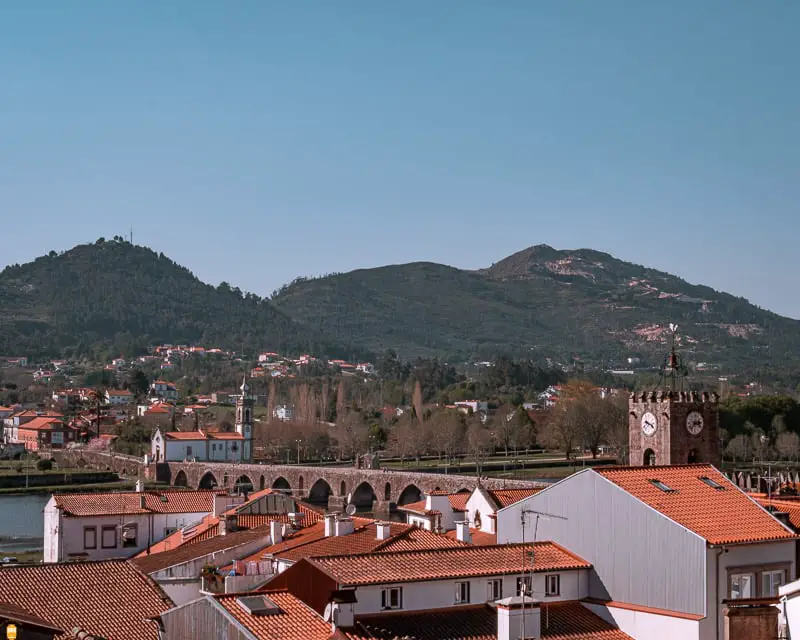
Next, head to the beautiful church Igreja da Misericórdia de Ponte de Lima. Here, you can admire a church influenced by many architectural styles like the Romanesque, Gothic and Neoclassical, a consequence of several transformations the church underwent since the 15th century.
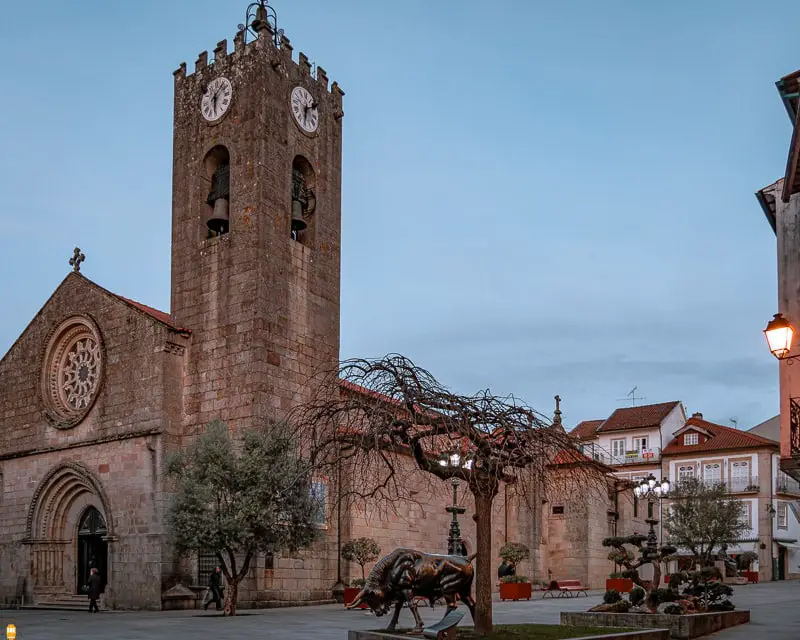
Go down the street Passeio 25 de Abril where you can admire the two remaining towers of the old town wall, built during the 14th century: the São Paulo Tower and Cadeia Velha Tower.

In São Paulo Tower you’ll have the opportunity to admire a beautiful glazed-tile panel and discover where the worst floods ever in Ponte Lima rose to. Close to the Cadeia Velha Tower you’ll find the town gate Porta Nova, one of the old entrances to the fortified town.

To close the book on this sixth day of your travel guide in Northern Portugal, go for a walk along the beautiful avenue Avenida dos Plátanos and be amazed with this pedestrian area side by side with Lima river.

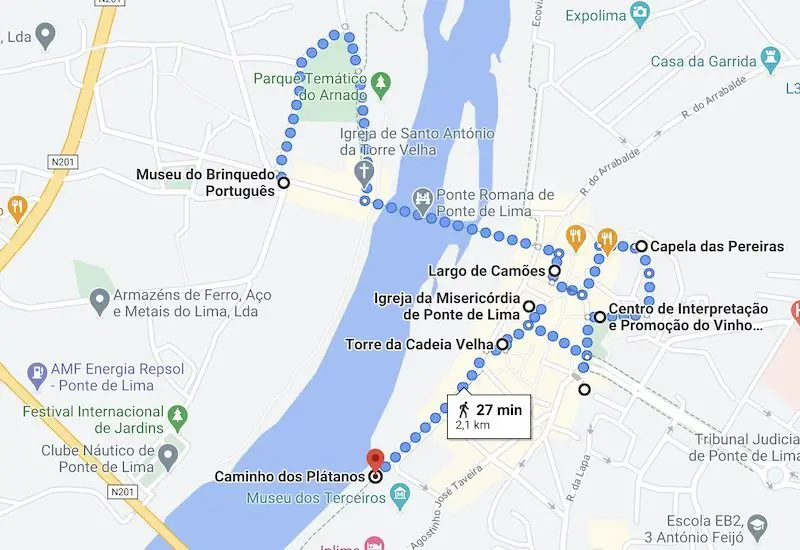
Where to sleep in Ponte de Lima
This accommodation is a guest house and is located at the heart of the historic centre of Ponte de Lima. Considered one of the best places to spend the night by those visiting the town and Northern Portugal, what stands out here is its beautiful decoration, both rustic and modern – the guests will feel like they’re at typical house of this region.
Another reference hotel in Ponte de Lima, Paço de Vitorino is located right beside Lima river south bank. The rooms offer magnificent views over the river, the garden and surrounding beauty.
Inside this accommodation, you’ll also be amazed by the luxury and detail and the small but beautiful library and two halls with a fireplace for the cold days.
Day 7 – Viana do Castelo
After your visit to one of the most beautiful towns in Northern Portugal, it is time to head to Viana do Castelo, located 30 km west of Ponte de Lima.
Centuries-old Viana do Castelo grew alongside Lima river mouth and it became an important maritime trading post and from here Portugal exported wine, fruit and salt; in the 20th century Viana’s harbour became one of the most important fishing ports, especially because of codfish, a delicacy much appreciated by the Portuguese.
When you get to this city, I suggest you park your car at the shopping centre Estação Viana Shopping or at the free parking lot next to the hospital-ship Navio-hospital Gil Eannes.
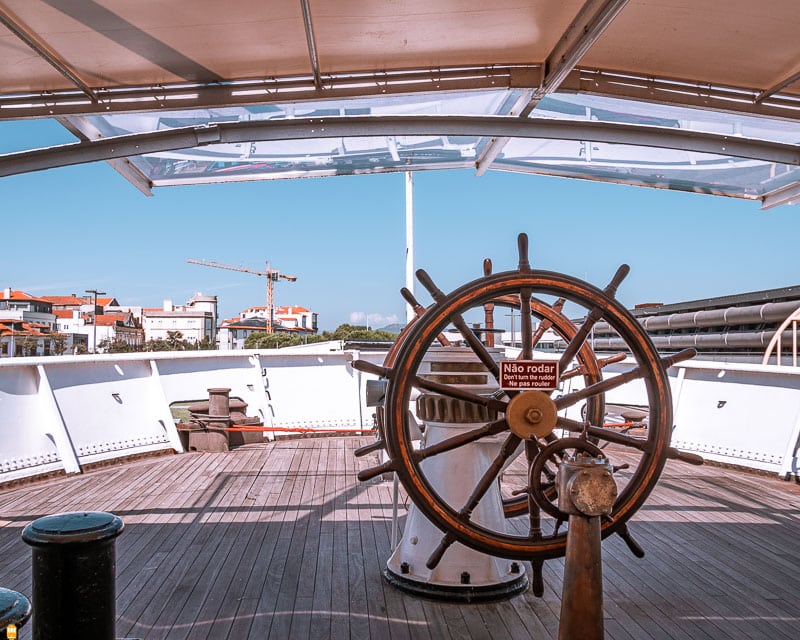

A visit to the hospital-ship Gil Eannes is precisely what I recommend you to do first once you get to the city. This ship was, for many years, a supporting ship for the Portuguese boats that went fishing codfish and it was here that the fishermen were treated whenever they needed while in the open sea.
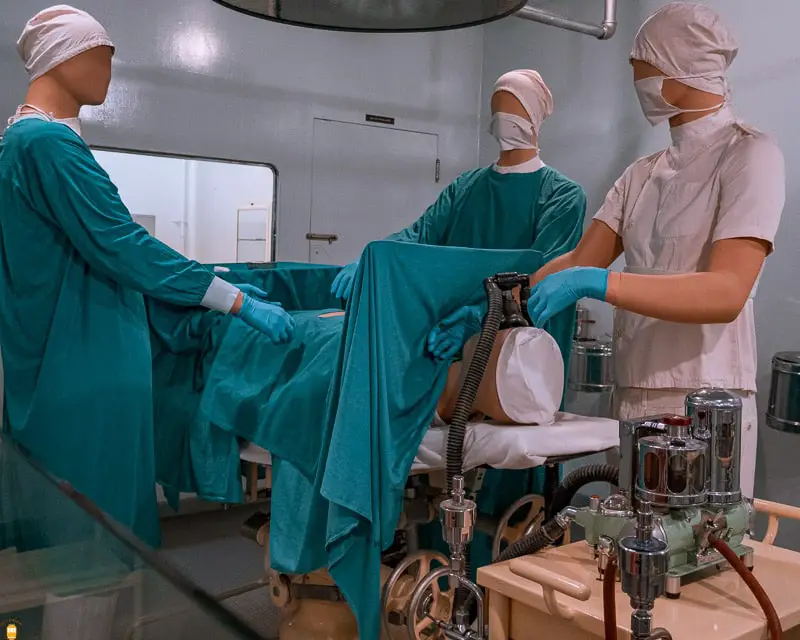
Apart from being a hospital, this ship took supplies, fishing gear and fuel to the ships that were away from Portugal for a long time.
Nowadays, Gil Eannes ship is a reference in this city because it is a museum where you can admire temporary exhibits, the kitchen, the infirmary, the radiology room and much more!
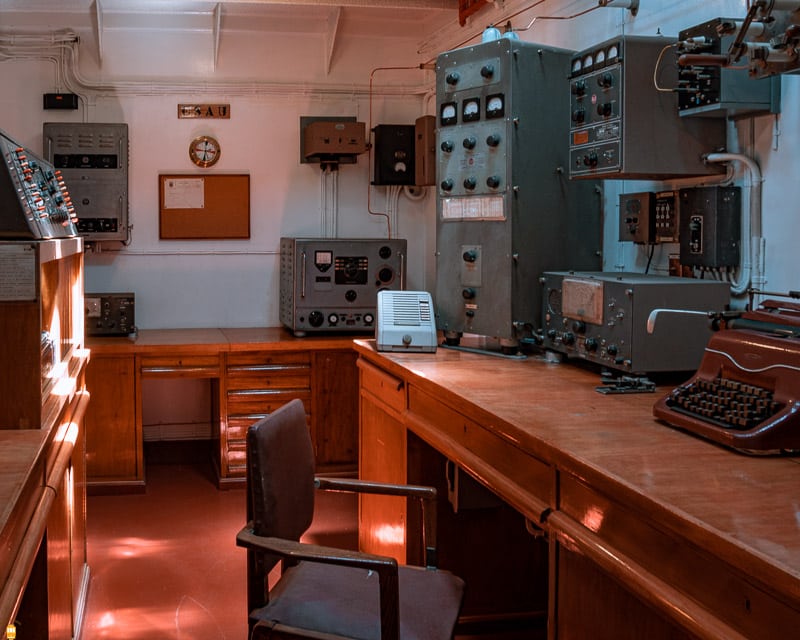

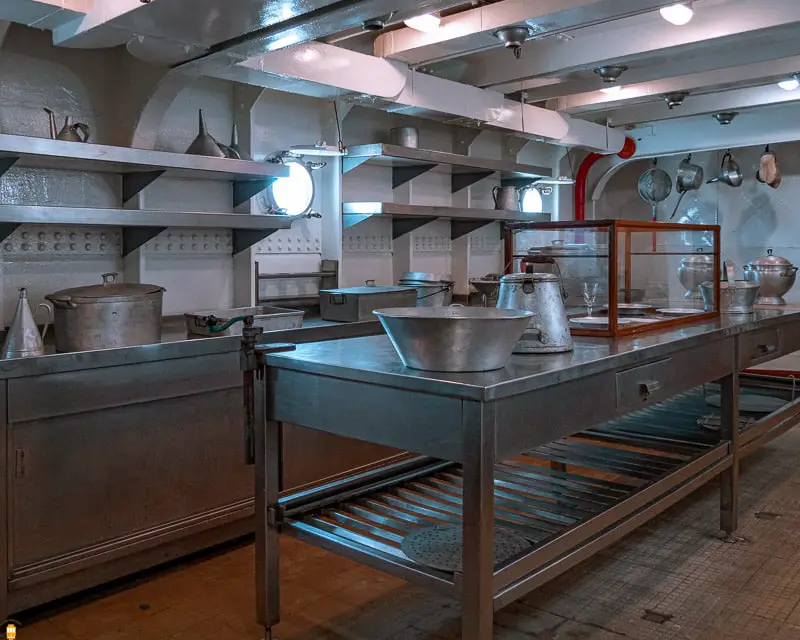
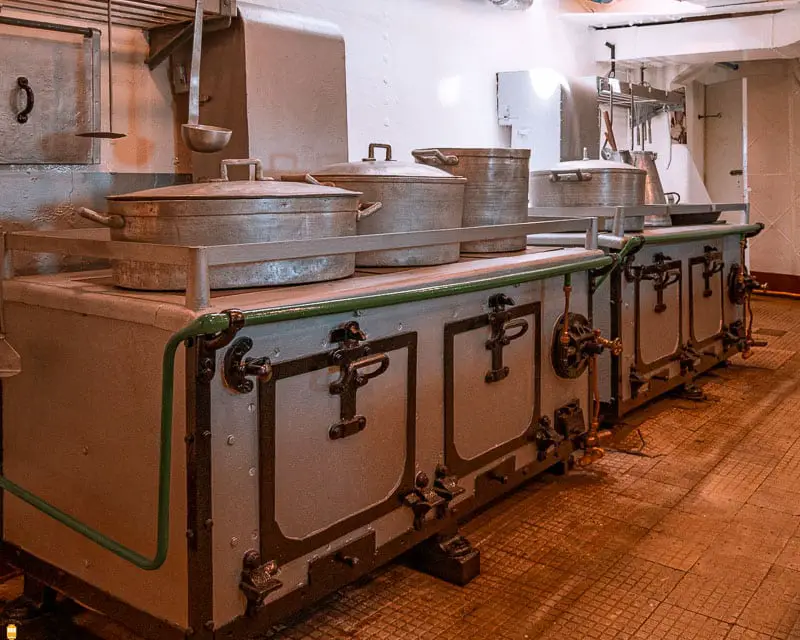

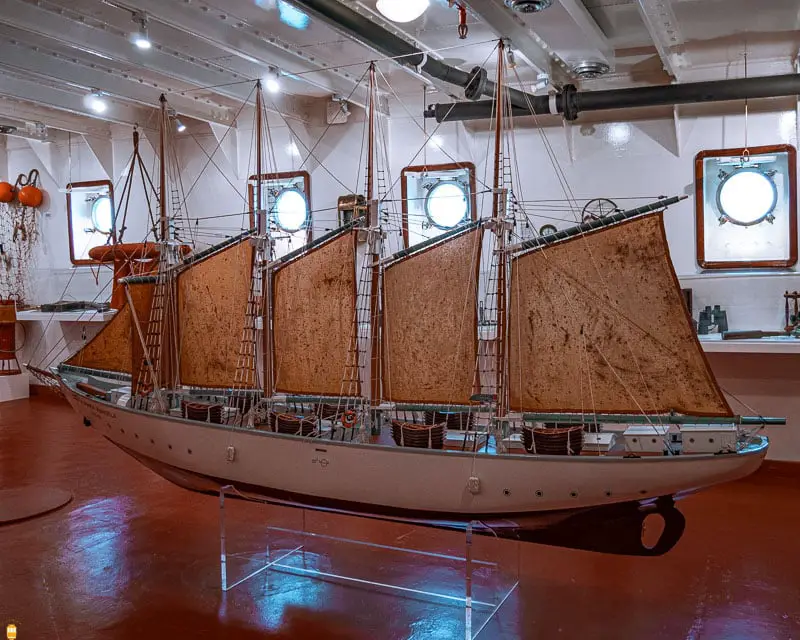
After your visit to this unique museum, go to the garden Jardim da Marginal where you can take the opportunity to admire the beautiful statue of Viana. This statue was erected in the 18th century and depicts a woman holding a caravel, representing the connection between the city and the sea.
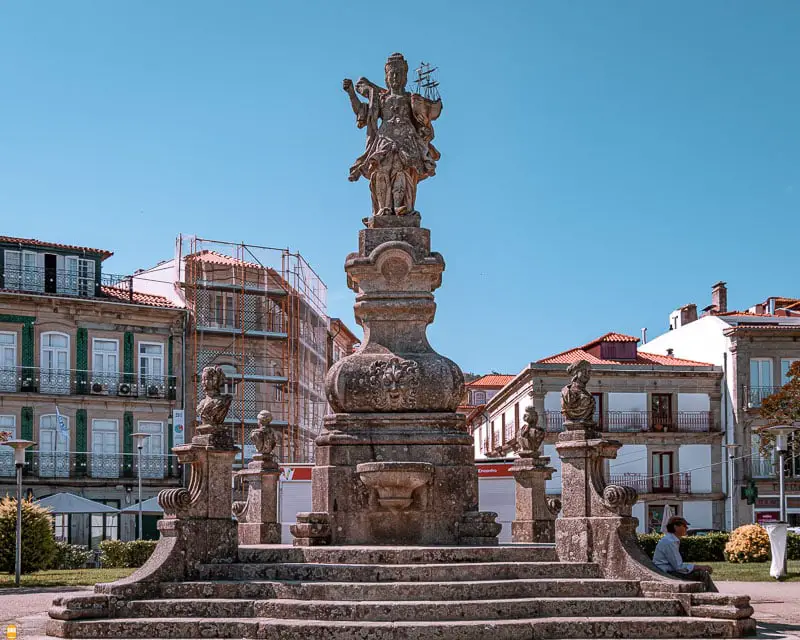
Apart from this statue, know that from the garden Jardim da Marginal you can also admire the bridge Ponte Eiffel, a road and railway bridge built between 1877 and 1878 and designed by the famous French engineer Gustave Eiffel.

Continue your walk and go admire the beautiful cathedral Catedral de Viana do Castelo. This cathedral was built in the 15th century in Romanesque style and stands out for its fortified looks, with battlements on the top of its two towers.
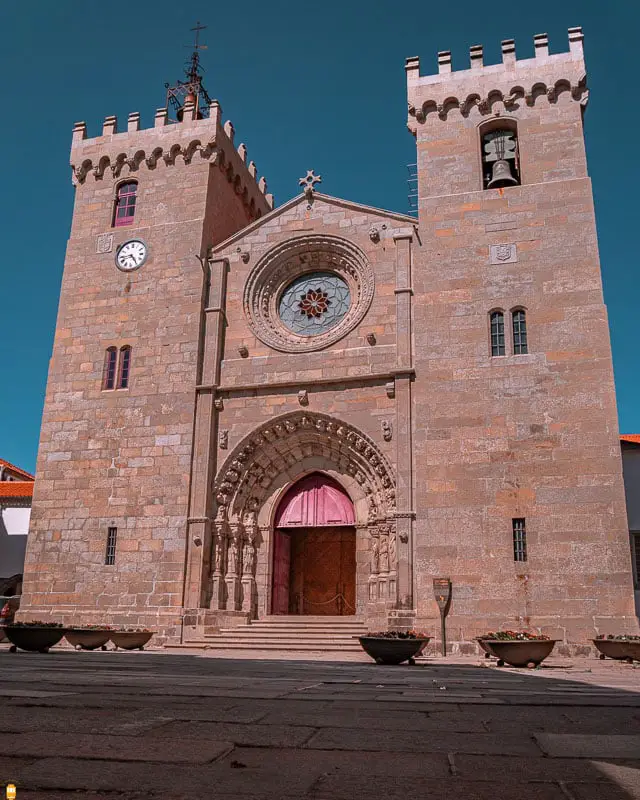
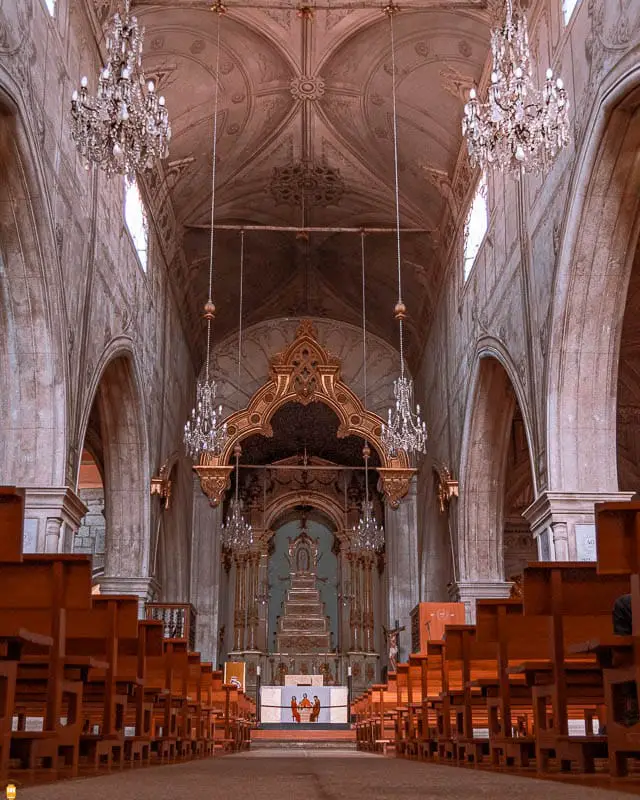
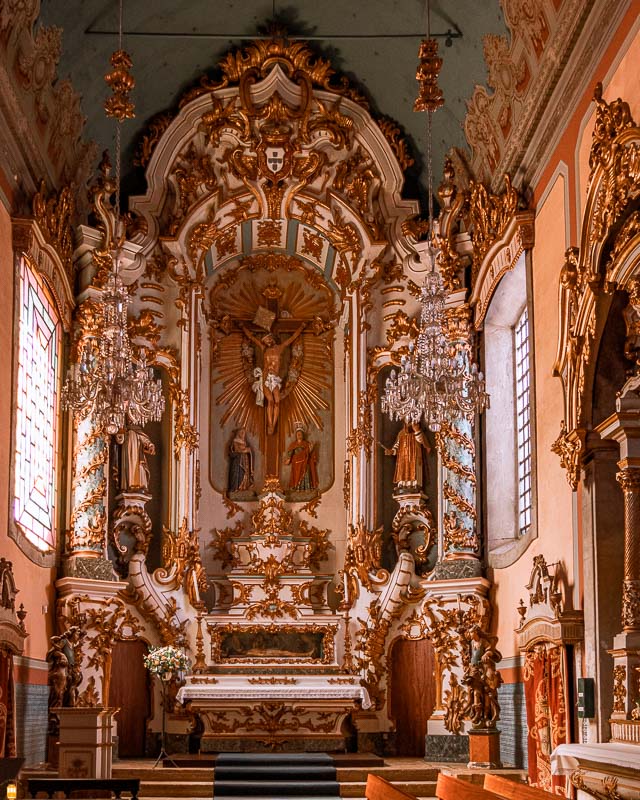
Another thing I must point out is the beautiful Gothic-style portico with scenes alluding to the Passion of Christ and sculptures of the apostles. This is definitely a monument you can’t miss!
After admiring the cathedral, continue your walk to the most beautiful square in the city, the square Praça da República. Don’t hesitate to stop here for a while and admire the beautiful 16th-century fountain in the middle of the square.
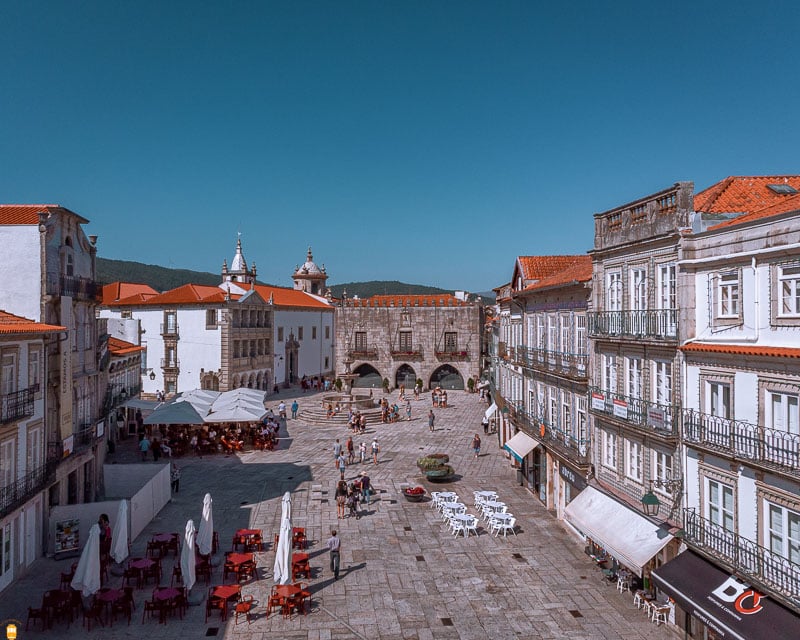
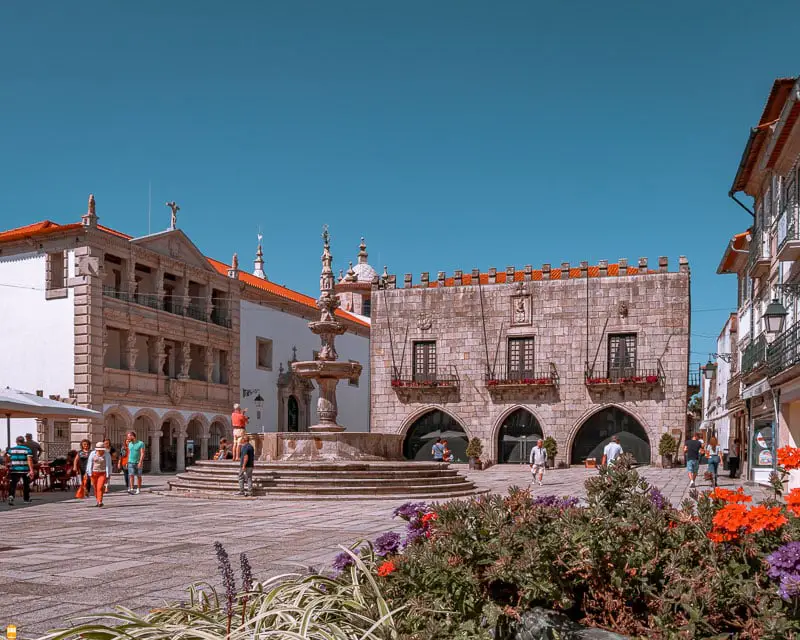
Apart from the fountain, take the opportunity to admire two beautiful buildings constructed in the 16th century as well and that embellish this square even more: the old city hall Paços do Concelho and the church and hospital Igreja e Hospital da Santa Casa da Misericórdia de Viana do Castelo. This last building stands out for its unique structure, unparalleled in the Portuguese Mannerism architecture.
Next, go for a small ten-minute walk to experience something different in your Northern Portugal travel guide – a funicular ride to the landmark of Viana do Castelo, the sanctuary Santuário de Santa Luzia.

As an alternative, you can return to your car and drive to the sanctuary.
The first thing that stands out in this sanctuary is its location – this is definitely the best viewpoint with the best views over the city, Lima river and the Atlantic Ocean and from here you can enjoy the best sunset in this region.
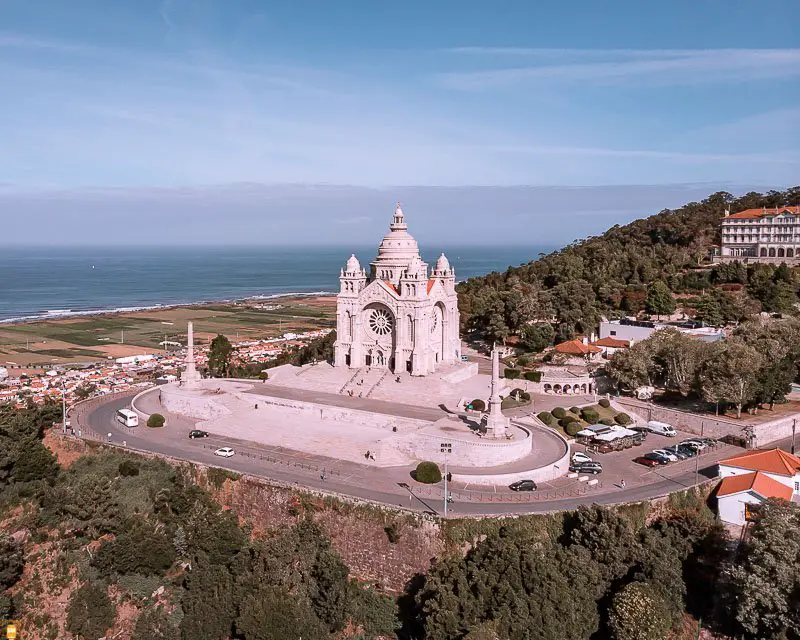
Apart from the breathtaking views, the highlight of this place is definitely the beautiful basilica. When you admire this basilica, built in the first half of the 20th century, you’ll notice a variety of architectural styles such as the Neo-romantic and Neo-gothic styles. This variety makes this monument unique not only in Northern Portugal but in the whole country.
Another reason to visit this monument is the amazing stained-glass windows that embellish the rose windows, considered the biggest in the Iberian Peninsula.

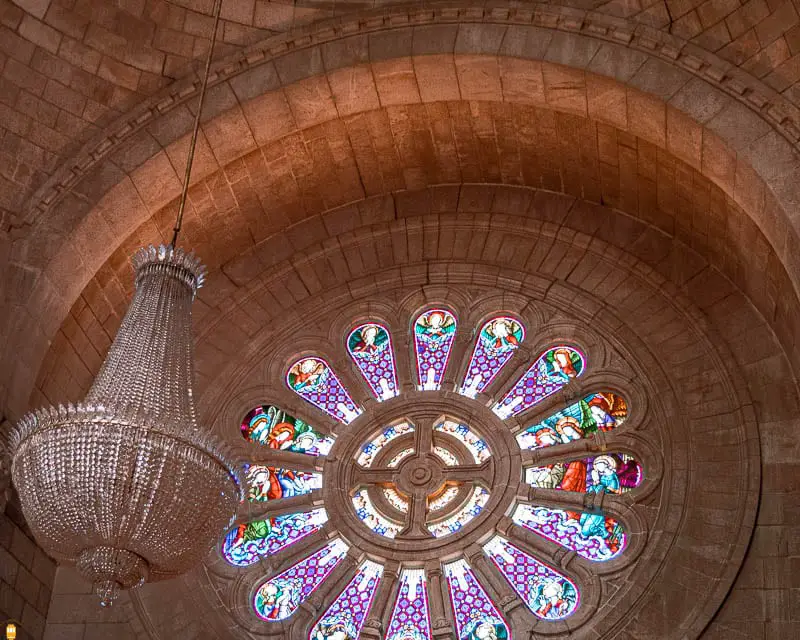
If you’re lucky and the basilica is open, enter and be amazed by its beauty; take the opportunity to climb up to the pinnacle from where you can enjoy the wonderful views over the city and surrounding area. A must-see!
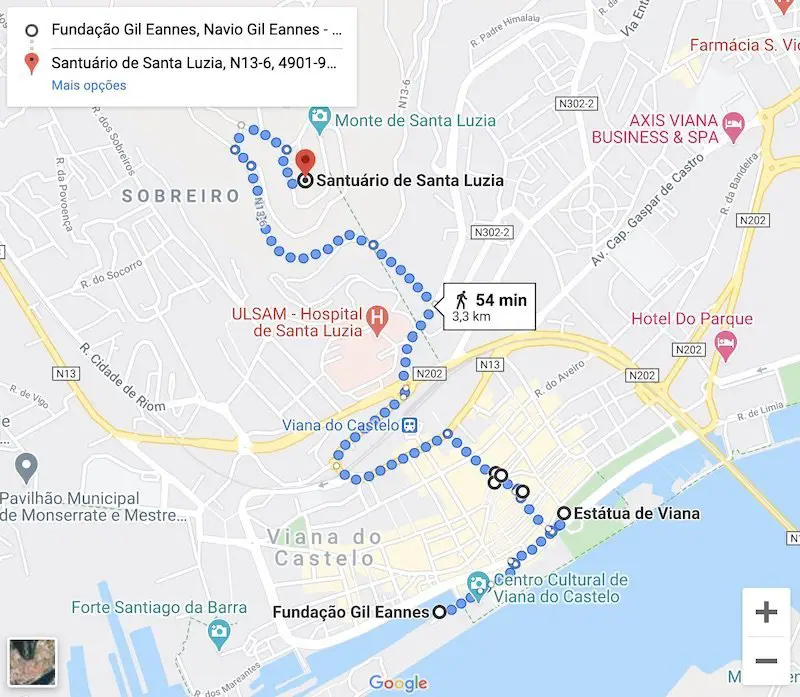
Information: you don’t want to hire a car nor prepare a tour to explore this region? If that’s the case and if you are staying in Porto, consider booking a guided tour to Alto Minho . Considered one of the most authentic regions of Portugal, here you will have the opportunity to start by discovering the beautiful city of Viana do Castelo.
There, take a walking tour to get to know the historic centre and admire the beautiful buildings as well as the medieval streets. The visit to this city will end with a stop at the sanctuary Santuário de Santa Luzia from where you can enjoy the magnificent views over the city and the Atlantic Ocean.
Next, this experience will take you to what is known as the oldest town in Portugal: Ponte de Lima. After lunch, get to know the unique atmosphere of this town and be sure to cross the landmark that gave the name to this place, the beautiful Roman and medieval bridge.
To end your tour to Alto Minho, you will also follow the Lima river through the mountains of the Peneda-Gerês National Park where you will have a last stop at a village where you will savour the tasty Verde wine.
Information: if you visit Northern Portugal and, in particular, Viana do Castelo in August, know that you can enjoy the biggest Portuguese pilgrimage in honor of Nossa Senhora da Agonia.
Among other reasons, make sure you watch the procession Desfile da Mordomia, a parade in which 400 women participate, dressed in typical clothes and wearing several gold pieces.
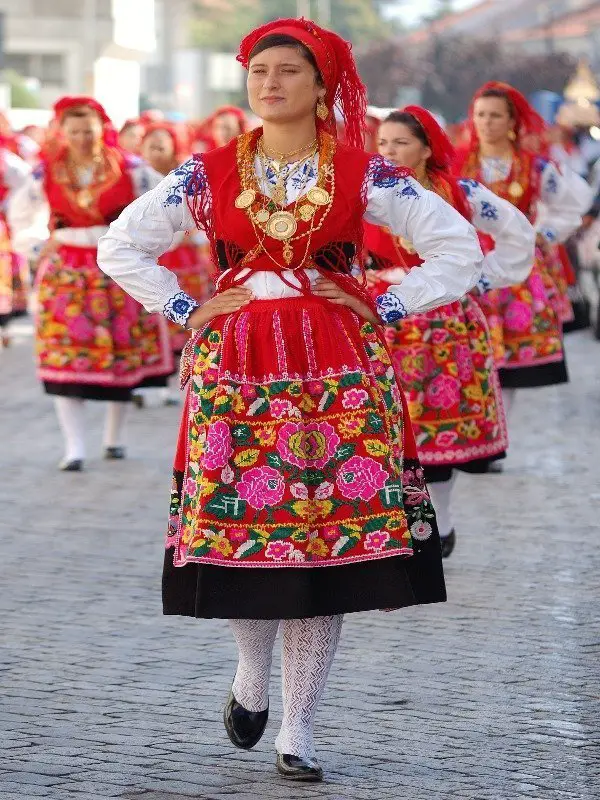
If you’re visiting Northern Portugal in the hottest months, don’t hesitate to make a stop in one of its beautiful beaches. In Viana do Castelo, you can go to the beaches Praia Norte and Praia do Cabedelo.
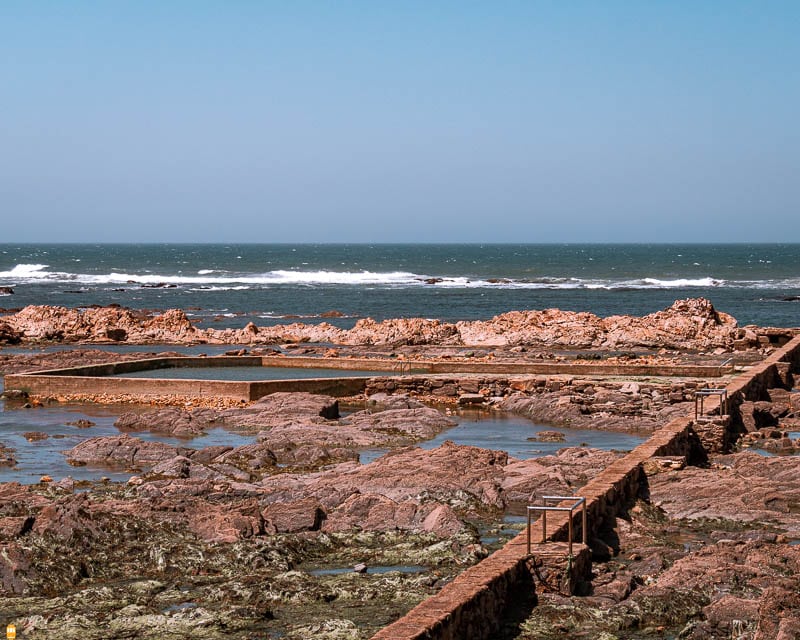
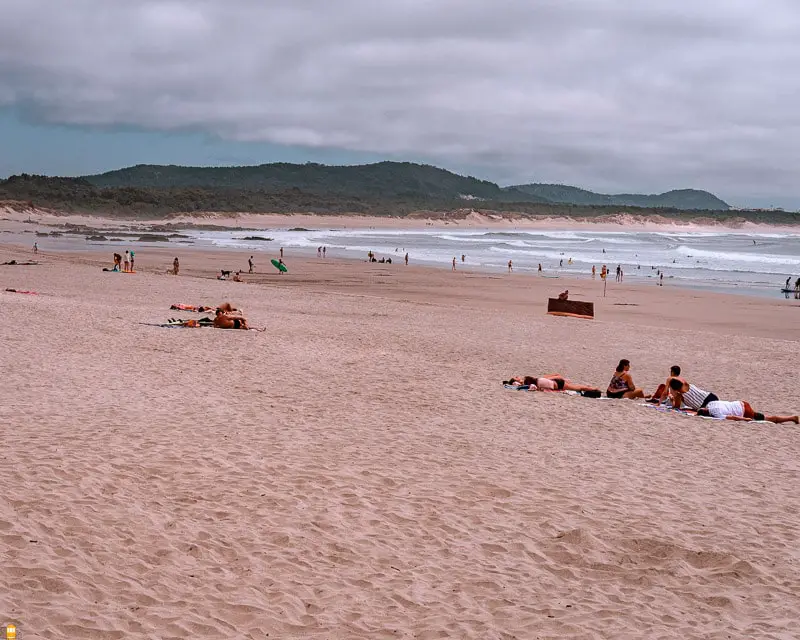
As an alternative, when returning to Porto, you can stop at the beautiful town of Apúlia, in Esposende municipality and 35 km south of Viana do Castelo historic centre.
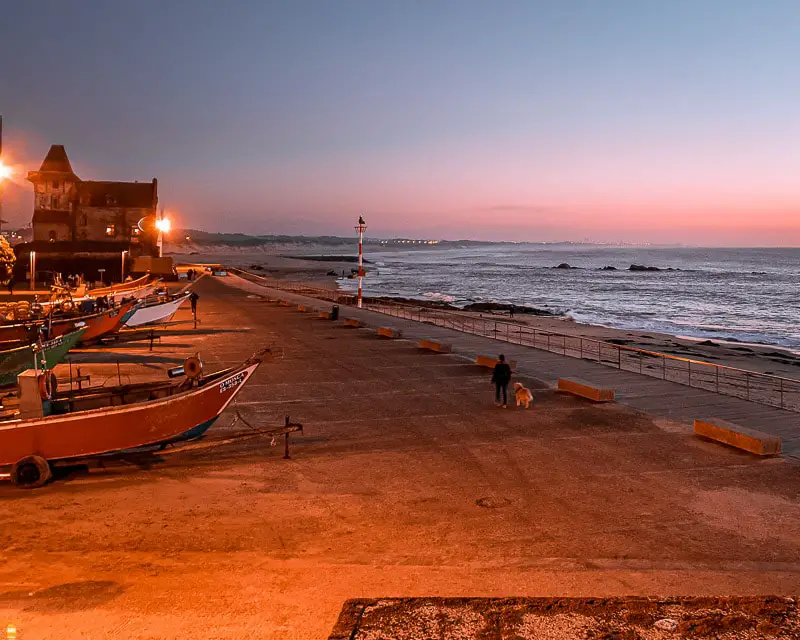
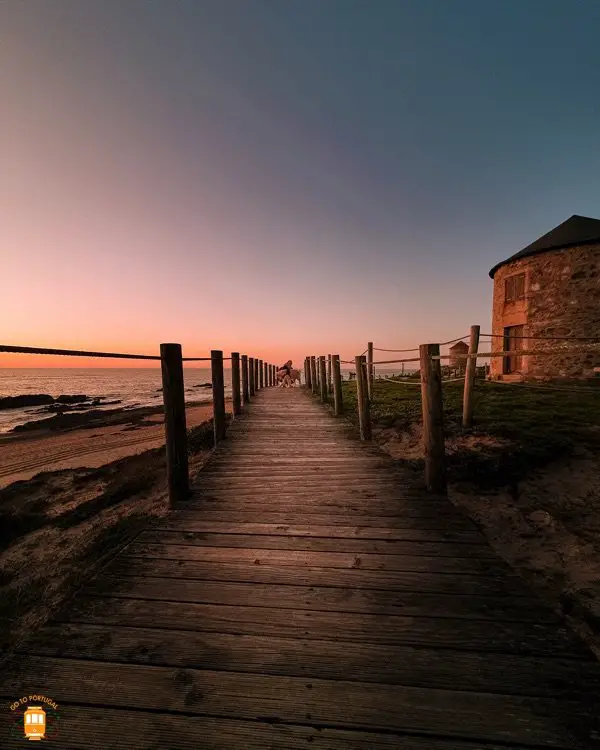
Here, you can enjoy some relaxing moments at the beach or go for a walk along the wooden walkway to admire the windmills located on top of the dunes. This is definitely one last treasure to discover before wrapping up your Northern Portugal travel guide.
As you can see, there are plenty of reasons why you should visit Northern Portugal and Minho province. From Porto and Viana do Castelo, to Guimarães, Braga and Ponte de Lima, there are many wonders you can discover in this region in just a week.
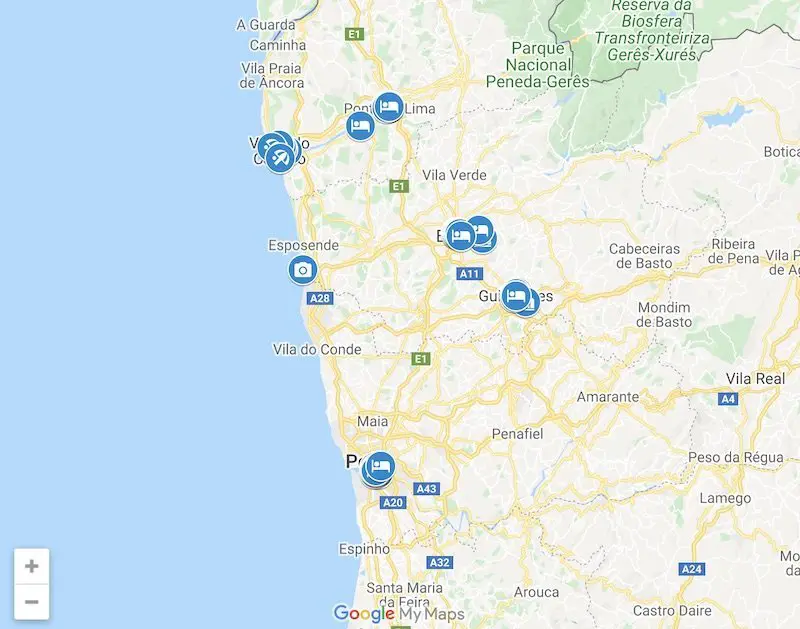
Are you going to visit Porto and Minho province? Then don’t hesitate to book your hotel room, your car or the best activities by clicking the links below. This way you are helping me in the development of my blog and I’ll be able to offer you free tips and travel guides so that you can better prepare your visit to Portugal. Thank you!

